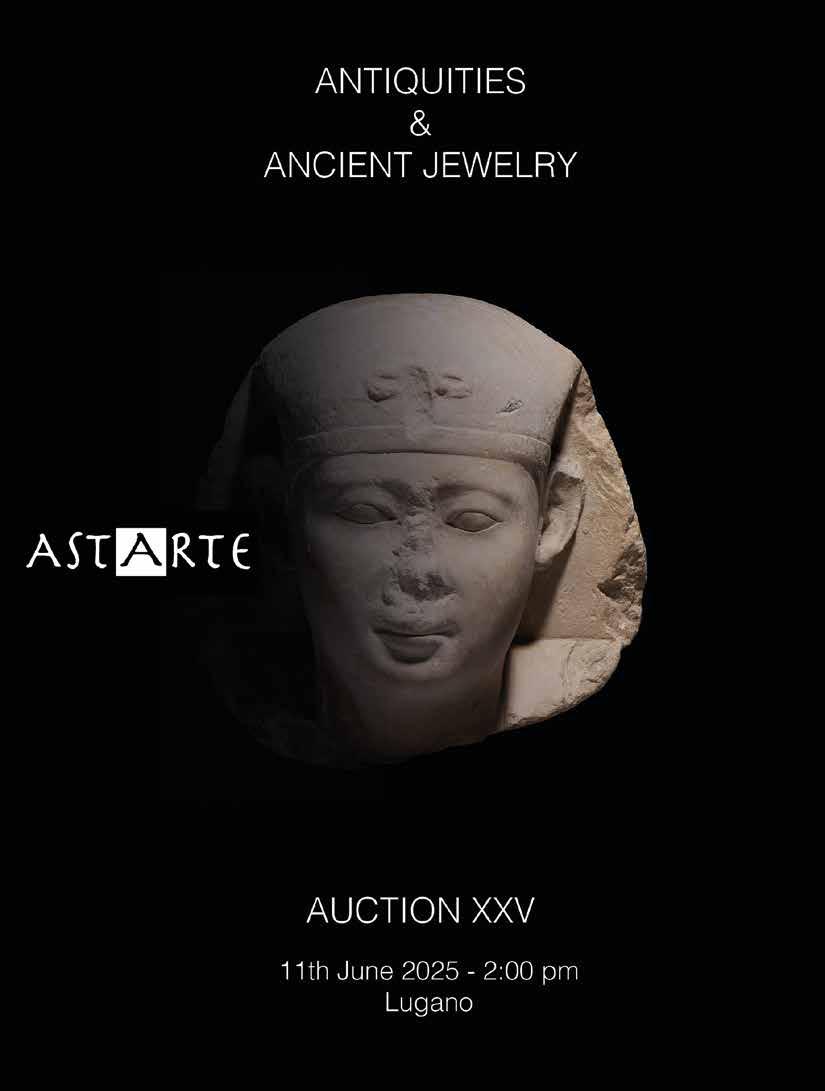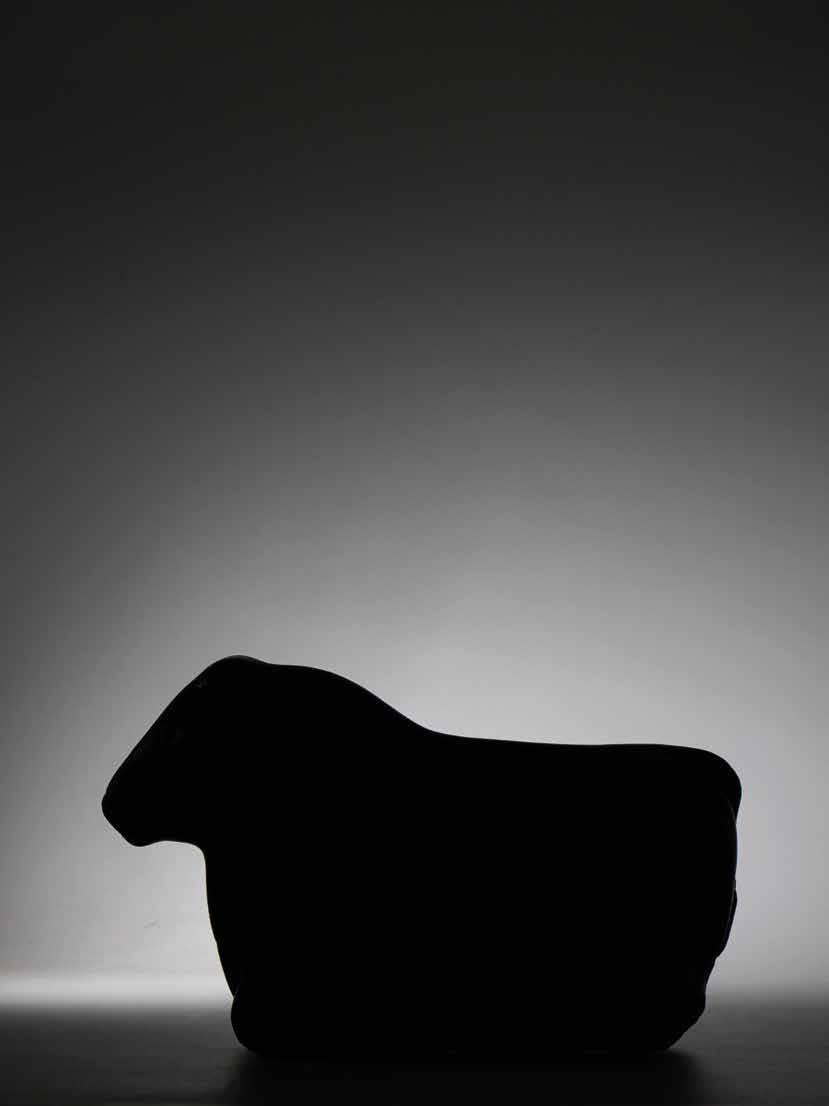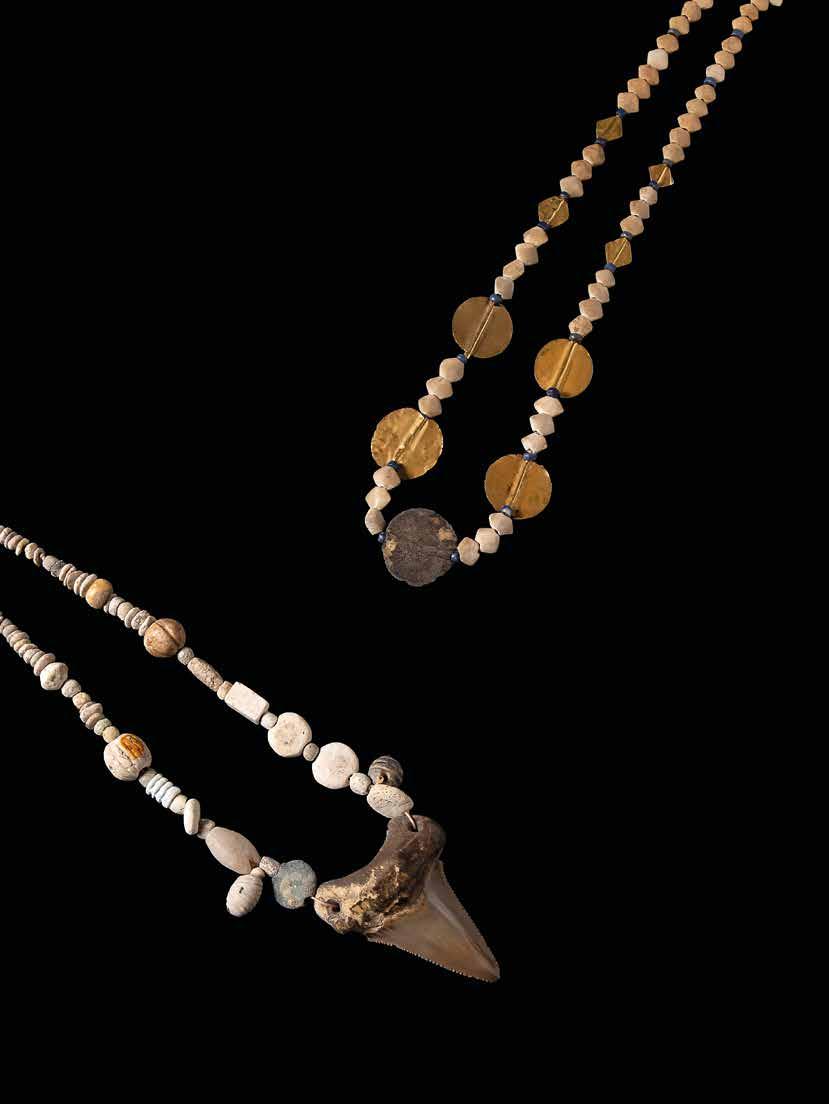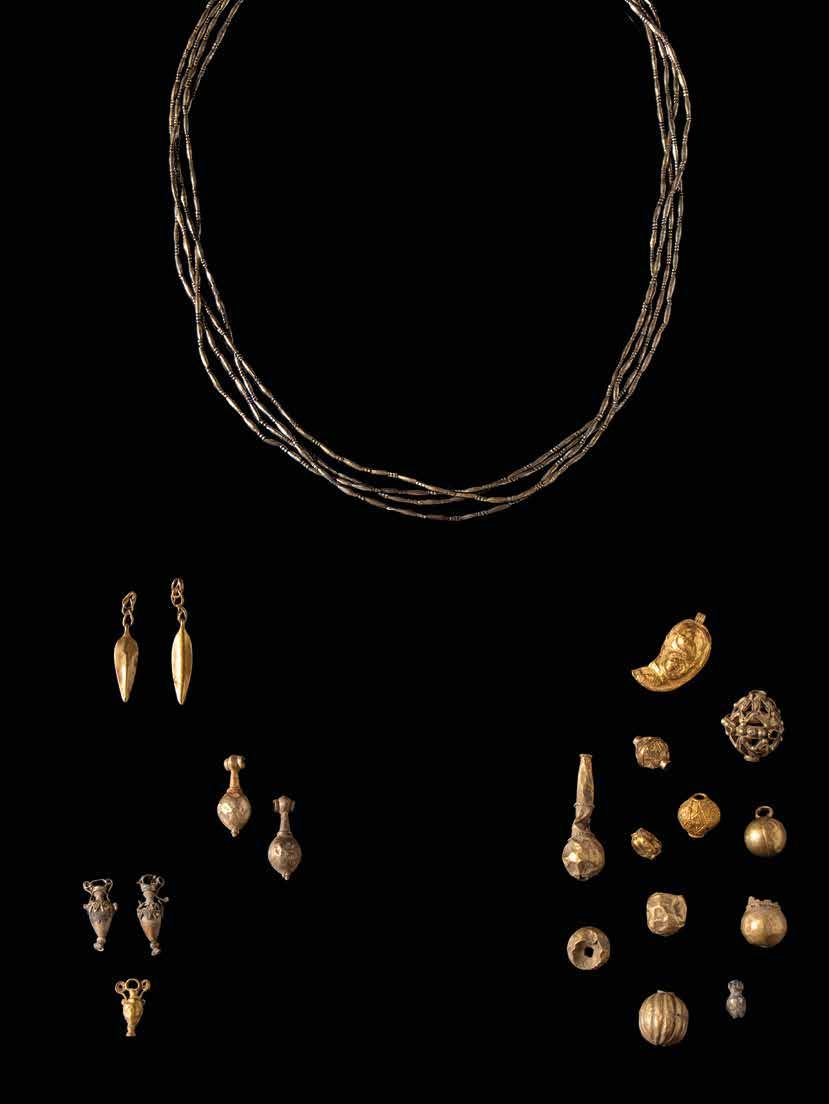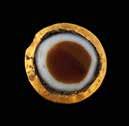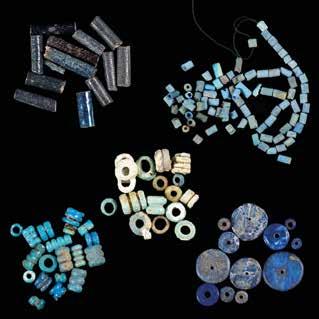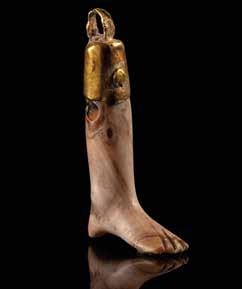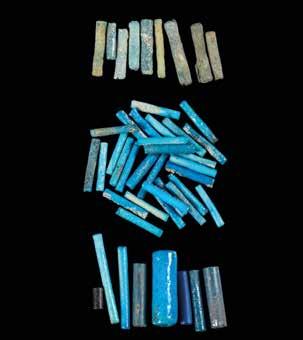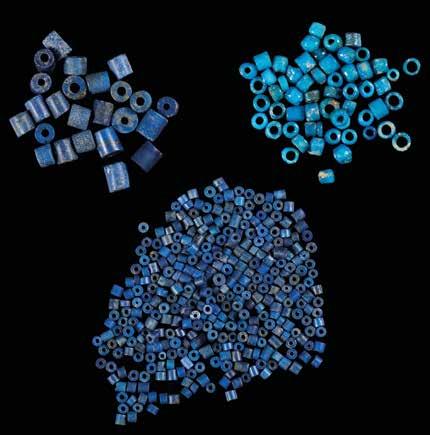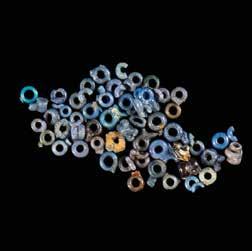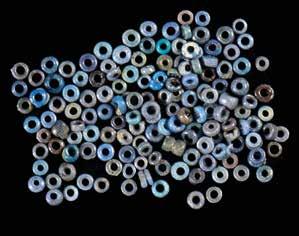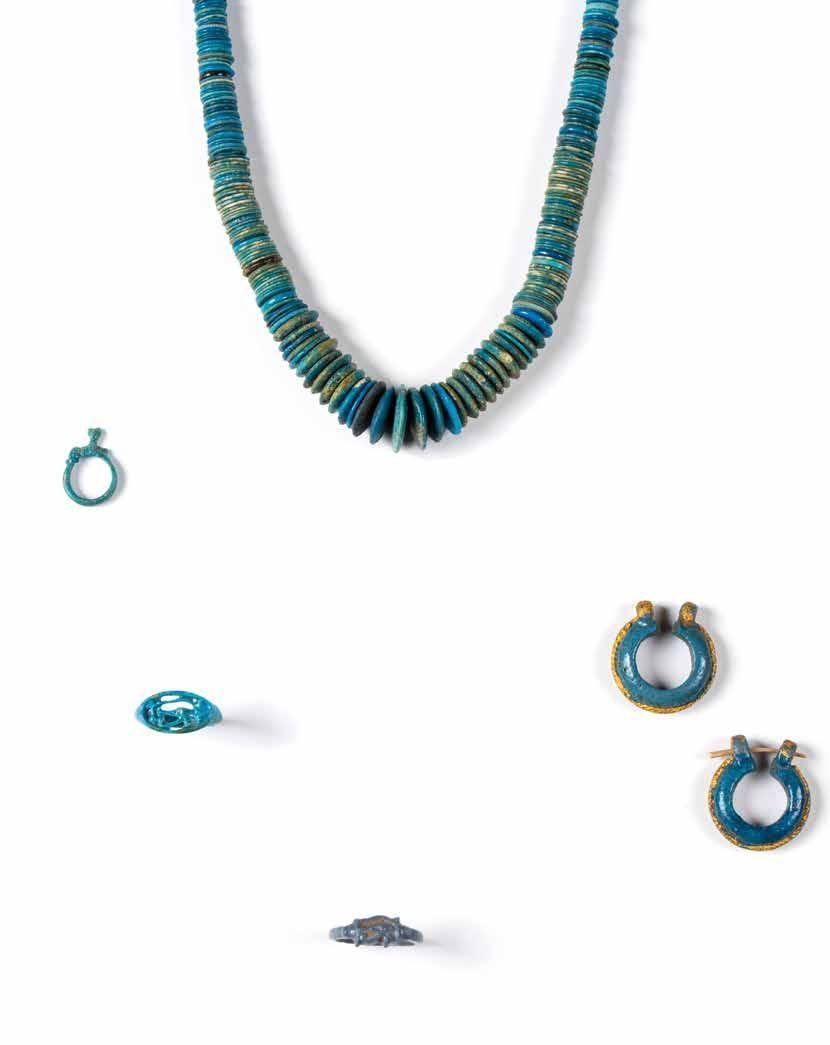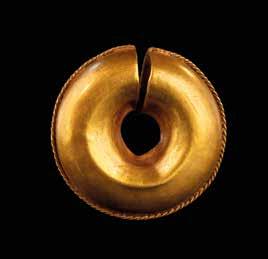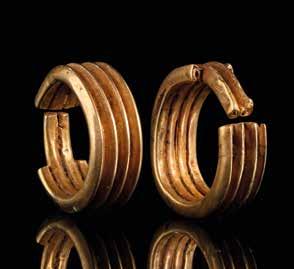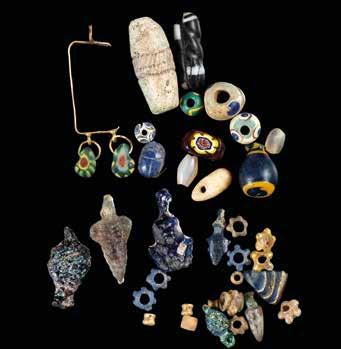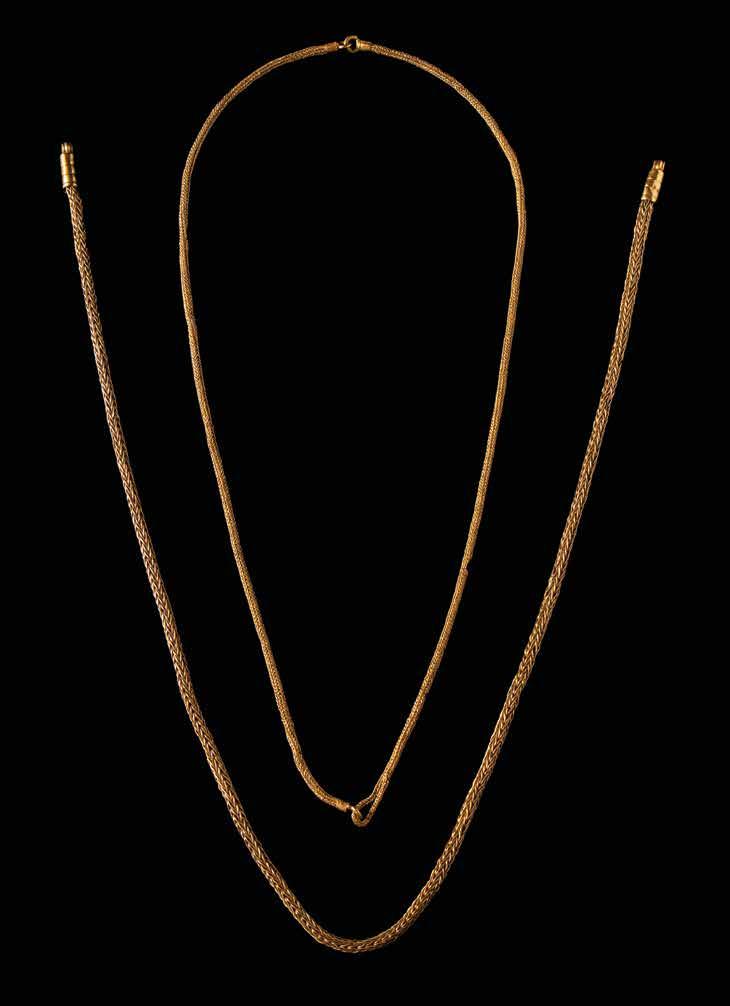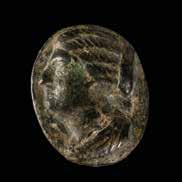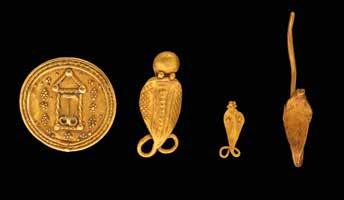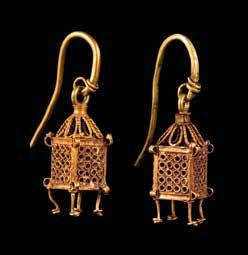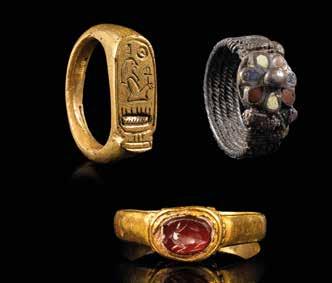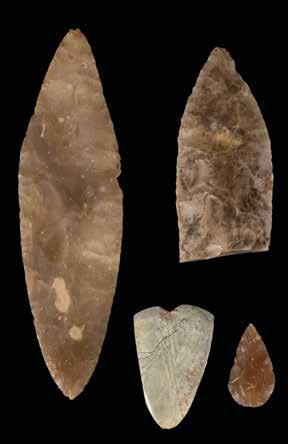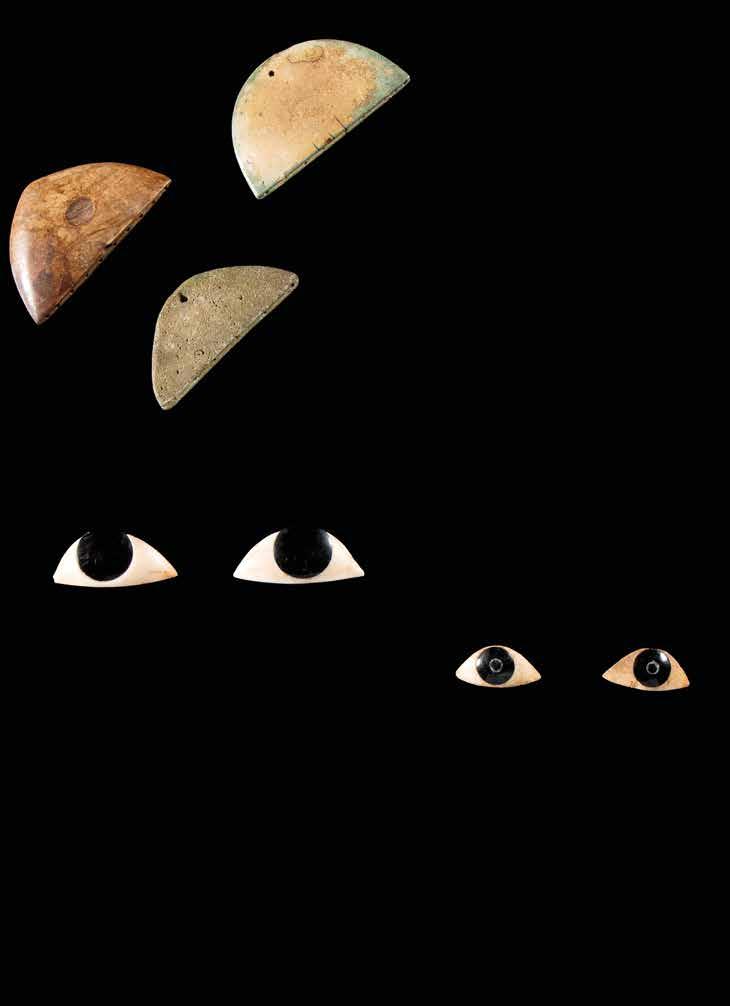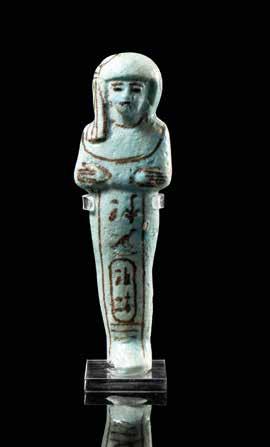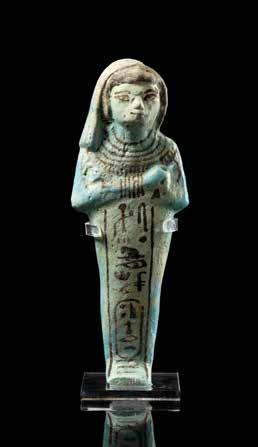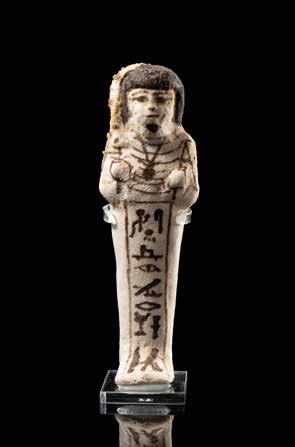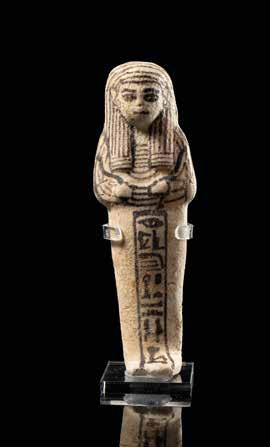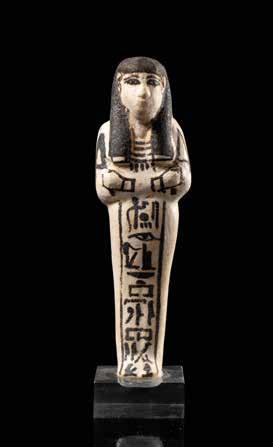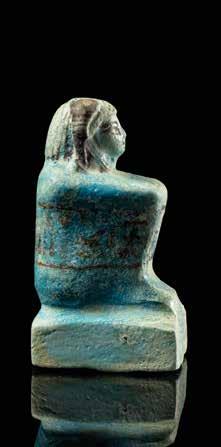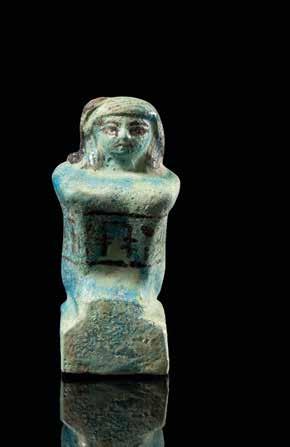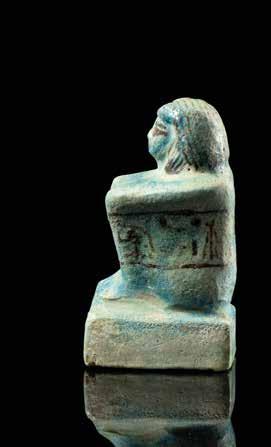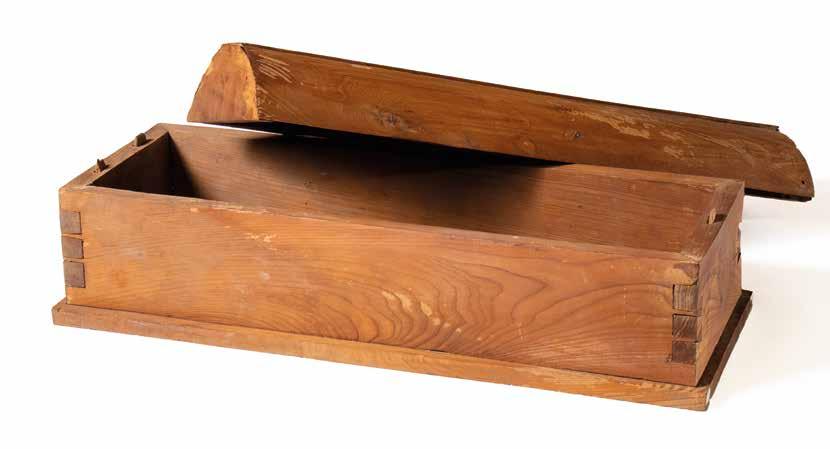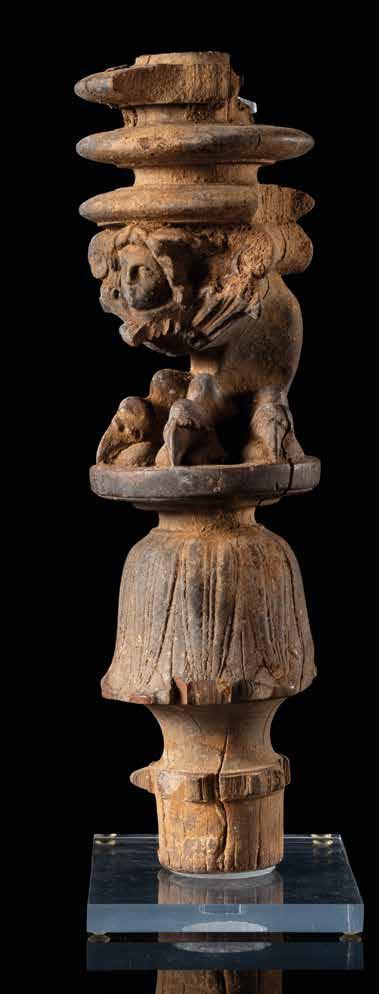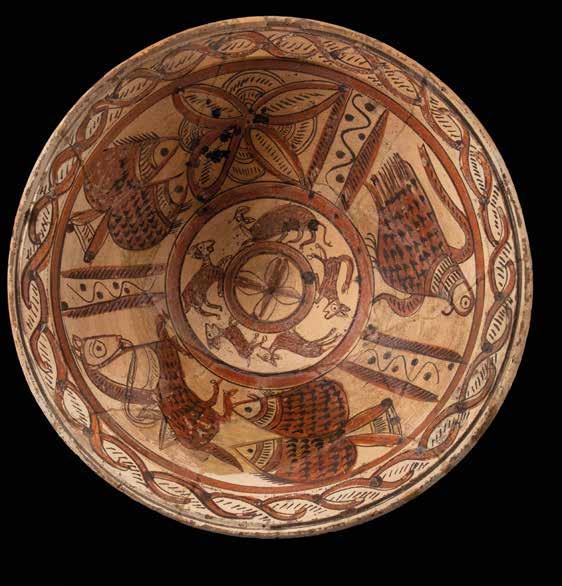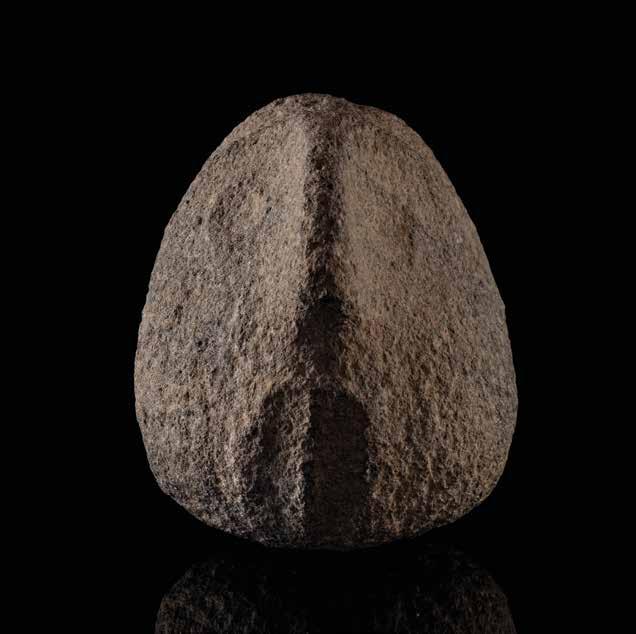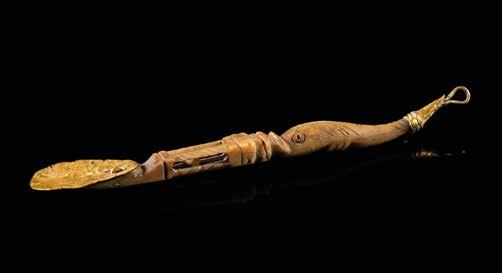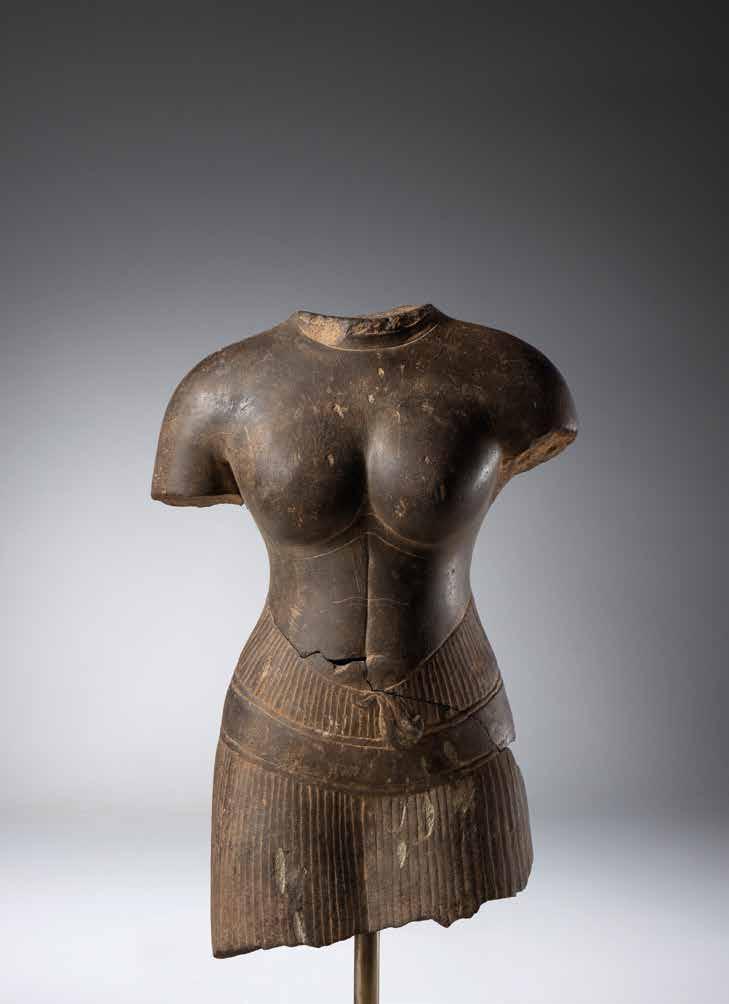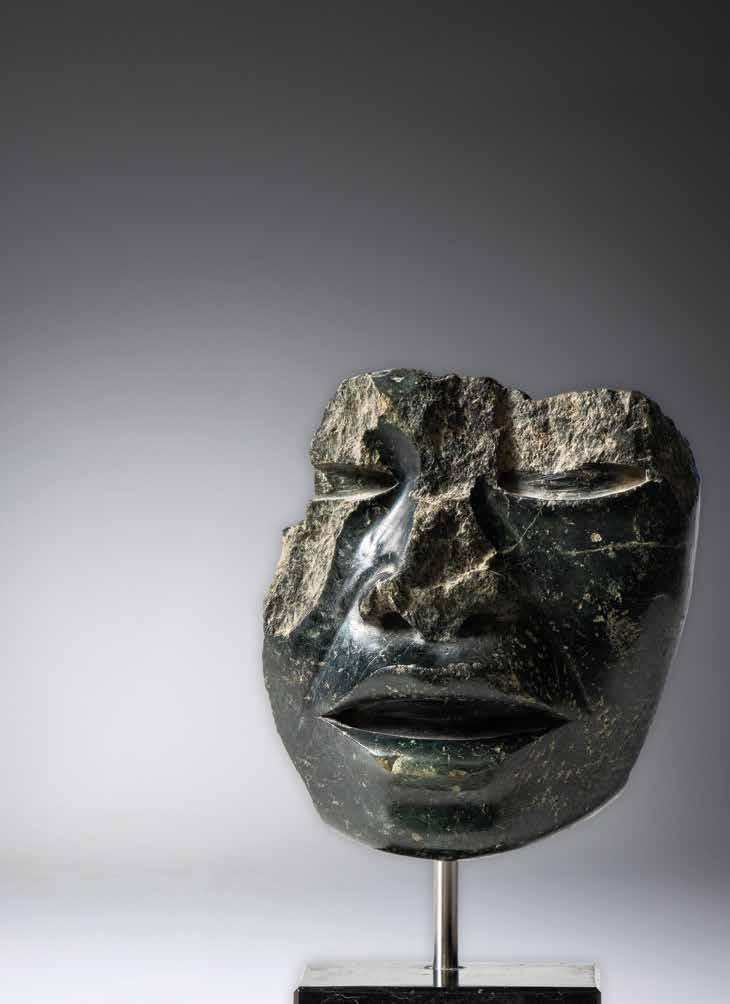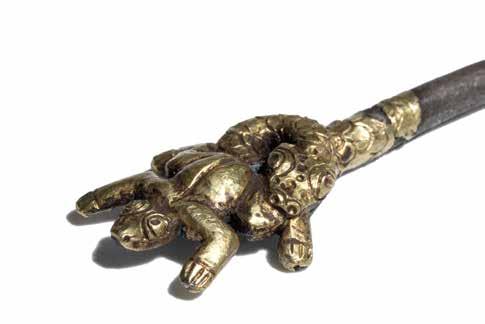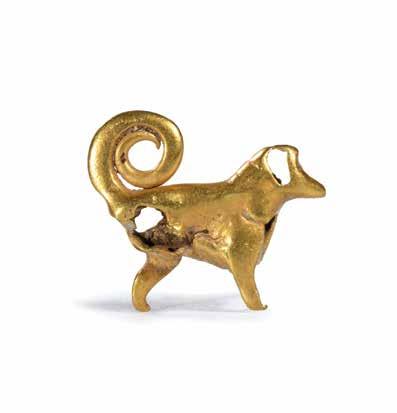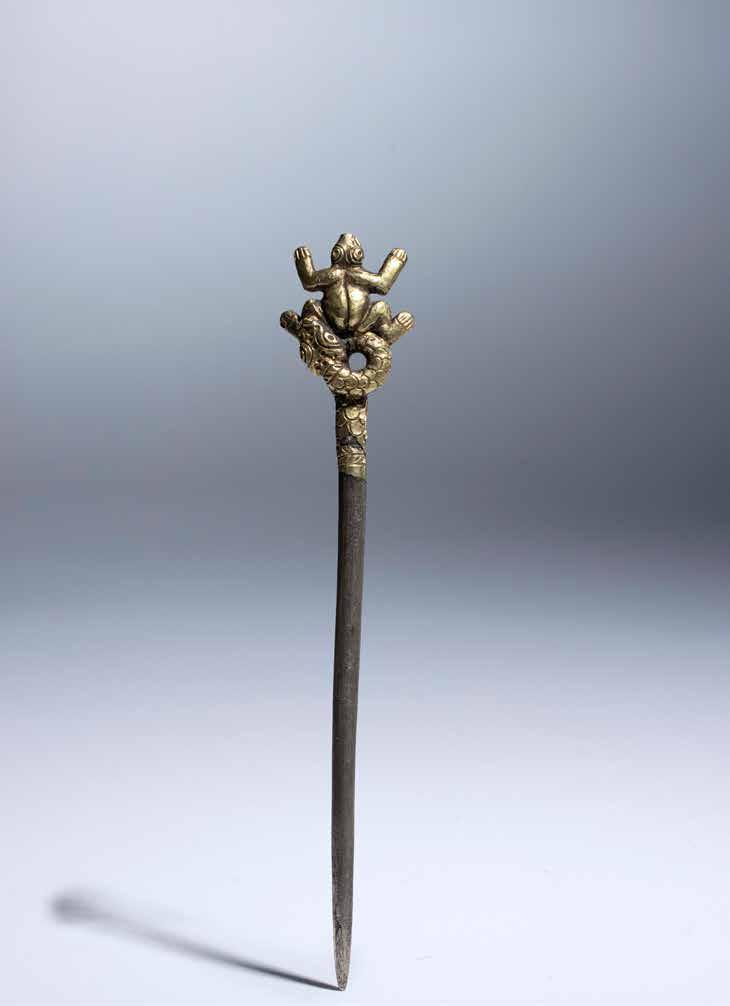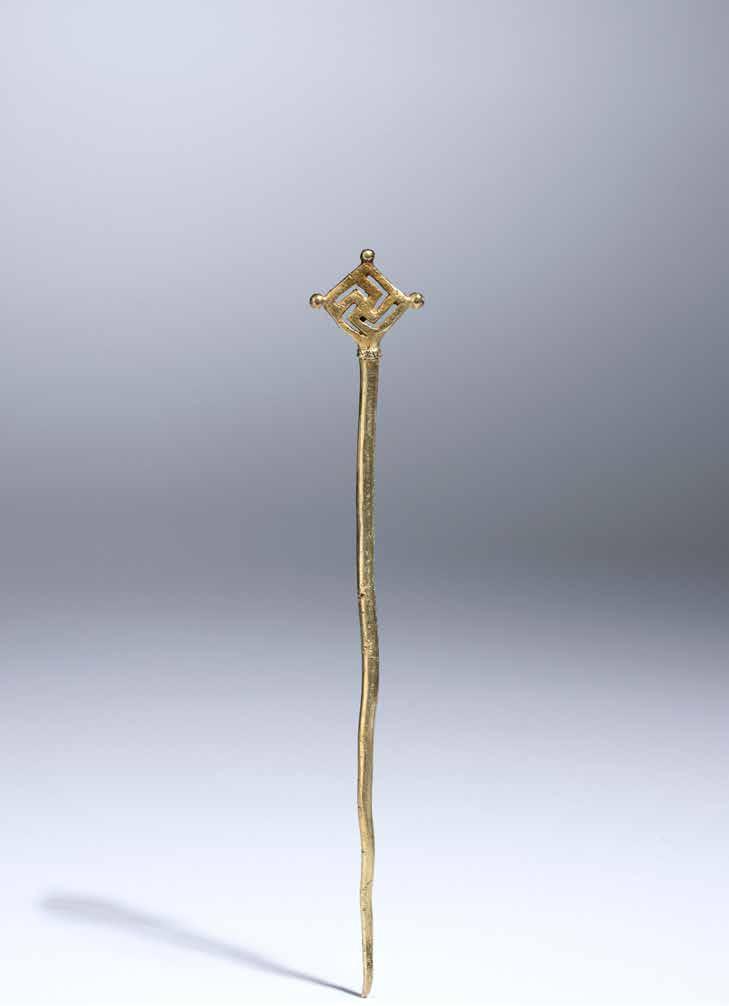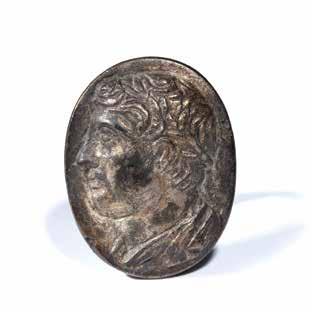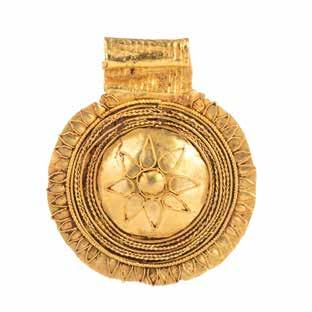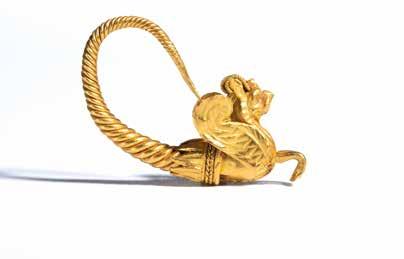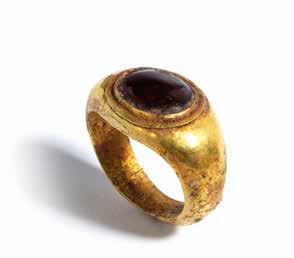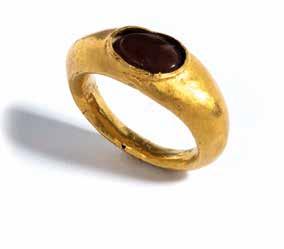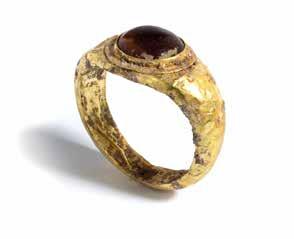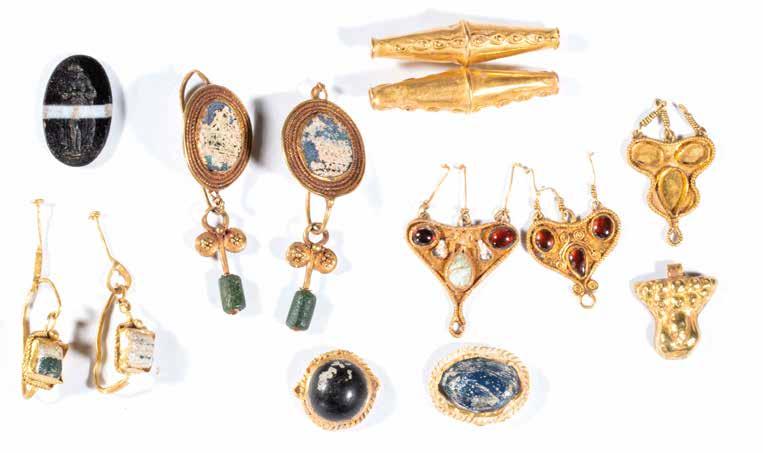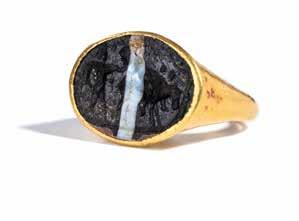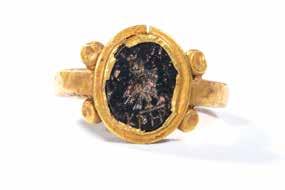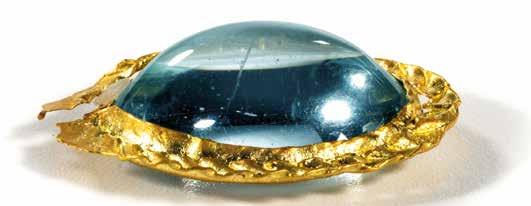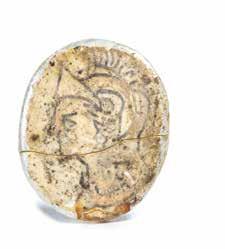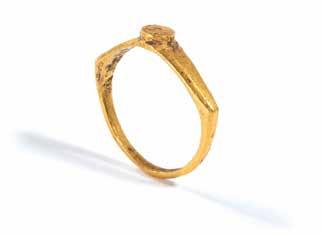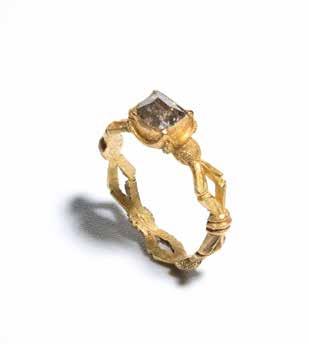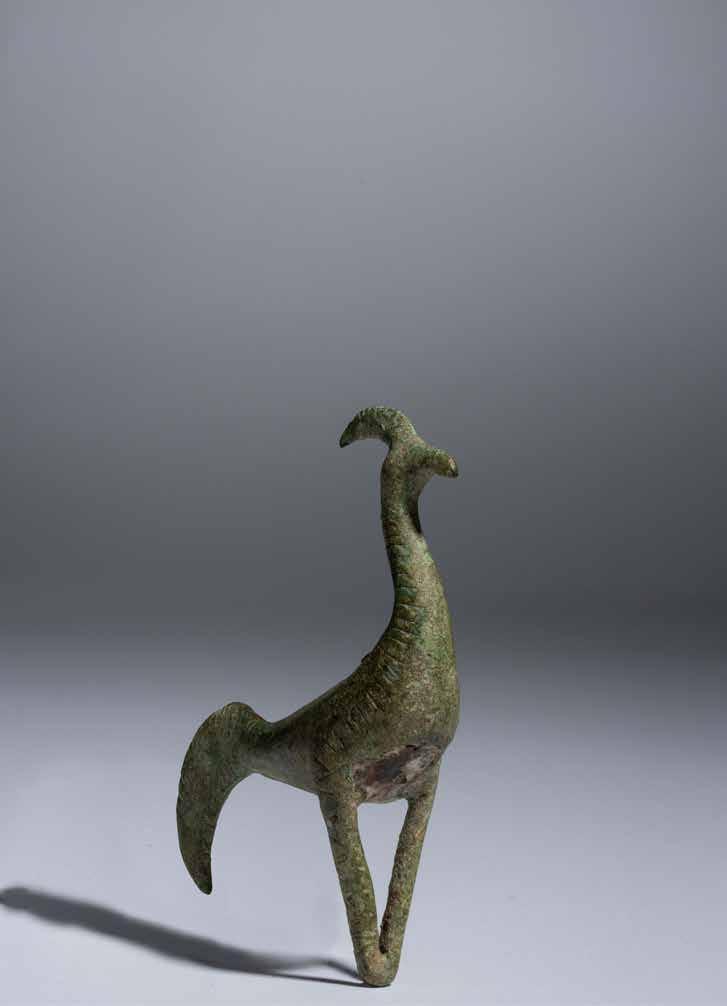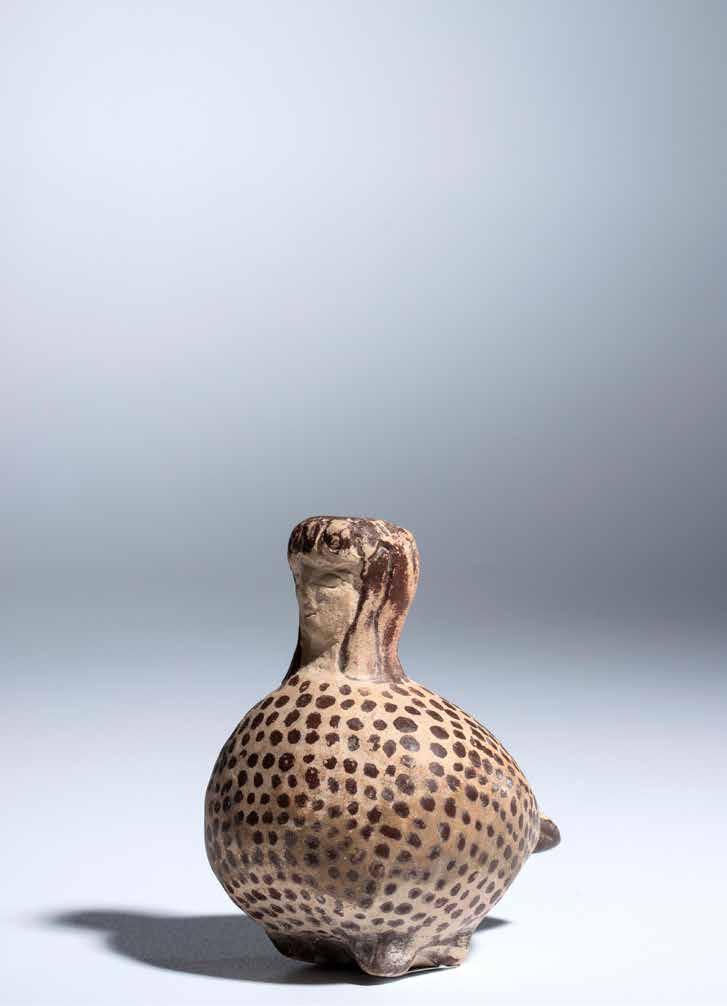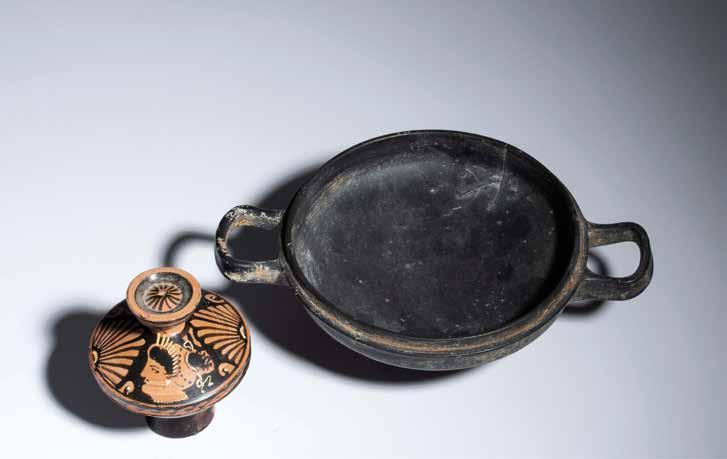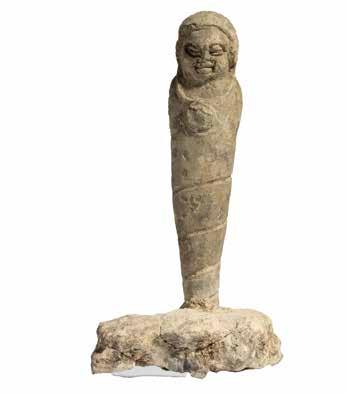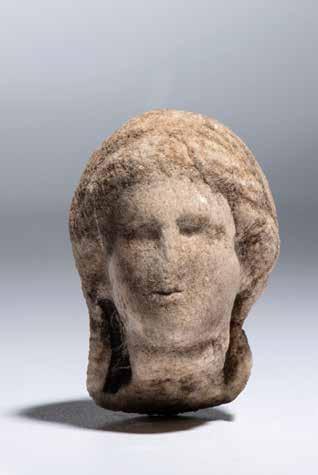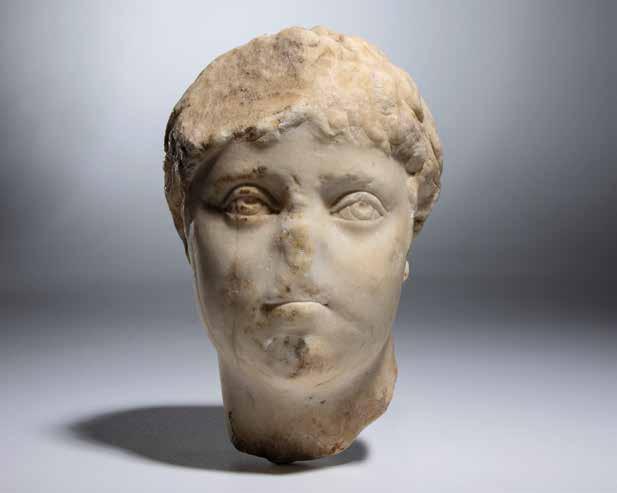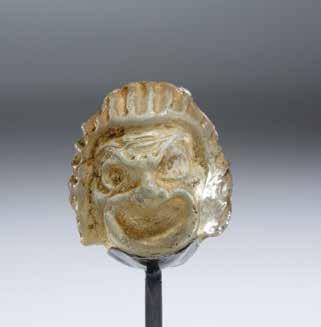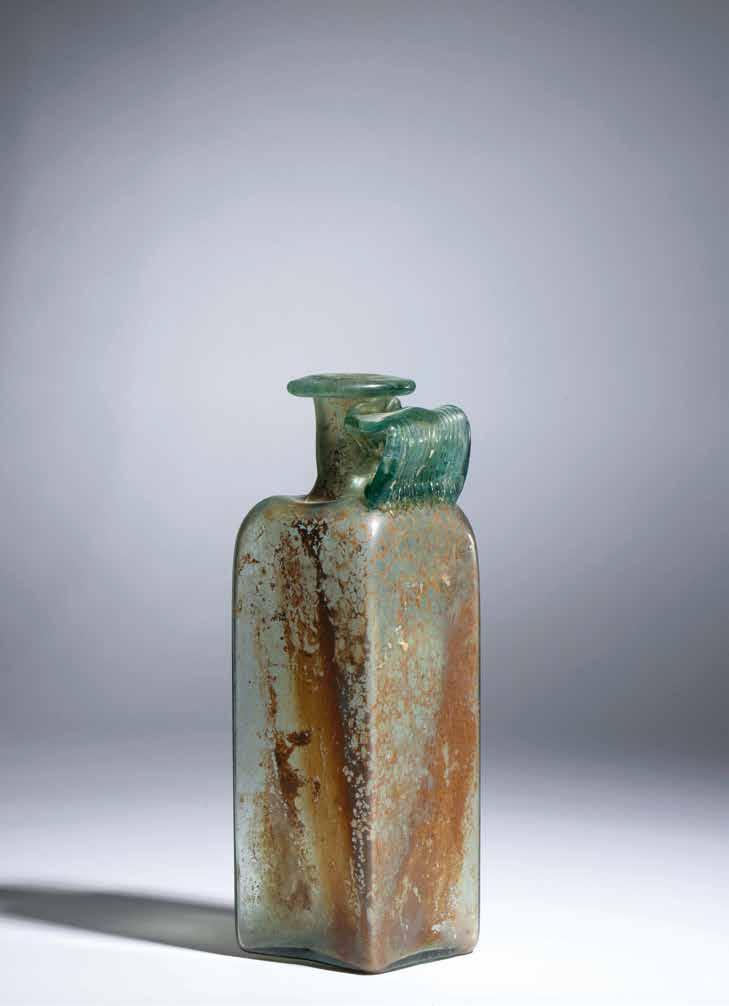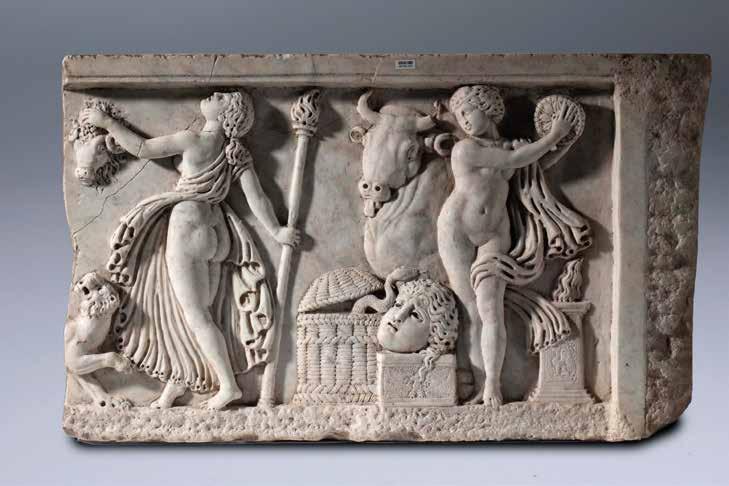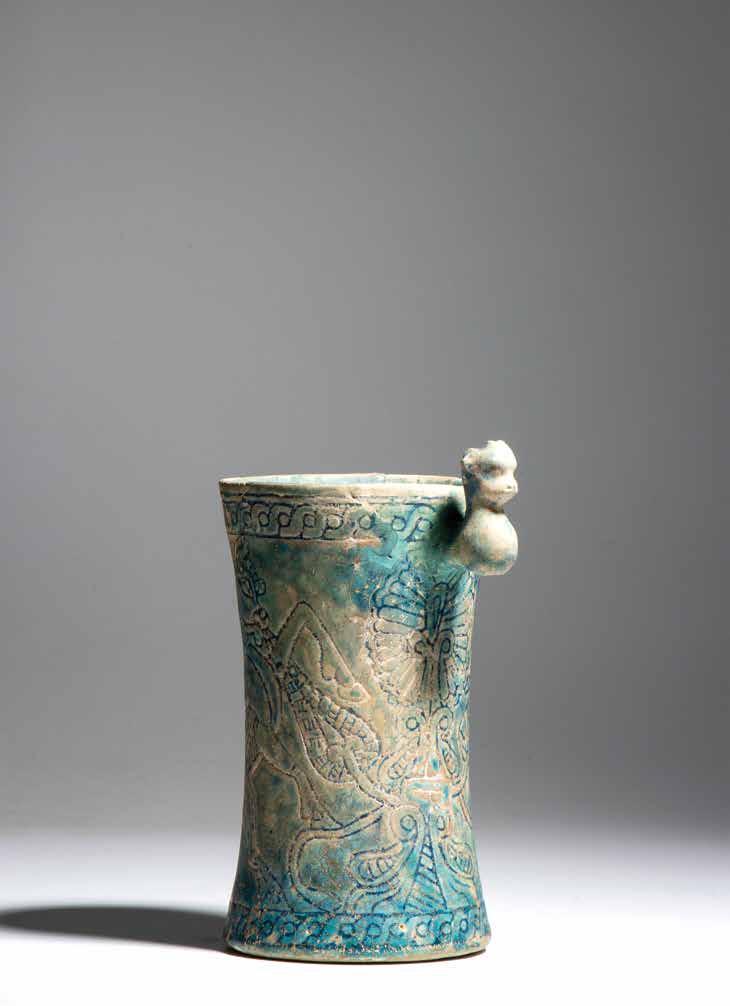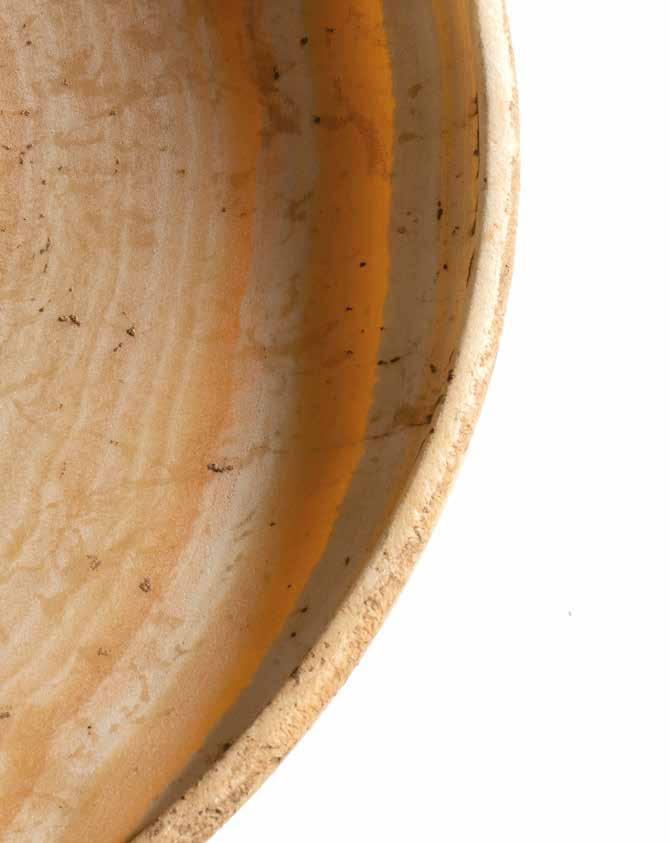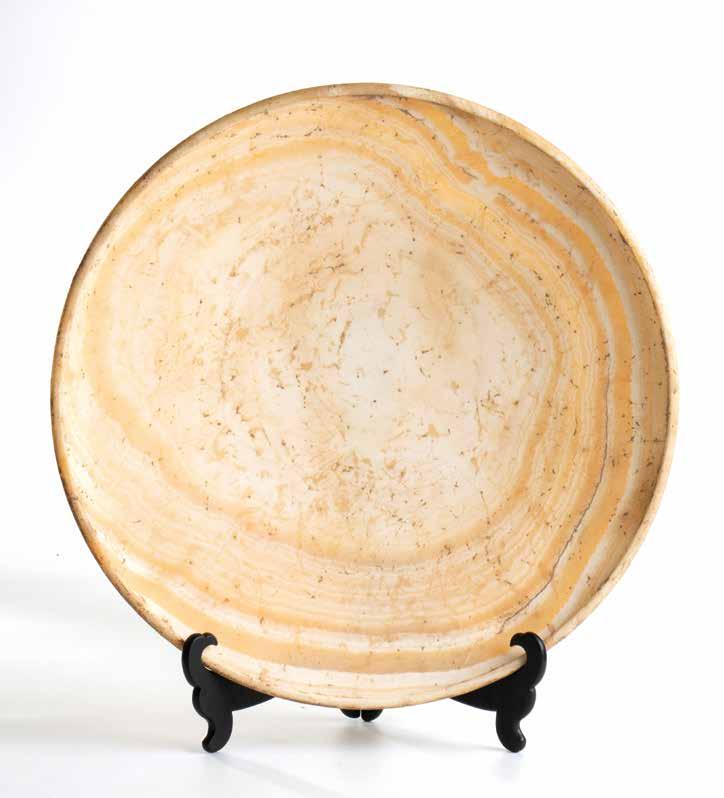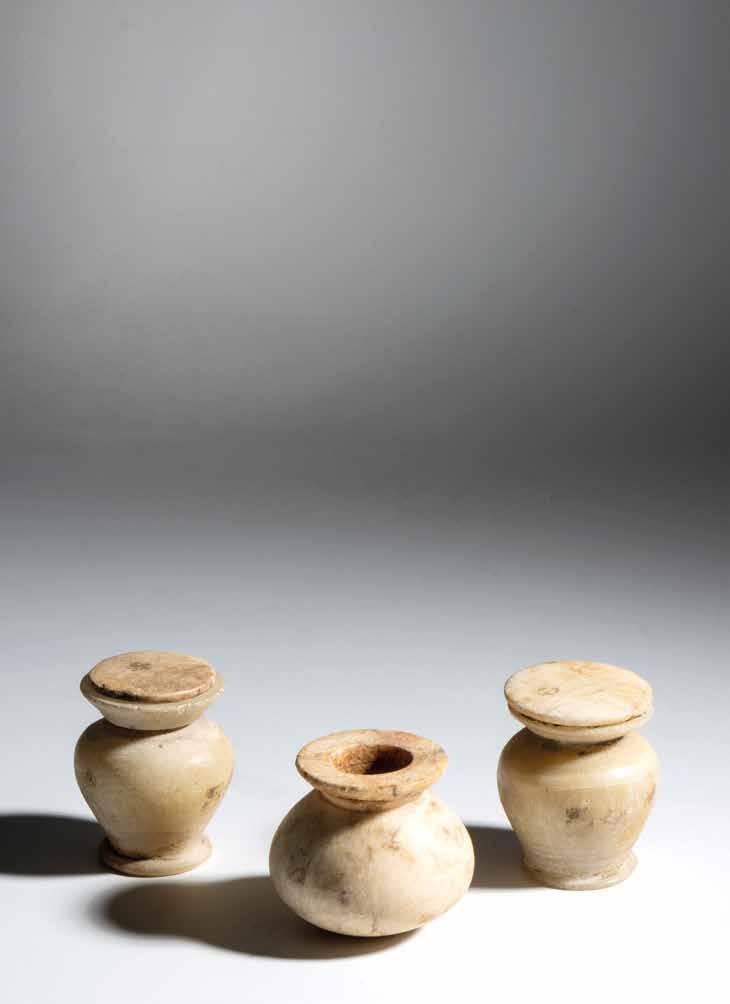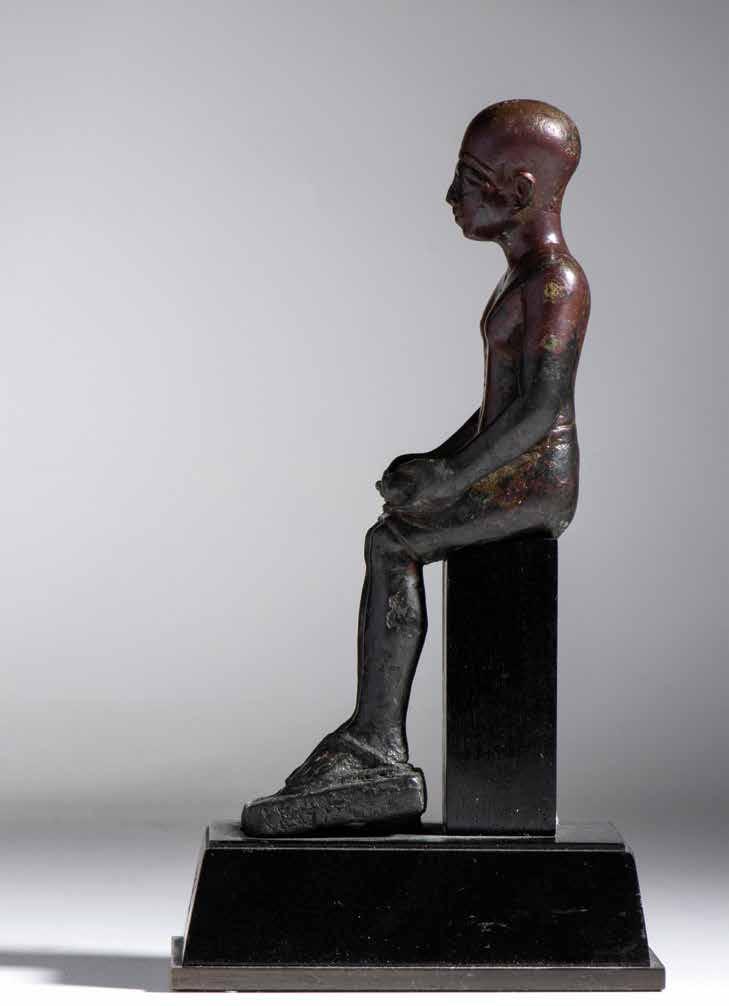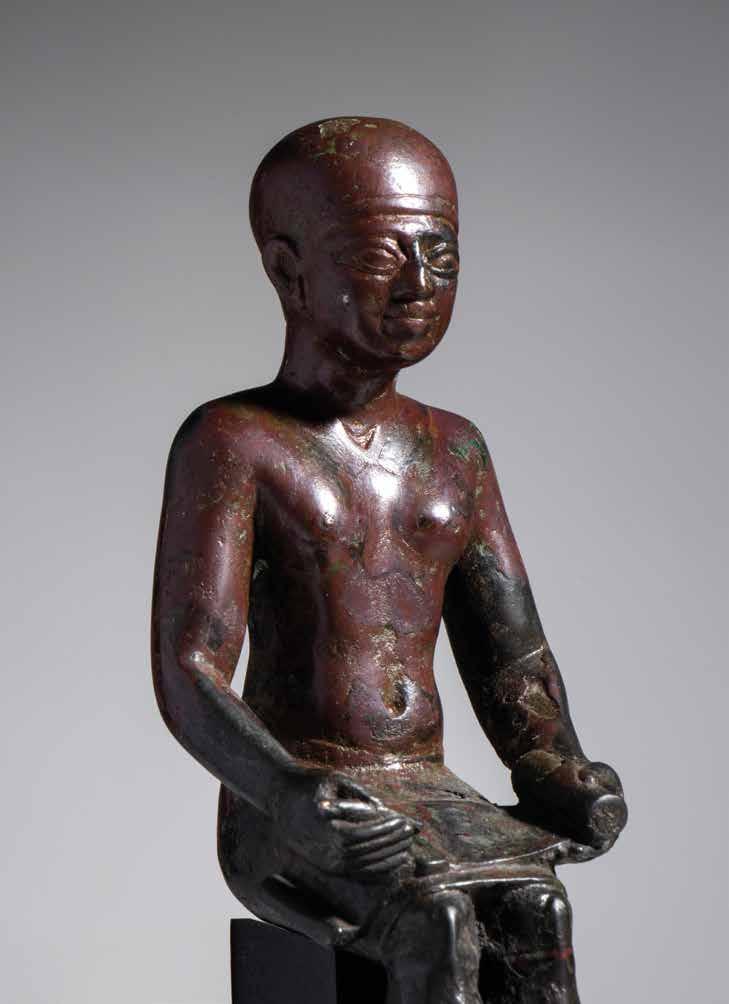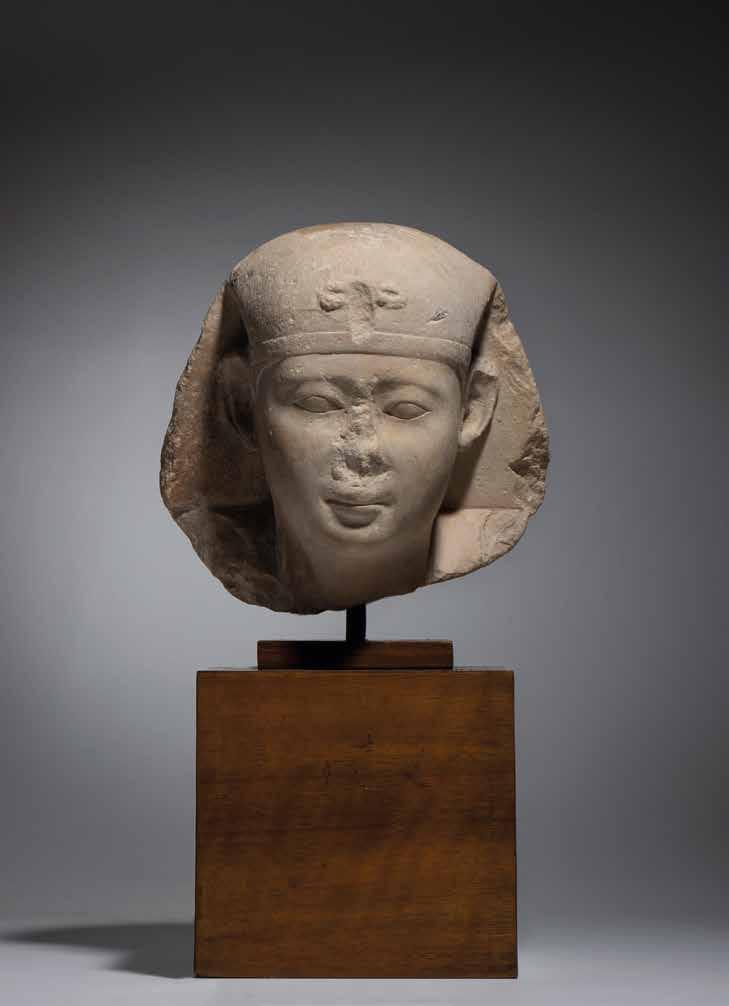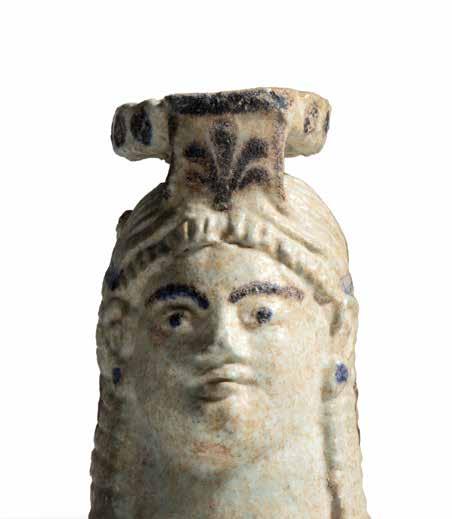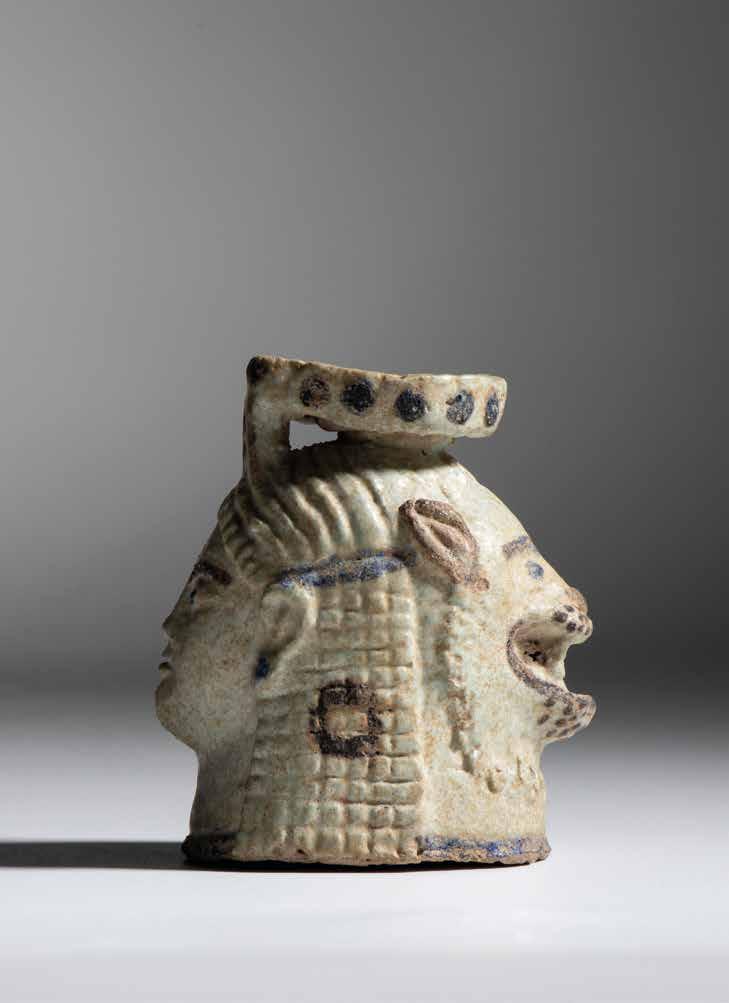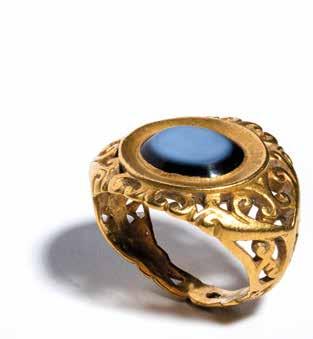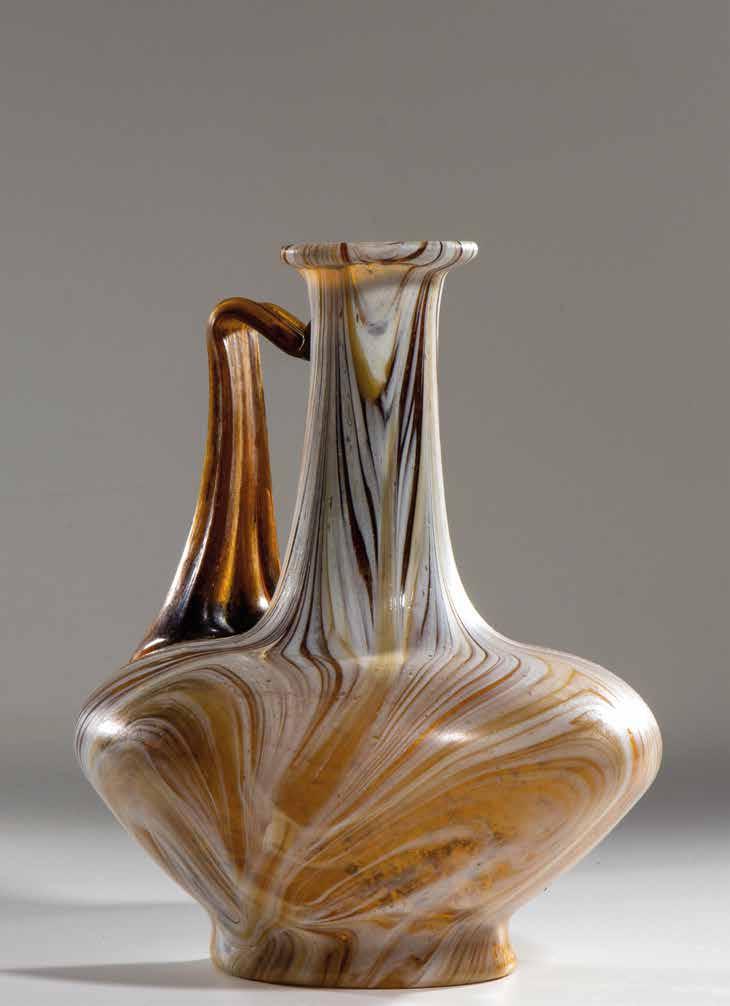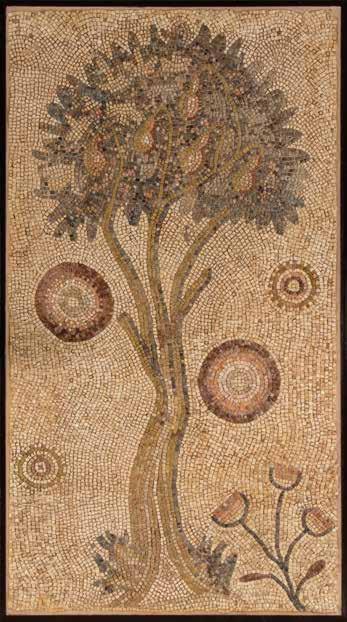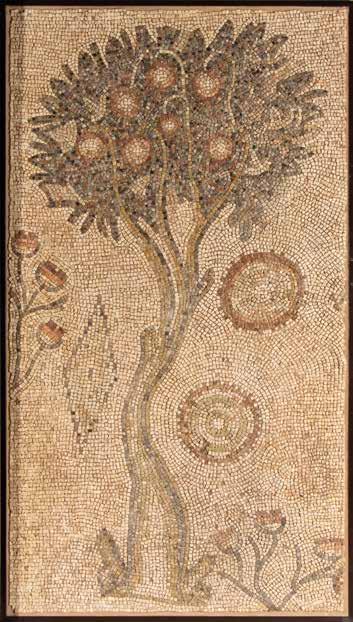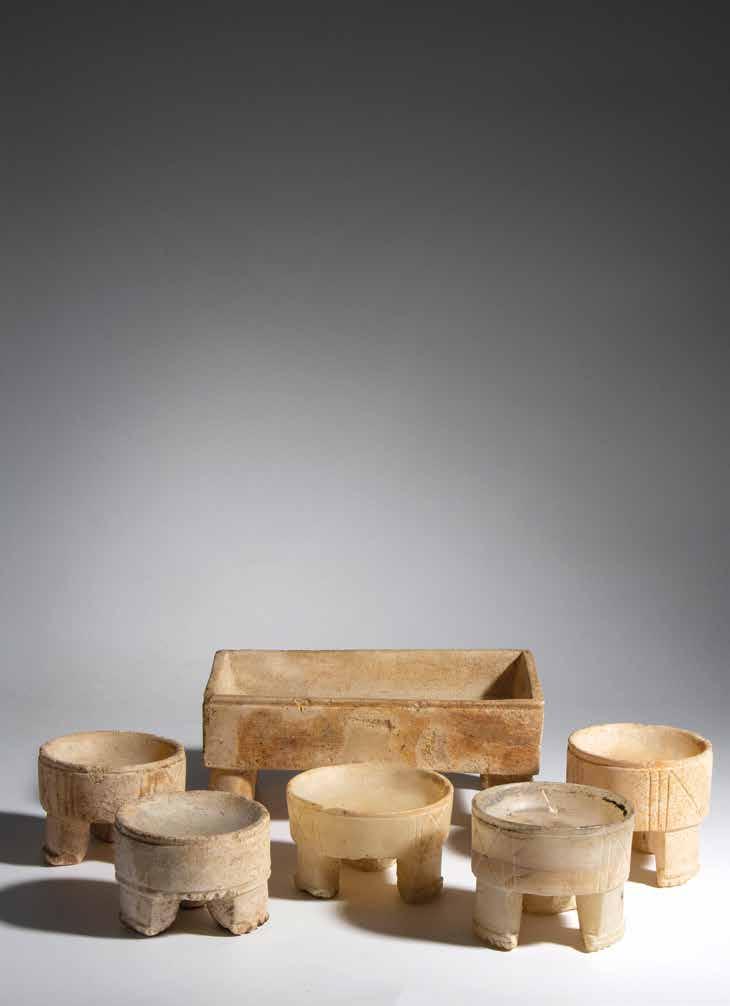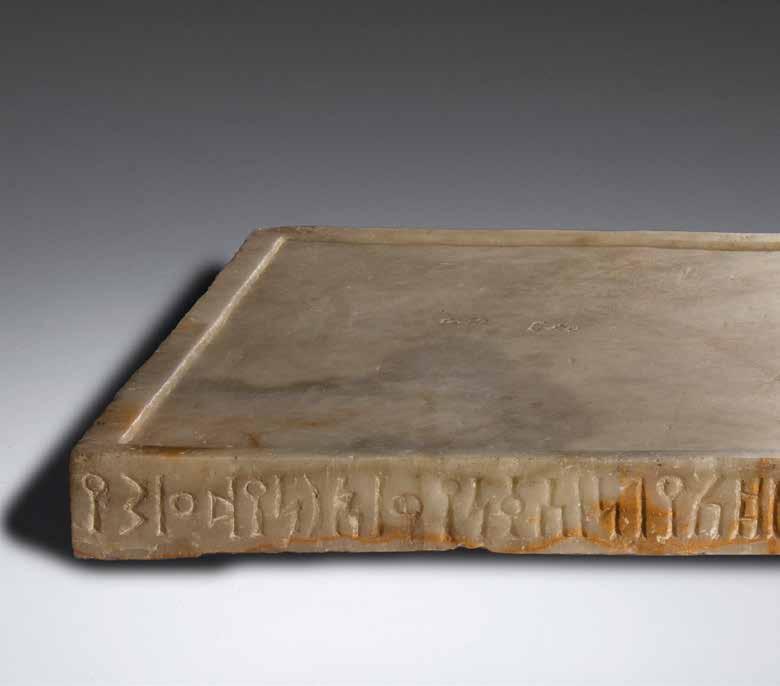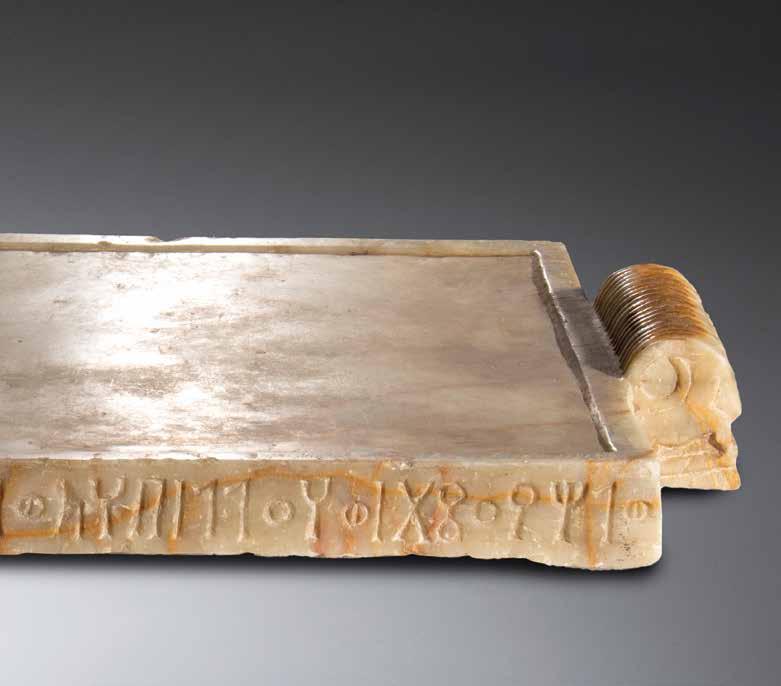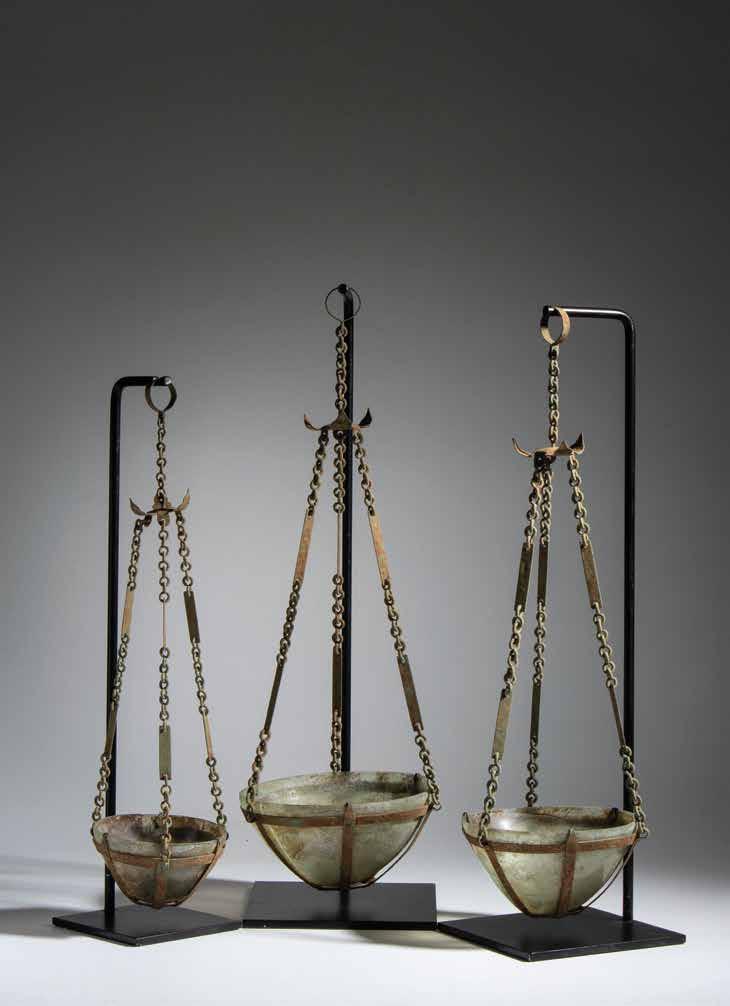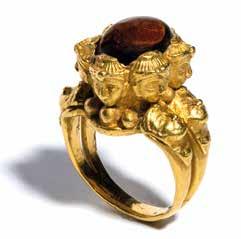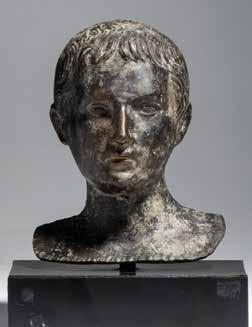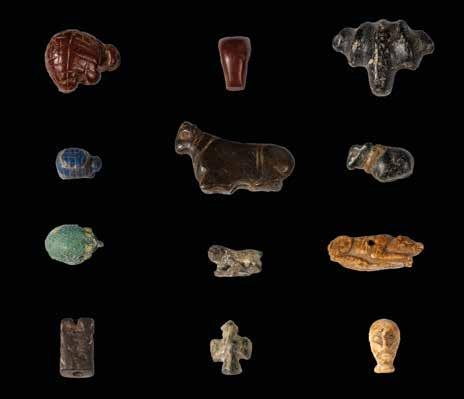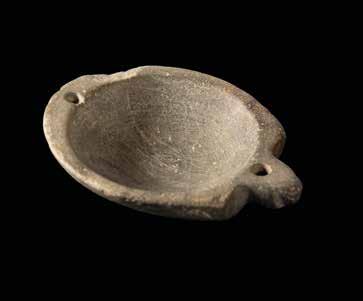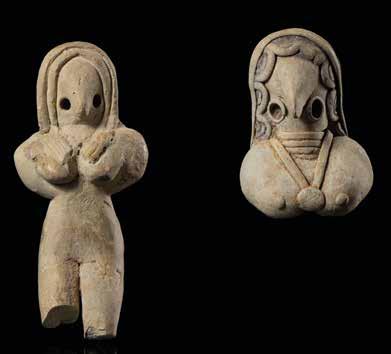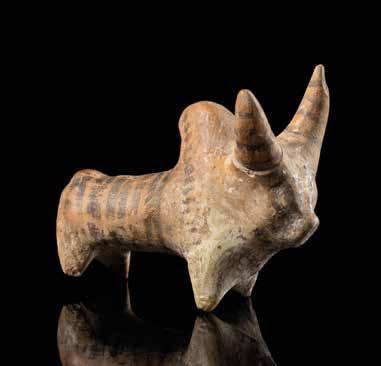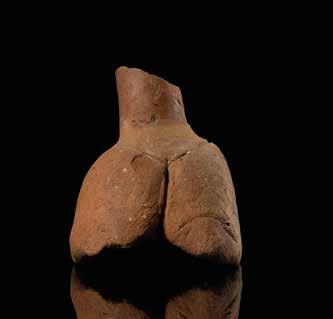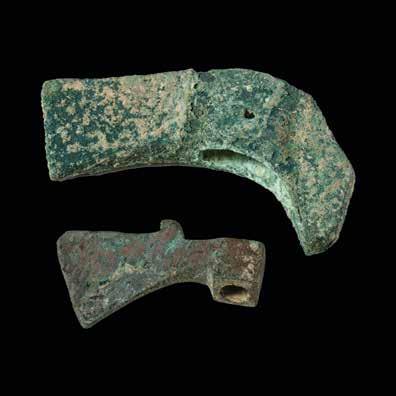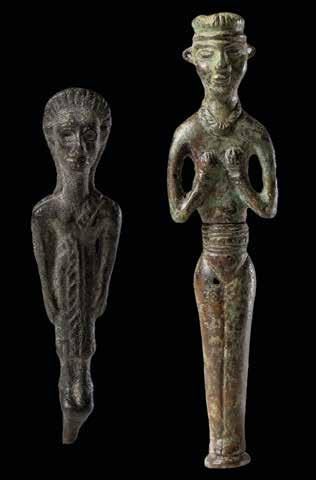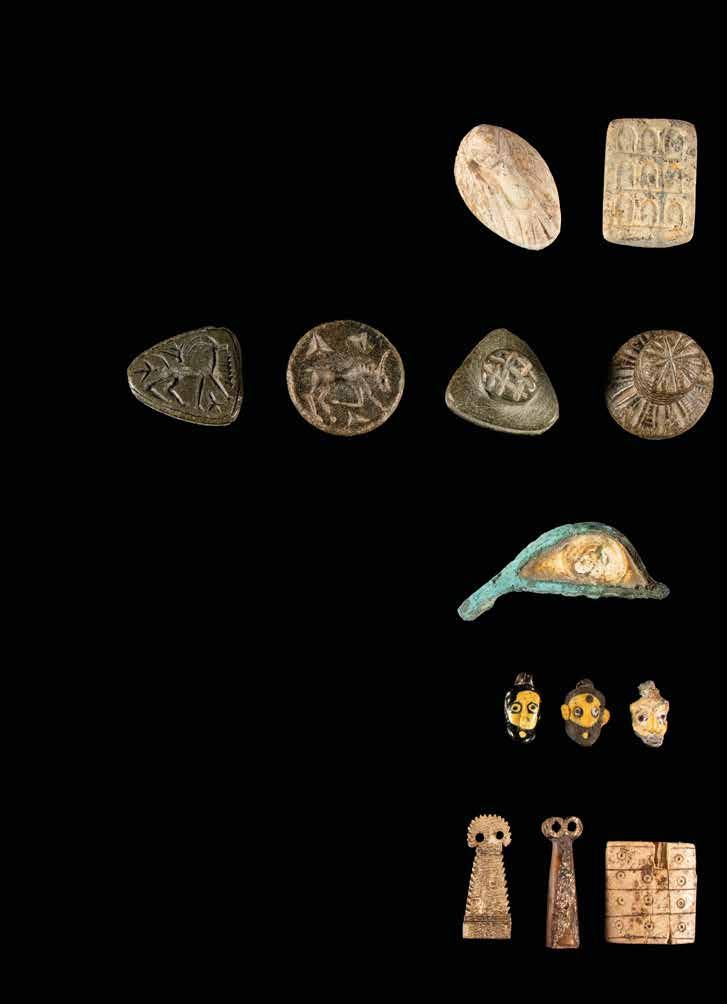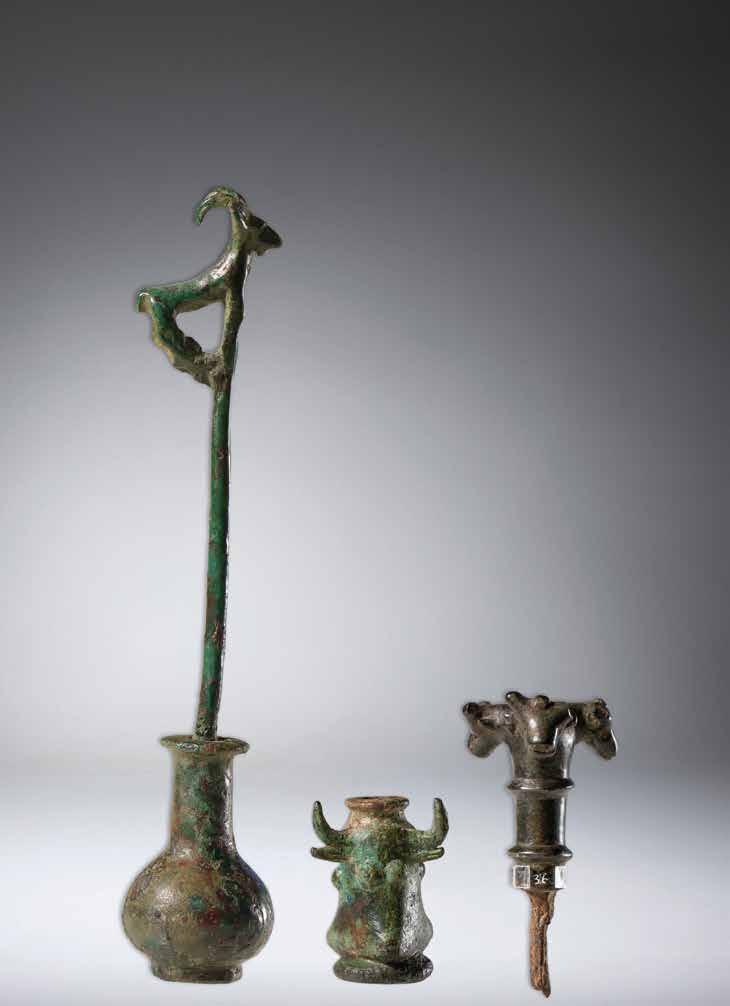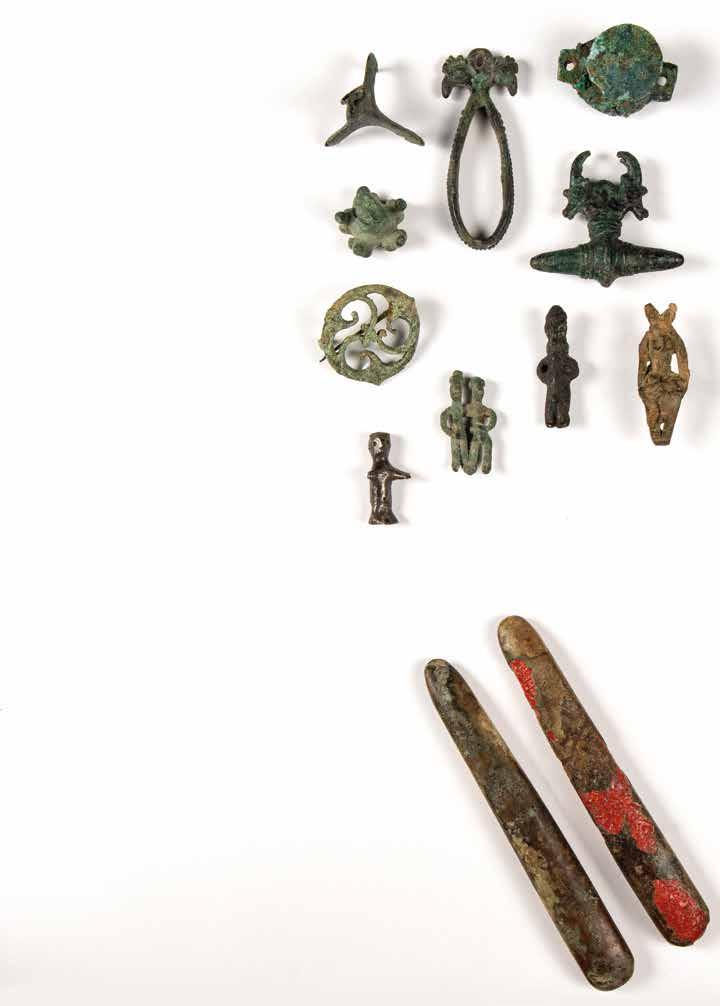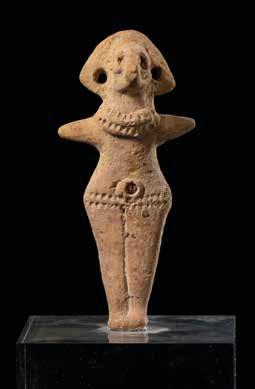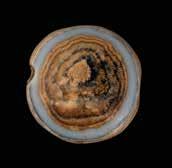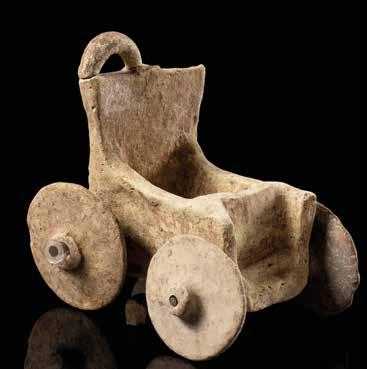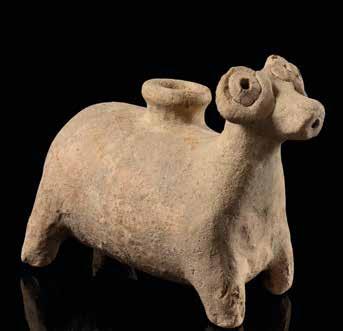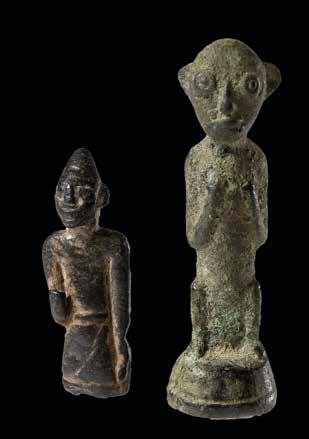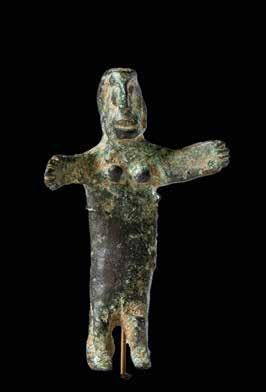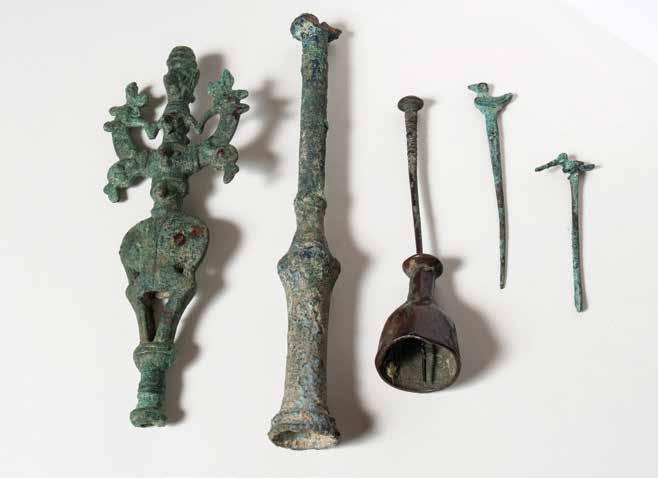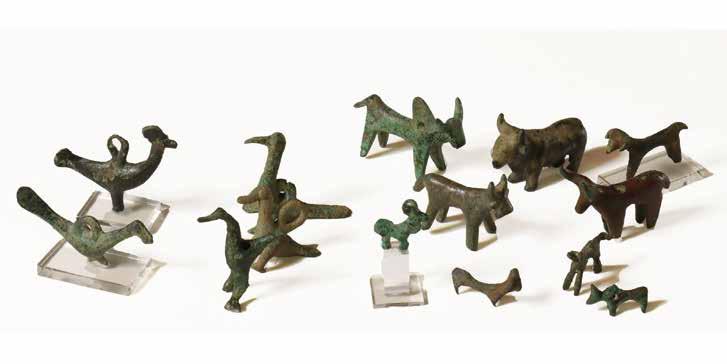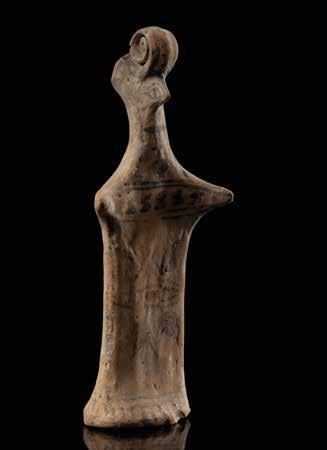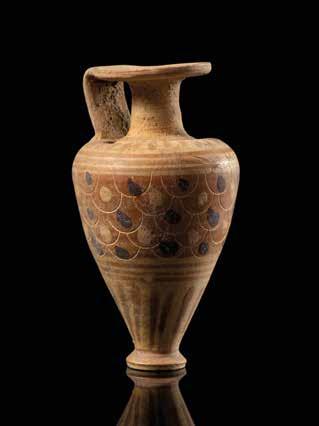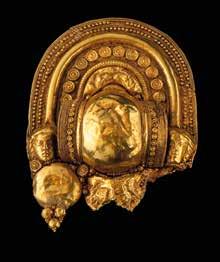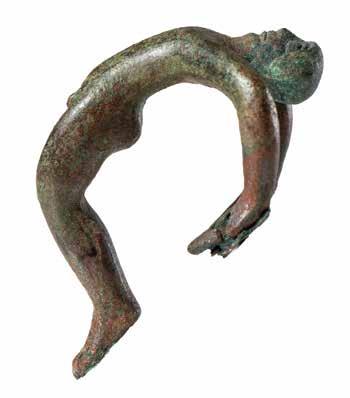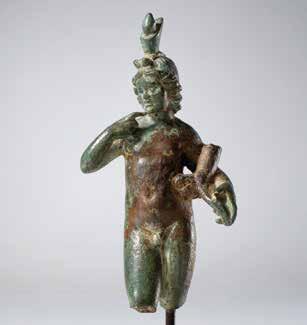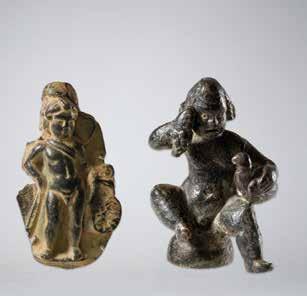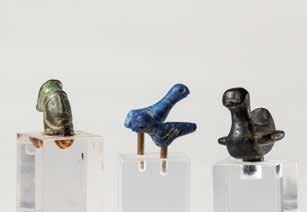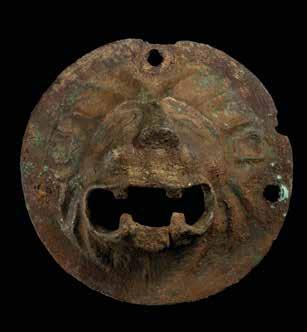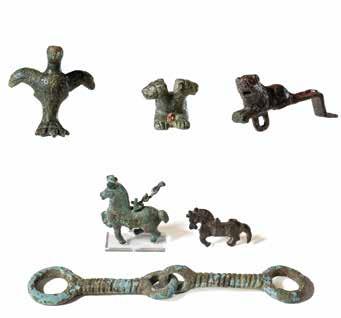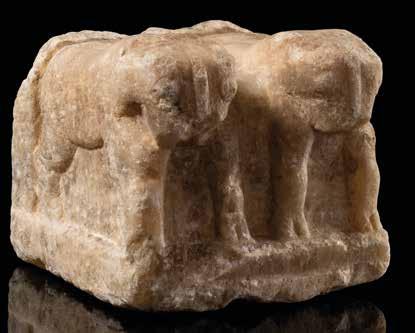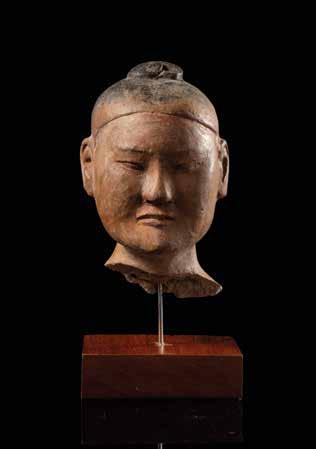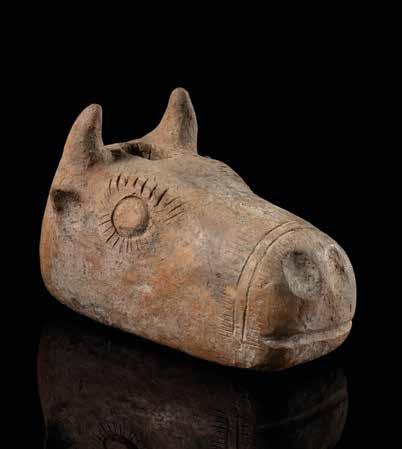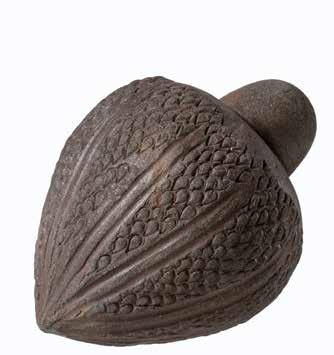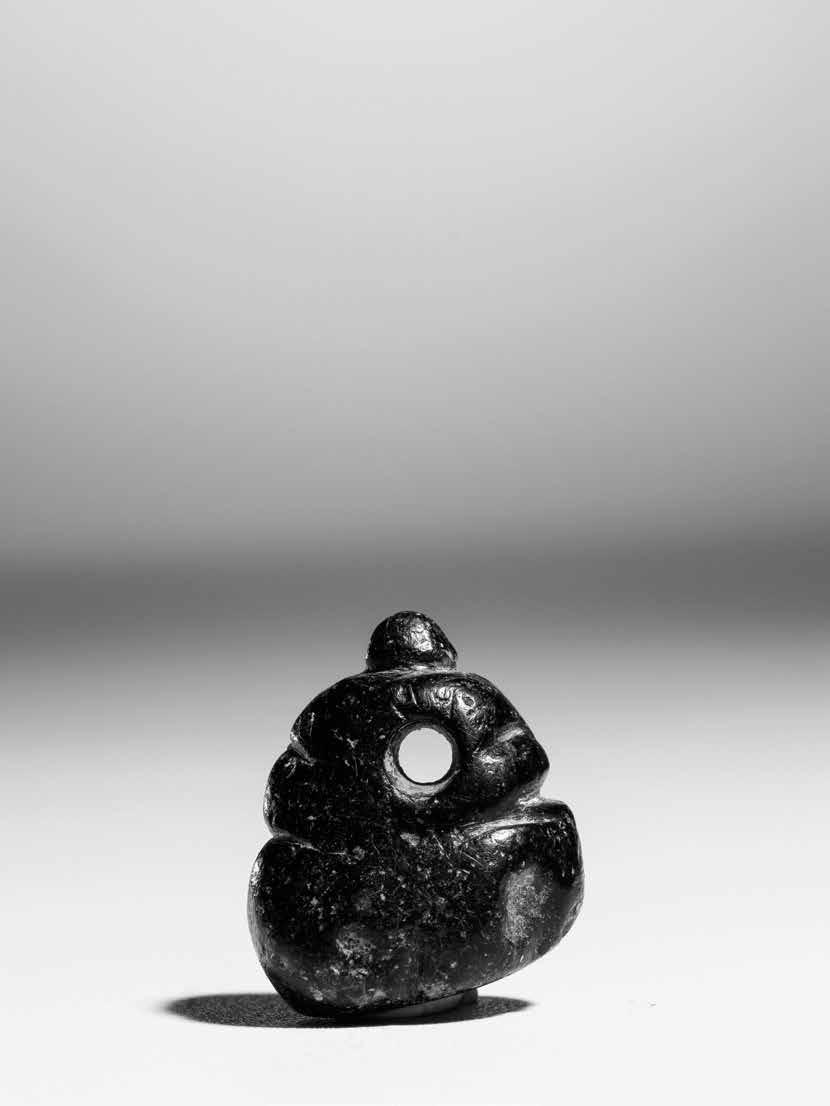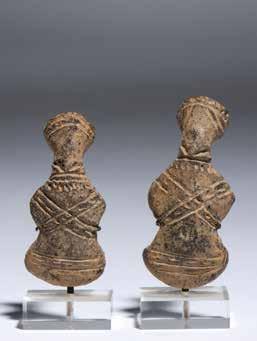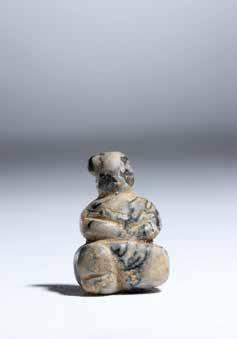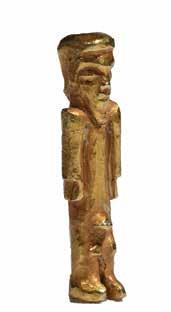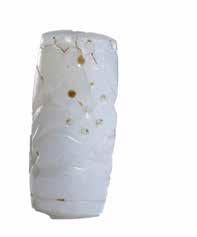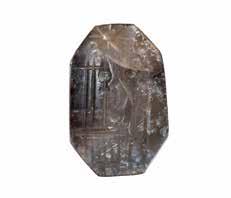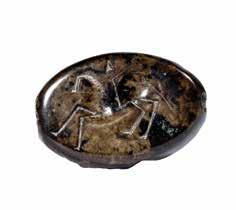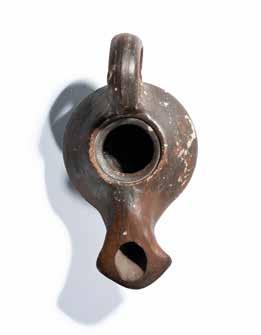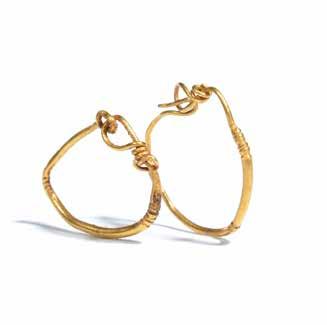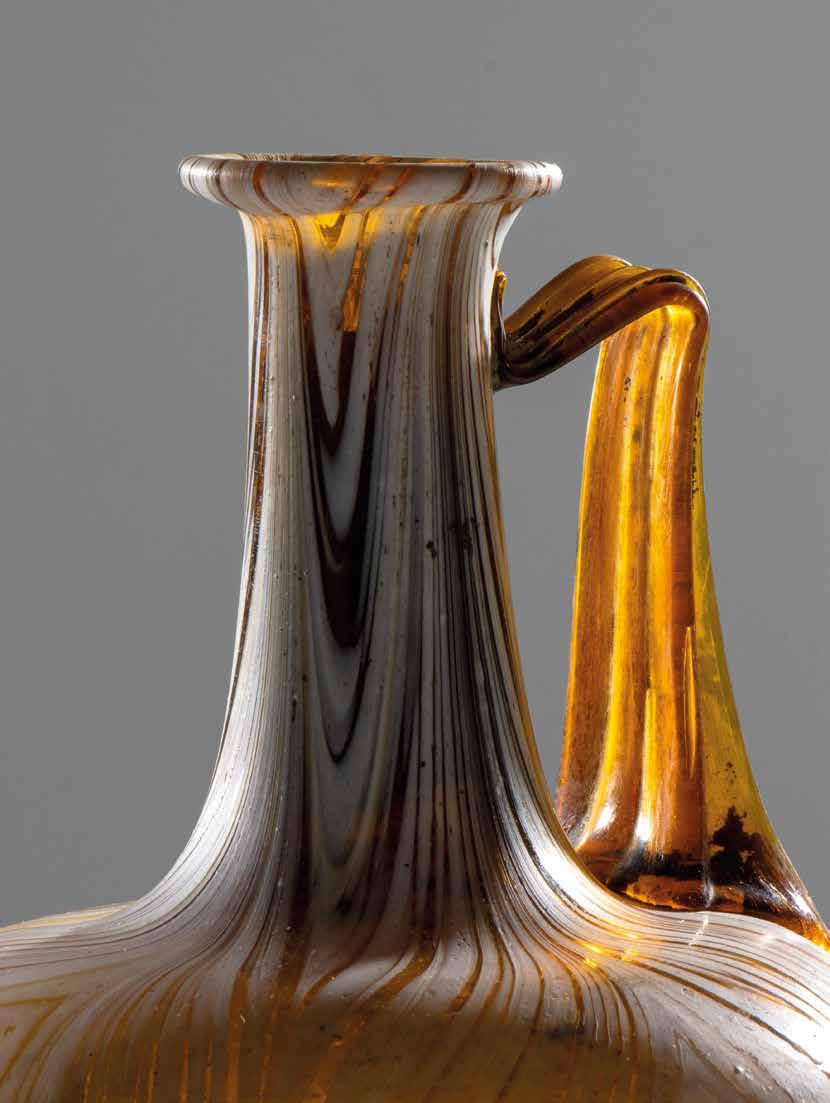Condizioni di Vendita
Inviando un’offerta verbale in sala, scritta, elettronica o telefonica all’asta Astarte XXV si accettano le presenti condizioni di partecipazione all’asta.
I partecipanti possono intervenire all’asta di persona, attraverso Live Bidding, inviando ordini scritti, oppure partecipando telefonicamente per lotti che hanno un prezzo di partenza di almeno 1000 franchi.
Le offerte scritte e quelle inviate elettronicamente possono essere tenute in considerazione solo se pervengono entro e non oltre 24 ore prima dell’inizio dell’asta. Chi desidera partecipare per telefono deve comunicarcelo entro 48 ore prima dell’asta, per permetterci di predisporre il collegamento telefonico. I partecipanti all’asta tramite web devono registrarsi sul sito web www.biddr.com/auctions/astarte almeno 12 ore prima dell’inizio dell’asta ed essere autorizzati a partecipare. Astarte SA ed i gestori delle piattaforme di Live Bidding si sforzano di garantire il funzionamento perfetto di tali piattaforme. Spetta all’offerente informarsi per tempo delle condizioni e dei requisiti tecnici di dette piattaforme eseguendo se necessario gli adattamenti e le installazioni necessarie. Astarte SA declina qualsiasi responsabilità per danni o altre pretese derivanti da interruzioni o ritardi dovute a mancanze o difetti tecnici.
L’asta si svolge in Franchi Svizzeri (CHF). Al prezzo di aggiudicazione si aggiungono i diritti d’asta calcolati forfettariamente al 25%.Per il lotti contrassegnati da * l’IVA del 8.1% viene calcolata su tutte le voci che compongono la fattura. L’IVA può essere rimborsata su presentazione del documento di esportazione convalidato dalla dogana svizzera.
La partecipazione all’asta di persona, inviando ordini scritti o attraverso BIDDR, Drouot, NumisBids, Sixbid, Dea Moneta, Numis24 or Bidinside non comporta nessuna ulteriore commissione. La partecipazione all’asta attraverso Invaluable comporta un commissione supplementare del 5%.
Le tasse e costi di qualsiasi tipo applicati all’estero sono a carico dell’acquirente. L’osservanza delle norme doganali e valutarie estere ecc. è responsabilità dell’acquirente. Astarte SA declina espressamente ogni responsabilità per le conseguenze che potrebbero derivare dalla violazione di tali norme. Il saldo è dovuto al ricevimento della fattura. Il diritto di proprietà viene acquisito dall’acquirente solo ad avvenuto saldo completo della fattura. I ritardi di pagamento di 30 giorni o più saranno soggetti a un interesse dell’1% al mese e a una tassa amministrativa aggiuntiva. Le offerte inferiori al prezzo di partenza non potranno essere prese in considerazione. Ogni offerente si impegna a rispondere personalmente dell’acquisto effettuato. Non può pretendere di aver agito per conto di terzi. Ogni offerta effettuata è vincolante e non può essere revocata. L’offerente è vincolato alla sua offerta sino a quando quest’ultima non viene superata da un’altra offerta o respinta da Astarte SA.
Astarte SA si riserva il diritto di rifiutare a propria discrezione eventuali partecipanti dalla partecipazione all’asta senza indicare la motivazione. A parità di offerte, le offerte scritte hanno la precedenza sulle offerte in sala. La descrizione degli oggetti e il loro grado di conservazione sono forniti in buona fede al meglio delle nostre conoscenze e convinzioni. Tali descrizioni, né altre dichiarazioni relative a un lotto (comprese le dichiarazioni relative al valore dello stesso) costituiscono garanzie esplicite o implicite.
I lotti sono visibili presso i nostri uffici, previo appuntamento. Gli offerenti hanno l’opportunità di informarsi personalmente o attraverso un loro rappresentante riguardo le condizioni dei lotti, nei
giorni d’esposizione indicati. Reclami giustificati saranno presi in considerazione fino a 8 giorni dopo il ricevimento degli oggetti. Il diritto di garanzia è concesso solo all’acquirente e non può essere ceduto a terzi. Per far valere il diritto di garanzia è necessario che l’acquirente comunichi il difetto a Astarte SA con lettera raccomandata immediatamente dopo la scoperta del difetto, entro 8 giorni dal ricevimento della merce, e che l’oggetto dell’asta venga restituito a Astarte SA nelle stesse condizioni in cui è stato consegnato all’acquirente, libero da rivendicazioni di terzi. L’acquirente deve fornire a proprie spese la prova che l’oggetto d’asta è un falso. Astarte SA può richiedere all’acquirente di richiedere il parere di due esperti indipendenti riconosciuti nel settore, a spese dell’acquirente stesso; tuttavia, Astarte SA non è vincolata da tale parere e si riserva il diritto di richiedere ulteriori pareri di esperti a proprie spese. In caso di reclami legittimi, i diritti dell’acquirente sono limitati al rimborso del prezzo d’acquisto e dei diritti d’asta pagati dall’acquirente. Sono escluse altre o ulteriori rivendicazioni dell’acquirente nei confronti di Astarte S.A. La spdizione dei pezzi aggiudicati avverrà a spese dell’acquirente dopo il pagamento completo della fattura. La spedizione a indirizzi in Russia non è possibile. Il foro competente per tutti i procedimenti è Lugano. Solo il testo italiano delle condizioni d’asta è legalmente valido.
Auction Terms
The following condition of auction, which are deemed to be accepted in full upon submission of a written,electronic, verbal or telephone bid, apply to Astarte Auction XXV. Auction participants can participate in the auction in person, by Live Bidding or by sending written orders, or by participating by telephone for lots with a starting price of at least CHF 1000. Written bids and bids sent electronically can only be considered if they are received no later than 24 hours prior to the auction. Those wishing to participate by telephone must notify us no later than 48 hours before the auction so that we can make the telephone connection. Participants in the web auction must register on the www.biddr.com/ auctions/astarte website at least 12 hours before the start of the auction and be authorized to participate.
Astarte SA and the operators of the Live Bidding platforms provided shall endeavor to guarantee the availability and fault-free operation of these platforms. It shall be for the bidder to obtain information of these platforms and to implement any installations and adjustments that may be necessary. Astarte SA refuses any liability for losses or other claims resulting from technical faults or defects.
The auction takes place in Swiss Francs (CHF). Auction fees calculated at a flat rate of 25% are added to the hammer price. For lots marked with *, the 8.1 % VAT is calculated on all items on the invoice. VAT can be refunded upon presentation of the export document validated by Swiss customs.
Participating in the auction in person, by sending written orders or through BIDDR, Drouot, NumisBids, Sixbid, Dea Moneta, Numis24 or Bidinside does not incur any additional fees. Participation in the auction through Invaluable carries an additional commission fee of 5%.
Taxes and charges of any kind levied abroad are the responsibility of the purchaser. Compliance with foreign customs and exchange regulations etc. is the responsibility of the buyer. Astarte SA expressly disclaims responsibility for any consequences that may arise from contravention of such regulations.
The auction invoice is due for payment immediately upon receipt. The right of ownership is acquired by the purchaser only upon settlement of the invoice. Late payments of 30 days or more will be subject to interest of 1% per month and an additional administration fee. Offers below the starting price shall be ignored. Each bidder undertakes to be personally liable for the purchase made. The bidder cannot claim to have acted on behalf of a third party. Any offer made is binding and cannot be revoked. The bidder shall be bound by its bid until the latter is overtaken by another bid or rejected by Astarte SA. Astarte SA reserves the right at its own discretion to refuse any participant from participating in the auction without stating a reason. Written bids take preference over room bids.
The description of the items and their state of preservation are provided in good faith, to the best of our knowledge and belief. Such descriptions, as well as any other statements relating to a lot (including statements regarding its value), do not constitute explicit or implicit warranties.
Bidders have the opportunity to inform themselves about the condition of the lots, in person or through a representative, during the viewing days. Lots can be viewed at our offices by appointment. The right to claim warranty is granted to the buyer only and cannot be assigned to third parties. The assertion of the warranty claim requires the buyer to give notice of defect to Astarte SA by registered letter immediately after discovery of the defect, within 8 days of receipt of the goods, and the forged auction item must be returned to Astarte SA in the same condition as it was handed over to the buyer, unencumbered by third party claims.
The buyer must, at his own expense, provide proof that the auction item is a forgery. Astarte SA may require the buyer to seek the opinion of two independent experts recognized in the field, at the buyer’s own expense; however, Astarte SA is not bound by such opinion and reserves the right to seek additional expert advice at its own expense Justified complaints will be considered up to 8 days after receipt of the items. In case of legitimate complaints, the claims of the buyer are limited to the refund of the purchase price and premiums paid by the buyer on delivery of the auction item to the auctioneer. Any other or further claims of the buyer against the auctioneer are excluded. Third party grading services certification (e.g. NGC, PCGS, ANACS, etc.) is not sufficient cause for any return of purchased items. Shipping of the awarded pieces will be at the expense of the purchaser after full payment of the invoice. Shipping to addresses in Russia is not possible. The Court of jurisdiction for all proceedings is Lugano. Only the Italian text of the auction terms and conditions is legally valid.
Conditions de la vente aux enchères
La vente aux enchères Astarte XXV est régie par les conditions de vente aux enchères ci-après, lesquelles sont intégralement reconnues par la remise d’un ordre d’enchère écrit, électronique, verbal ou téléphonique.
Les participants peuvent participer à la vente aux enchères en personne, par Live Bidding, ou en envoyant des ordres écrits, ou en participant par téléphone pour les lots dont le prix de départ est d’au moins 1000 CHF.
Les offres écrites et les offres envoyées par voie électronique ne peuvent être prises en compte que si elles sont reçues au plus tard 24 heures avant le début de la vente aux enchères.
Toute personne souhaitant participer par téléphone doit nous en informer au plus tard 48 heures avant la vente aux enchères afin que nous puissions établir la connexion téléphonique.
Les participants à la vente aux enchères en ligne doivent s’inscrire sur le site www.biddr.com/auctions/astarte/ au moins 12 heures avant le début de la vente aux enchères et être autorisés à y participer.
La Astarte SA et les opérateurs des plateformes d’enchères en ligne (Live Bidding) à disposition s’efforcent de garantir la disponibilité et le bon fonctionnement technique desdites plateformes. Il incombe à l’enchérisseur de s’informer en temps voulu sur les conditions et les exigences techniques de ces plateformes et de procéder, le cas échéant, aux installations et adaptations requises. La Astarte SA décline toute responsabilité concernant des dommages ou d’autres revendications liées à des interruptions ou à des retards dus à des défauts ou à des défaillances techniques.
La vente aux enchères se déroule en francs suisses (CHF).
Les frais de vente aux enchères, calculés à un taux forfaitaire de 25 %, sont ajoutés au prix d’adjudication. Pour les lots marqués d’un *, la TVA de 8,1 % est calculée sur tous les éléments de la facture.
La TVA peut être remboursée sur présentation du document d’exportation validé par les douanes suisses.
Lors de la participation à la vente aux enchères via BIDDR, Drouot, NumisBids, Sixbid, Dea Moneta, Numis24 or Bidinside, aucune prime ou frais supplémentaires ne sont perçus. La participation à la vente aux enchères par Invaluable implique une commission supplémentaire de 5 %.
Les taxes de tout types appliqués à l’étranger sont à la charge de l’acheteur. La facture de vente aux enchères est payable dès réception. Le droit de propriété n’est acquis par l’acheteur qu’après règlement de la facture. En cas de retard de paiement supérieur à 30 jours, des intérêts mensuels d’1% et des frais administratifs supplémentaires seront appliqués. Les offres inférieures au prix de départ ne pourront être prises en considération.
Chaque enchérisseur s’engage à assumer la responsabilité de l’achat effectué. Il ne pourra déclarer avoir agi pour le compte d’un tiers. Toute offre faite est contraignante et ne peut être révoquée. L’enchérisseur est lié par son offre jusqu’à ce qu’elle soit dépassée par une offre plus élevée ou rejetée par Astarte SA. Astarte SA se réserve le droit de refuser à toute personne de participer aux ventes aux enchères, à sa seule et entière discrétion. Les descriptions des articles et de leur état sont données en toute bonne foi, au mieux de nos connaissances et de nos convictions. Ni ces descriptions ni aucune autre déclaration relative à un lot (y compris les déclarations relatives à sa valeur) ne constituent des garanties expresses ou implicites. Les lots peuvent être examinés dans nos bureaux sur rendez-vous. Les enchérisseurs ont la possibilité de s’informer en personne ou par l’intermédiaire de leur représentant de l’état des lots, les jours d’exposition indiqués. Les réclamations justifiées seront reçues durant une période de 8 jours à compter de la réception des articles.
Le droit à garantie est accordé à l’acheteur et ne peut être cédé à des tiers. La revendication du droit à garantie présuppose que l’acheteur exerce une action en garantie contre l’Astarte SA dès la constatation du défaut et qu’il restitue à l’Astarte SA l’objet adjugé falsifié dans l’état où celui-ci a été remis, sans être grevé de revendications de tiers. L’acheteur est tenu à cet égard de prouver, à ses propres frais, que l’objet adjugé est falsifié. L’Astarte SA est en droit d’exiger de l’acheteur que celui-ci fasse procéder à ses propres frais à une expertise par deux experts indépendant et reconnus dans le domaine concerné, sans être toutefois liées auxdites expertises et en se réservant le droit de demander
conseil à un expert à ses propres frais. En cas de réclamation légitime, les droits de l’acheteur sont limités au remboursement du prix d’achat et des frais de vente aux enchères payés par l’acheteur. Toute autre prétention de l’acheteur à l’encontre d’Astarte SA est exclue. L’expédition des pièces adjugées est à la charge de l’acheteur après paiement intégral de la facture. Aucune expédition vers la Russie n’est possible. Le tribunal de Lugano est seul compétent. Seul le texte italien des conditions de vente aux enchères est juridiquement valable.
Auktionsbedingungen
Für die Astarte Auktion XXV gelten die folgenden Versteigerungsbedingungen, die mit der Abgabe eines schriftlichen, elektronischen, mündlichen oder telefonischen Gebotes als vollumfänglich akzeptiert gelten. Die Auktionsteilnehmer können an der Auktion persönlich, durch Live-Bieten oder durch Übersendung schriftlicher Gebote oder durch telefonische Teilnahme für Lose mit einem Startpreis von mindestens CHF 1000 teilnehmen. Schriftliche und elektronisch übermittelte Gebote können nur berücksichtigt werden, wenn sie spätestens 24 Stunden vor der Auktion eingegangen sind. Wer telefonisch teilnehmen will, muss uns spätestens 48 Stunden vor der Auktion benachrichtigen, damit wir die Telefonverbindung herstellen können. Teilnehmer an der Web-Auktion müssen sich mindestens 12 Stunden vor Beginn der Auktion auf der Website www.biddr. com/auctions/astarte/ registrieren und zur Teilnahme berechtigt sein.
Die Astarte SA sowie der oder die Betreiber der zur Verfügung stehenden Live Bidding-Plattformen sind darum bemüht, die Verfügbarkeit sowie das technisch einwandfreie Funktionieren dieser Plattformen zu gewährleisten. Es ist Sache des Bieters, sich rechtzeitig über die technischen Voraussetzungen und Anforderungen dieser Plattformen zu informieren und die gegebenenfalls notwendigen Installationen und Anpassungen vorzunehmen. Die Astarte SA lehnt jegliche Haftung für Schäden oder anderen Ansprüchen aufgrund von Unterbrüchen oder Verzögerungen wegen technischer Mängel oder Defekte ab. Die Auktion wird in Schweizer Franken (CHF) durchgeführt. Die Auktionsgebühren werden pauschal mit 25 % auf den Zuschlagspreis aufgeschlagen. Bei Losen, die mit * gekennzeichnet sind, wird die Mehrwertsteuer von 8,1 % auf alle in der Rechnung aufgeführten Positionen berechnet. Die Mehrwertsteuer kann gegen Vorlage des vom Schweizer Zoll validierten Ausfuhrdokuments zurückerstattet werden. Für die persönliche Teilnahme an der Auktion, die Übermittlung schriftlicher Aufträge oder die Teilnahme über BIDDR, Druot, NumisBids, Sixbid, Dea Moneta, Numis24 oder Bidinside fallen keine zusätzlichen Gebühren an. Die Teilnahme an der Auktion über Invaluable ist mit einer zusätzlichen Kommissionsgebühr von 5% verbunden.
Im Ausland anfallende Abgaben wie z.B. Zollgebühren und Steuern sowie die bei einem Versand anfallenden Versandkosten und Versicherungsprämien gehen vollständig zu Lasten des Käufers.
Der Betrag ist bei Erhalt der Rechnung fällig. Der Käufer erwirbt das Eigentumsrecht erst nach vollständiger Bezahlung der Rechnung. Bei einem Zahlungsverzug ab 30 Tagen werden Zinsen in Höhe von 1% pro Monat und eine zusätzliche Verwaltungsgebühr erhoben. Angebote unterhalb des Startpreises können nicht berücksichtigt werden. Jeder Bieter haftet persönlich für einen getätigten Kauf. Es besteht nicht die Möglichkeit, sich auf eventuelle Handlungen im Auftrag Dritter zu berufen. Jedes Gebot ist verbindlich und kann nicht widerrufen werden. Der Bieter ist an sein Gebot gebunden, solange es nicht durch ein anderes
überboten oder von Astarte SA zurückgewiesen wird. Astarte SA behält sich das Recht vor, nach eigenem Ermessen und ohne Angabe von Gründen Teilnehmer eventuell von der Auktion auszuschließen.
Die Beschreibungen der Gegenstände und ihres Zustands werden nach bestem Wissen und Gewissen gegeben. Weder diese Beschreibungen noch andere Angaben zu einem Los (einschließlich Angaben zu seinem Wert) stellen ausdrückliche oder stillschweigende Garantien dar. Die Lose können nach Vereinbarung in unseren Geschäftsräumen besichtigt werden. Die Bieter haben die Möglichkeit, sich persönlich oder durch ihren Vertreter an den angegebenen Ausstellungstagen über den Zustand der Lose zu erkundigen. Begründete Reklamationen werden bis zu 8 Tage nach Erhalt der Gegenstände berücksichtigt.
Die Lose können nach Vereinbarung in unseren Geschäftsräumen besichtigt werden. Die Bieter haben die Möglichkeit, sich persönlich oder durch ihren Vertreter an den angegebenen Ausstellungstagen über den Zustand der Lose zu erkundigen. Begründete Reklamationen werden bis zu 8 Tage nach Erhalt der Gegenstände berücksichtigt. Die Lose können nach Vereinbarung in unseren Geschäftsräumen besichtigt werden. Die Bieter haben die Möglichkeit, sich persönlich oder durch ihren Vertreter an den angegebenen Ausstellungstagen über den Zustand der Lose zu erkundigen. Begründete Reklamationen werden bis zu 8 Tage nach Erhalt der Gegenstände berücksichtigt. Der Gewährleistungsanspruch wird ausschliesslich dem Käufer eingeräumt und darf nicht an Dritte abgetreten werden. Die Geltendmachung des Gewährleitungsanspruchs setz voraus, dass der Käufer gegenüber der Astarte SA sofort nach Entdeckung des Mangels mit eingeschriebenem Brief Mängelrüge erhebt und der Astarte SA das gefälschte Auktionsgut im gleichen Zustand, wie es ihm übergeben wurde, und unbelastet von Ansprüchen Dritter zurückgibt. Der Käufer hat dabei auf eigene Kosten den Nachweis zu erbringen, dass es sich beim Auktionsgut um eine Fälschung handelt. Die Astarte SA kann vom Käufer verlangen, dass dieser auf eigene Kosten Gutachten von zwei unabhängigen und in dem Bereich anerkannten Experten einholt, ist aber nicht an solche Gutachten gebunden und behält sich das Recht vor, zusätzlichen Experten auf eigene kosten einzuholen. Andere oder weitergehende Ansprüche des Käufers gegen den Versteigerer sind ausgeschlossen. Die Versendung der ersteigerten Ware erfolgt auf Kosten des Käufers nach vollständiger Bezahlung der Rechnung. Der Versand an Russland befindliche Anschriften ist nicht möglich. Gerichtsstand für alle Verfahren ist Lugano. Lediglich die italienische Version der Auktionsbedingungen ist rechtsgültig.
I.
V.
1. A SUMERIAN NECKLACE WITH FLAT GOLD AND SILVER ROUND BEADS WITH WHITE LIMESTONE BEADS.
Ca.3rd Millennium BCE
L. 34 cm circa / disk diam. 22 mm.
Provenance
Formerly, private collection of Mrs. Silvana Benhard, 1.10.1988
Published NEFER catalogue 4, 1986, n° 70
Formed by flat gold and silver disc beads with biconical white limestone and lapis beads. Beautiful conservation. Restrung (modern gold clasp).
CHF 1 500 / 1 800
2. AN EGYPTIAN PREDYNASTIC RESTRUNG NECKLACE WITH BEADS AND A CENTRAL SHARK TOOTH.
Badarian period, circa 4000 BCE.
Total L. 28 cm / Tooth 6,5 cm
Provenance
Formerly, private collection of Mr. Odermatt, Switzerland, before 1988
Formed by stones, limestone, shell, beads and amulets of varia shapes, and centered by a fossilized shark tooth. For similar fossilized shark tooth see Petrie Museum, LDUCE-UC2540.
CHF 1 200 / 1 400
3. A SUMERIAN NECKLACE WITH GOLD DISC AND CYLINDRICAL BEADS.
Ca. 2600-2500 BCE
L. 39 cm / Disk diam. 40 mm
Provenance
Formerly, private collection of Mrs. Silvana Benhard, 1.10.1988
Made of gold sheet discs alternated with cylindrical gold beads.
600 / 800
4. A LOT OF 2 MYCENEAN GOLD STRIPS.
Ca. 1450-1200 BCE
l. 58 mm x L. 128 mm/l. 52 mm x L. 130 mm.
Provenance
Formerly, private collection of Mr. Odermatt, Switzerland, before 1988
One of pointed-oval form, narrow and pierced at the ends and surrounded by a band of dots. The other one, with floral pattern and palmettes stamped at the center, also pierced at either end. These gold elements were worn in a funerary context probably as frontlets (bands for the forehead).
CHF 600 / 800
CHF
5.
4 RARE WESTERN ASIAN ELECTRUM NECKLACE. Late 2nd Millennium BCE. H. 30 cm circa
Provenance
Formerly, collection of Janet Zakos, 24.3.1984
Formed by elongated electrum beads each one, alternated with a ribbed cylindrical electrum element. Beautiful conservation.
CHF 1 800 / 2 000
6.
A GROUP OF SUMERIAN, EASTERN GREEK AND ROMAN GOLD ELEMENTS. Early 2nd Millennium BCE - 2nd Century A.D. Min. H. 19 mm / Max. H. 28 mm
Provenance
Formerly, private collection of Mrs. Silvana Benhard, 1.10.1988 «leaf shaped pendants», Sammlung Ebnother 27. 11. 2003 (reproduced)
With leaf shaped pendant, dropped shaped elements ending with three spherical beads, and amphora shaped elements.
CHF 800 / 1 200
7.
A GROUP OF 12 EASTERN GREEK AND WESTERN ASIAN GOLD NECKLACES ELEMENTS. 2nd-1st Millennium BCE. Min H. 13 mm / Max. H. 31 mm
Provenance
Ex Zoumboulakis Gallery, Geneva, 30.1.1978
CHF 600 / 800
10.
11.
12.
8. A GROUP OF 32 MESOPOTAMIAN AND CENTRAL ASIAN
AGATE, AMETHYST AND STONES BEADS. 3rd-2nd Millennium BCE
L.min 5 mm / Max. 57 mm
Provenance
Formerly with, Saskia Wessel, 05.01.1984
Hand-cut and drilled, each bead is carved into tubular, amygdaloid, or rounded biconical shapes, and polished to a smooth finish. The various shapes of these beads are reminiscent of the artistic traditions of Mesopotamia and Bactria during the 3rd and 2nd millennia BCE. In Mesopotamia, agate was cherished for its strength and vivid natural banding, commonly fashioned into cylinder seals, amulets, and ornamental jewelry, symbolizing protection and social status. Meanwhile, Bactrian artisans skillfully crafted agate into polished beads of diverse forms, sometimes combined with gold or glass to enhance their visual impact. These exquisite creations not only highlight the region’s artistic mastery but also underscore its importance as a hub of cultural exchange, linking the Indus Valley, Mesopotamia, and the Persian Plateau through extensive trade networks.
CHF 800 / 1 200
10. A GROUP OF 51 CENTRAL ASIA ROCK CRYSTAL (QUARTZ) BEADS.
Bactria, ca. 2000-1000 BCE
Min. L. 5 mm / Max. L. 30 mm circa
Provenance
Formerly with, Saskia Wessel, 05.01.1984
Hand-cut and drilled, each bead is carved into tubular, barrel, or rounded biconical shapes, and polished to a smooth finish (some facetted a posteriori). The ancient crystalline stones possess a natural beauty, characterized by varying levels of translucency. Most of them display biconical drilled perforations visible on the inside. Their glass-like appearance captivated ancient civilizations, shrouded in mystery and fascination. Interestingly, Pliny the Elder believed that quartz was actually fossilized ice, eternally frozen into stone—a belief that endured well into the 17th century.
CHF 700 / 900
9. TWO BACTRIAN GOLD AND AGATE ELEMENTS. Bactria, Late 2nd-1st Millennium BCE Diam. 21 mm ; 21 mm
Provenance
Formerly with, Selim Dere, 14.12.1989
A spherical pierced pendant made of a gold bezel set with a ‘bulleye’ agate bead and a floral gold box setting with glass inlays remains, behind two suspension hoops. Presence of deposits and ancient wear marks.
CHF 500 / 700
11. A GROUP OF 16 CENTRAL ASIAN AGATE BEADS. Bactria, ca. 3rd-2nd Millennium BCE L.min 5 mm / Max. 30 mm
Provenance
Formerly with, Saskia Wessel, 05.01.1984
Hand-cut and drilled, each bead is carved into tubular, barrel, or rounded biconical shapes, and polished to a smooth finish.
In ancient Bactria, agate was a prized material for jewelry, particularly during the 3rd to 2nd millennia BCE. Archaeological finds, including necklaces with banded agate beads of various shapes, showcase the artisans’ mastery in enhancing the stone’s natural patterns.
Beyond its aesthetic appeal, agate symbolized protection and reflected Bactria’s extensive trade networks and cultural exchanges. These beads are a very fine example, with perfect state of conservation.
CHF 600 / 800
12. A
GROUP OF MESOPOTAMIAN AND
AGATE BEADS. 3rd-2nd Millenium BCE. L. min 2 mm / Max. 58 mm
Provenance
Formerly with, Saskia Wessel, 05.01.1984
Hand-cut and drilled, each bead is carved into tubular, amygdaloid, or rounded biconical shapes, and polished to a smooth finish. The various shapes of these beads are reminiscent of the artistic traditions of Mesopotamia and Bactria during the 3rd and 2nd millennia BCE. In Mesopotamia, agate was cherished for its strength and vivid natural banding, commonly fashioned into cylinder seals, amulets, and ornamental jewelry, symbolizing protection and social status. Meanwhile, Bactrian artisans skillfully crafted agate into polished beads of diverse forms, sometimes combined with gold or glass to enhance their visual impact. These exquisite creations not only highlight the region’s artistic mastery but also underscore its importance as a hub of cultural exchange, linking the Indus Valley, Mesopotamia, and the Persian Plateau through extensive trade networks.
CHF 1 000 / 1 200
LARGE
BACTRIAN
15.
18.
13. A LOT OF 2 EGYPTIAN
TURTLES
Early New-Kingdom, Dynasty 18, ca. 1550 BCE L. 15 mm
Provenance
Formerly with, Saskia Wessel 29.6.1982
Of stylized shape of blue and yellow faience and pierced lengthwise to be worn as pendants. In Ancient Egypt, the turtle «Trionyx» belongs among the first animals representations on small objects (palettes, vessels, amulets and various magical devices)— «for one of the earliest reference to the animal in Egyptian literature, a funerary spell of the Middle Kingdom, clearly intimates that its flesh is an abomination to the god Re.» cit.H.G. Fisher. Designed to protect the deceased from having to eat excrement in the next world. The shadowy and secretive aspect of the turtle put it most directly into opposition with the sun god, yet very benefic to fight against even more dangerous creatures, such as the hippopotamus. In these circumstances, the most probable reason of the relatively frequent representation of the Trionyx was intended to be apotropaic.
For a similar typology see a carnelian turtle amulet Brooklyn Museum 14.644.
CHF 800 / 1 200
15. A GROUP OF 59 EGYPTIAN TURQUOISE FAIENCE BEADS.
New-Kingdom, ca. 1550-1069 BCE
Diam. Min 2 mm / Max. L. 42 mm
Provenance
Formerly with, Saskia Wessel, 05.01.1984
Of cylinder and elongated squared shape. During the New Kingdom period (1550–1069 BCE), faience production in Egypt reached a peak of technological refinement and aesthetic complexity. Egyptian faience, a non-clay ceramic material, was composed primarily of crushed quartz (silica), lime, and alkali, with small amounts of copper compounds that gave it its characteristic blue-green coloration. This vitreous material was shaped into beads through a variety of methods, including molding, hand-forming, and threading on fine reeds or strings during the drying process to ensure perforation. The surface of faience beads was coated with a self-glazing layer known as the efflorescence technique. This method involved the application of a mixture of sodium carbonate and copper oxides, which would migrate to the surface during firing at temperatures ranging from 800°C to 950°C. This process created a glossy, glass-like finish that was both visually striking and durable.
CHF 200 / 400
14. A RARE EGYPTIAN CORNELIAN AGATE AND GOLD LEG WITH FOOT AMULET PENDANT.
Old Kingdom-First Intermediate Period, 1991-1802 BCE H. 30 mm
Provenance
Formerly with, Saskia Wessel 29.6.1982
Depicting a left leg with foot, the upper part covered by a hammered gold plaque fixed with a rivet, on top, suspension hoop. Amulets depicting the foot and extended leg up to the knee are distinctive to the late Old Kingdom and the First Intermediate Period. They are frequently discovered in matching pairs—one right and one left—often strung alongside other elements, such as buckle beads, to create anklets. According to Carol Andrews (Amulets of Ancient Egypt, 1994), the front-to-back pierced examples, like the one presented here, display individual toes with remarkable naturalism, surpassing the detail of those pierced from side to side. Carnelian agate remains the most prevalent material for these amulets. Their intended purpose was to grant the power of movement or serve as a symbolic replacement for a lost limb.
200 / 400
16. A GROUP OF 127 EGYPTIAN FAIENCE AND GLASS BEADS.
New-Kingdom, ca. 1550-1069 BCE
L. min 4 mm / Max. 20 mm
Provenance
Formerly with, Despina Nesgos, 22.9.2003
CHF 250 / 400
17. A GROUP OF 46 EGYPTIAN FAIENCE AND GLASS BEADS.
New-Kingdom, ca. 1550-1069 BCE
L. min 8 mm / Max. 18 mm
Provenance
Formerly with, Despina Nesgos, 22.9.2003
CHF 200 / 400
18. A GROUP OF 150 EGYPTIAN FAIENCE AND GLASS BEADS.
New-Kingdom, ca. 1550-1069 BCE
Diam. Ca. 2 mm
Provenance
Formerly with, Despina Nesgos, 22.9.2003
CHF 250 / 400
CHF
19. A GROUP OF 416 EGYPTIAN FAIENCE AND LAPIS LAZULI BEADS.
New-Kingdom, ca. 1550-1069 BCE
L. min 3 mm / Max. 5 mm
Provenance
Formerly with, Despina Nesgos, 22.9.2003
CHF 500 / 600
20. A GROUP OF RARE 26 EGYPTIAN LAPIS LAZULI, BLUE GLASS AND SODALITE BEADS.
New-Kingdom, ca. 1550-1069 BCE
L. min 4 mm / Max. 7 mm
Provenance
Formerly with, Saskia Wessel, 05.01.1984
Of rounded and ribbed shapes and pierced.The different materials of these beads are amazing sources and testimonies of the ancient Egyptian knowledge on the nature and properties of the stones. In Ancient Egypt the lapis lazuli was the most precious gemstone as it was considered a sacred stone connected to the gods. Its special dark-blue color symbolized the night sky and the starry heavens.The most widely accepted concept is that the ancient Egyptian lapis lazuli originated from the Badakhshan Province (Afghanistan), however other new potential Asian extraction sites (Pakistan, Tajikistan, Lake Baikal area, Myanmar) were also suggested recently. This stone had reached Egypt most probably from Mesopotamia through trade routes, or could also be brought as a tribute from various localities like Assur, Babylon. Extensive glass production in Egypt started as early as the Eighteenth Dynasty and the best deep blue glass beads were from the workshop of Tutankhamun. As for the sodalite beads (very similar to the lapis without gilded pyrite inclusion), Although it was scientifically identified in the early 19th century, evidence suggests that ancient civilizations, including the Egyptians, valued it for its aesthetic and symbolic qualities, particularly for its resemblance to lapis lazuli. However, direct archaeological evidence of sodalite in ancient jewelry is scarce, likely due to its rarity and frequent confusion with more commonly used blue stones like lapis lazuli. According to tradition, Egyptian priests used sodalite to dispel fear and promote mental clarity. In ancient times, sodalite was sourced from Afghanistan.
CHF 400 / 600
21. A GROUP OF EGYPTIAN FAIENCE BEADS.
New-Kingdom, ca. 1550-1069 BCE
L. min 3 mm / Max. 8 mm
Provenance
Formerly with, Despina Nesgos, 22.9.2003
CHF 100 / 200
23. A GROUP OF 67 EGYPTIAN FAIENCE BEADS.
New-Kingdom ,ca. 1550-1069 BCE
L. min 3 mm / Max. 8 mm
Provenance
Formerly with, Despina Nesgos, 22.9.2003
CHF 100 / 150
25. A GROUP OF 48 EGYPTIAN FAIENCE AND GLASS BEADS.
New-Kingdom, ca. 1550-1069 BCE
Diam. Ca. 1 mm
Provenance
Formerly with, Despina Nesgos, 22.9.2003
CHF 100 / 150
22. A GROUP OF 35 EGYPTIAN FAIENCE BEADS.
New-Kingdom, ca. 1550-1069 BCE
Diam. Min 4 mm / Max. 7 mm
Provenance
Formerly with, Despina Nesgos, 22.9.2003
CHF 100 / 150
24. A GROUP OF 150 EGYPTIAN FAIENCE AND GLASS BEADS.
New-Kingdom, ca. 1550-1069 BCE
Diam. Ca. 2 mm
Provenance
Formerly with, Despina Nesgos, 22.9.2003
CHF 100 / 200
26.
AN EGYPTIAN BRACELET WITH GOLD, AMETHYST, GARNET, CARNELIAN AND ROCK CRYSTAL BEADS. New-Kingdom, Dynasty 18, Reign of Amenophis I, 1525-1504 BCE L. 19,5 cm
Provenance
Formerly with, Saskia Wessel, 05.01.1984
Publications
- Am Hofe des Pharaoh. Von Amenophis I. bis Tutanchamun.Catalogue of an exhibition held from 4 May till 27 October 2002. Palais del Arte, Bussolengo, 2002, n° 18 - PharaonenGold, 3000 Jahre Altägyptische Hochkuktur, 2019, p.116
Bracelet made of amethyst, carnelian, and garnet, separated by disk-shaped, bead-shaped, oval, and barrel-shaped gold beads.
One of the disk-shaped gold beads features a border decorated with granulation. The stones in this bracelet highlight the variety of reddish semi-precious stones found in Egypt and represent a unique creation that deviates from the usual strict forms and arrangements.
CHF 2 000 / 2 500
27.
A GROUP OF EGYPTIAN AMETHYST BEADS. Middle-Kingdom to New-Kingdom, ca. 2060 - 1069 BCE L. min 5 mm / Max. 38 mm
Provenance
Formerly with, Saskia Wessel, 05.01.1984
Hand-cut and drilled, each bead is carved into rounded biconical shapes, and polished to a smooth finish. Wadi el-Hudi, located in the Eastern Desert about 35 kilometers southeast of Aswan, was the primary source of amethyst in ancient Egypt. These quarries, the oldest known to date, were heavily exploited during the Middle Kingdom when amethyst was highly prized. Archaeological discoveries of inscriptions and stelae reveal the scale and organization of mining expeditions.
Transported to the Nile Valley, the stones were crafted into precious objects. Associated with the goddess Hathor, known as the «Lady of Amethyst,» this gemstone held deep symbolic and spiritual significance in Egyptian culture.
CHF 1 000 / 1 500
28. AN EGYPTIAN FAIENCE DISK-BEAD NECKLACE. New-Kingdom, ca. Dynasty 18, Tuthmosis III reign, ca.1479-1425 BCE.
Total L. 25,5 cm
Provenance
Formerly with Merton Simpson New York, 20.7.1979
Publications
- Jewellery of the Pharaohs, Treasures of Magic, Power and Beauty, 2005, p.102
- PharaonenGold, 3000 Jahre Altägyptische Hochkuktur, 2019, p.128
The necklace features narrow, disc-like beads at both ends, gradually transitioning towards the center into wider, lens-shaped beads of larger diameter. A comparable necklace was discovered during the Metropolitan Museum excavation in the tomb of the three Syrian princesses. This particular style of necklace, along with the fact that it was found within the same excavation as the hair rosettes, supports the assumption that it also belonged to one of the three Syrian princesses.The princesses’ tomb, located in the Wadi Gabbana el-Qurud, was discovered in 1916.
CHF 1 500 / 1 800
30. AN EGYPTIAN BLUE GLAZED FAIENCE UDJAT RING. New-Kingdom, Dynasty 18 , ca. 1400-1295 BCE H. 19 mm
Provenance
Formerly with, Waldmeyer Sylvia , Zurich, 12.12.1990
Publications
- Jewellery of the Pharaohs, Treasures of Magic, Power and Beauty, 2005, p.104
- National Museum of Tokyo, Cleopatra and the Queens of Egypt, 11/723/09 2015, n°58
Formed by a single band flatten within and rounded without, and an oval open-worked bezel featuring a very delicate Udjat eye flanked with the hieroglyph «nfr» (The good,the most perfect). The Udjat eye is masterfully rendered, showcasing a well-arched brow, detailed eyelid contours with an elongated cosmetic line, and an elegant lower extension. An intricately designed spiral curve, achieved through openwork, adds to its artistic sophistication. Beautiful conservation and turquoise vivid color. Minor cracks on the surface.
CHF 1 000 / 1 500
29. AN EGYPTIAN FAIENCE RING WITH A CAT. New-Kingdom, Dynasty 18 , ca. 1400-1295 BCE H. 17,5 mm
Provenance
Formerly with, Waldmeyer Sylvia , Zurich, 12.12.1990
Publications
- Jewellery of the Pharaohs, Treasures of Magic, Power and Beauty, 2005, p.105
- National Museum of Tokyo, Cleopatra and the Queens of Egypt, 11/7-23/09 2015, n°61
With a single hoop, flatten within and surmounted by a very delicate crouched cat figure, possibly a representation of the goddess Bastet. Beautiful conservation.
CHF 1 000 / 1 500
32. AN EGYPTIAN BLUE GLAZED FAIENCE UDJAT RING.
New-Kingdom, Dynasty 18 , ca. 1400-1295 BCE
Diam. 20 mm
Provenance
Ex, Altemo Etablissement, Vaduz, 22.5.1991
Publications
- Jewellery of the Pharaohs, Treasures of Magic, Power and Beauty, 2005, p.103
- National Museum of Tokyo, Cleopatra and the Queens of Egypt, 11/7-23/09 2015, n°56
Featuring the Udjat eye—a symbolic fusion of a human eye and a falcon’s. Both the band and the decorative element were meticulously crafted in separate clay molds before being seamlessly joined with a slip of faience material and fired. During the firing process, a delicate lavender-blue glaze naturally developed through self-glazing, creating a smooth, lustrous finish. The ring remains in remarkably preserved condition.
Minor deposit.
CHF 700 / 900
33. A RARE EGYPTIAN PAIR OF GILDED FAIENCE PENANNULAR EARRINGS.
New-Kingdom, Dynasty 18 , ca. 1400-1295 BCE
Diam. 25 mm
Provenance
Formerly, with Christophe Vincent , Vevey, 15.11.78
Publications
- National Museum of Tokyo, Cleopatra and the Queens of Egypt, 11/7-23/09 2015, n°48
With the shape of an open-ended circle, its ends drawn into two vertical loops. A prefabricated gilded twisted cord of the same turquoise faience decorates the outer circumference. Back then a piece of gold wire was threaded and inserted as a hoop. For a similar typology in glass see British Museum, EA14508.
CHF 3 000 / 3 500
34. A GROUP OF 9 EGYPTIAN COLORED GLASS BEADS.
Roman period, ca. 1st century BCE - 1st century A.D. H. min 5 mm / Max. 20 mm
Provenance
Formerly with, Despina Nesgos, 22.9. 2003
CHF 600 / 700
36. A NEW-KINGDOM GOLD HOOP EARRING.
New-Kingdom,Dynasty 18, ca. 1450 BCE H. 16 mm; W. 11 mm
Provenance
Formerly with, Selim Dere, 14.12.1989
Publication
- Am Hofe des Pharaoh. Von Amenophis I. bis Tutanchamun.Catalogue of an exhibition held from 4 May till 27 October 2002. Palais del Arte, Bussolengo, 2002, n° 70 - PharaonenGold, 3000 Jahre altägyptische Hochkuktur, 2019, p.164
This gold earring is composed of two identical concave, hammered gold sheets, skillfully joined with a braided gold wire that elegantly conceals the outer solder seam, serving both a decorative and functional purpose.The fine filigree braid along the outer edge is meticulously crafted from delicately hammered gold wires, adding a touch of sophistication and craftsmanship. At the opening of the hoop, a circular cutout is designed to hold the earlobe securely, sliding into place and clamping gently for a comfortable fit.These split hoop earrings were expertly hollowed out to minimize weight, ensuring comfort for the wearer, even with their narrow and refined structure. Such designs reflect the advanced metalworking techniques of their time, combining both beauty and practicality in a single piece. For a similar typology see Ägyptischen Museums in Berlin-Charlottenburg, Inv.-Nr. VÄGM 61-84
CHF 900 / 1 000
39. A NEW-KINGDOM PAIR OF GOLD EARRINGS.
New-Kingdom,Dynasty 18, ca. 1525-1504 BCE H. 16 mm; W. 11 mm
Provenance
Formerly with, Selim Dere, 14.12.1989
Publication
- Am Hofe des Pharaoh. Von Amenophis I. bis Tutanchamun.Catalogue of an exhibition held from 4 May till 27 October 2002. Palais del Arte, Bussolengo, 2002, n° 71
- PharaonenGold, 3000 Jahre altägyptische Hochkuktur, 2019, p.112
Each earring is crafted from a strip of gold sheet, meticulously shaped into a hoop with a notched groove running along its center. Concave, circular plates are expertly soldered onto either side, adding both structure and ornamentation. At the point of opening, a circular cutout is designed to accommodate the earlobe, which would be inserted and secured with a slender pin threaded through the ear’s pierced hole. Small loops at the opening guide the pin, which is elegantly decorated with a smooth plate along its curved side, locking firmly into place for secure wear.This sophisticated mechanism not only reflects the craftsmanship of the era but also the intricate artistry that adorned both the noble and the common in ancient Egypt.
CHF 2 000 / 2 500
35. A GROUP OF 31 EGYPTIAN VARIA GLASS, FAIENCE BEADS AND AMULETS.
New-Kingdom to Roman period, ca. 16th century - 1st BCE Diam. min 2 mm / L. max 27 mm
Provenance
Formerly with, Despina Nesgos, 22.9. 2003
CHF 500 / 800
37. AN EGYPTIAN PAIR OF GOLD CRESCENT-SHAPED EARRINGS. New-Kingdom, Dynasty 18, 1550-1295 BCE Diam. 11,5 mm
Provenance
Formerly with, Selim Dere, 14.12.1989
Published
- PharaonenGold, 3000 Jahre altägyptische Hochkuktur, 2019, p.146
The pair of crescent-shaped earrings is made of curved gold sheet, tapering towards its ends and reaching its widest form in the middle section. The earring hoops are twisted into an eye-and-hook design at their narrow ends, forming the closure mechanism. To create such relatively lightweight earrings, the gold sheet was finely hammered and, in the final material processing stage, further worked between two animal hides to achieve an even thinner gold foil.
CHF 800 / 1 000
38. AN EGYPTIAN PAIR OF GOLD RIBBED HOOP EARRINGS. New-Kingdom, Dynasty 18, ca. 1480-1350 BCE
Ext Diam. 22 mm
Provenance
Formerly with, Eberhard Thiem in the 1980’s
Publications
- NEFER 10 catalogue, 1992, n°49
- National Museum of Tokyo, Cleopatra and the Queens of Egypt, 11/7-23/09 2015, n°47
- PharaonenGold, 3000 Jahre altägyptische Hochkuktur, 2019, p.140
Each earring is crafted from hollow, sheet-gold tubes with a triangular cross-section, soldered side by side to create a corrugated appearance. In each pair, the central tubes are slightly longer at one end, designed to be inserted through the pierced earlobe.For a similar typology see Ägyptischen Museums in Berlin-Charlottenburg, Inv.-Nr. VÄGM 71-84 a,b.
CHF 3 000 / 3 500
40.
AN EGYPTIAN GOLD CHAIN NECKLACE. New-Kingdom, Reign Thutmosis III - Amenophis IV, ca. Dynasty 18, 1479-1333 BCE. H.(close). 31 cm / 39 gr circa
Provenance
Formerly, W. Kramer, 6.6.1991
Publications
- Jewellery of the Pharaohs, Treasures of Magic, Power and Beauty, 2005, pp.76-77
- PharaonenGold, 3000 Jahre altägyptische Hochkuktur, 2019, p.154
Made of finely braided gold wires. The center of the necklace is divided, with one end secured to the other via a loop and clasp mechanism. In this design, the necklace features three rings: two interlinked rings forming the clasp, and a third ring with a loop positioned at the center of the chain. It is believed that this type of chain was intended to be worn by simply slipping it over the head, as it cannot be opened despite the presence of loops. The delicate craftsmanship and precision involved in shaping the fine gold wire into a flexible braided structure are exceptional.
CHF 3 500 / 4 000
41.
AN EGYPTIAN GOLD CHAIN NECKLACE. New-Kingdom, ca.Dynasty 18, 1332-1323 BCE
H.(close). 28 cm / 47 gr circa
Provenance
Formerly with Dr. Jack Ogden, 25.4.86
Published
- PharaonenGold, 3000 Jahre altägyptische Hochkuktur, 2019, p.194
The necklace is composed of finely braided gold wires. At each end, it is adorned with two pearl-shaped loops featuring a delicately grooved surface. The transition from the loops to the braided chain is marked by an elongated barrel-shaped bead on both sides, elegantly segmented by two incised grooves, creating the illusion of three seamlessly soldered barrel beads. The fine gold wire used for this braided chain was meticulously drawn: narrow strips of sturdy gold sheet were pulled through increasingly smaller holes in stone plates until the desired thickness was achieved. From this refined gold wire, individual chain links were soldered together and intricately woven into one another An exact parallel of this chain design, with similar terminal elements, was found in the tomb of Tutankhamun. It was part of a pendant featuring a small representation of a seated king wearing a blue crown, crafted in gold. This pendant was stored in a box alongside a lock of hair belonging to his grandmother, Queen Tiye.The creation of such a delicate, flexible chain with the simple tools available at the time is a testament to the extraordinary craftsmanship of ancient Egyptian goldsmiths, marking this necklace as a true masterpiece of ancient artistry.
CHF 6 500 / 7 000
47.
42. A PAIR OF ROMAN GOLD EARRINGS. 2nd century A.D. H. 27 mm
Provenance
Formerly with, Selim Dere, 14.12.1989
Published - NEFER catalogue 7, 1989, p.25, G.
A thick wire hoop forms the framework for three rows of granules.Three wire pendants are suspended from the frame work. Very delicate work. Beautiful conservation.
CHF 800 / 1 000
44. A GROUP OF EGYPTO-ROMAN GOLD ELEMENTS. 1st century BCE - 1st century A.D. Min. H. 10 mm ; Max. H. 27 mm
Provenance
Formerly with, Jean Sigist, 8.4.2002
A gold disc with a cobra inside a naos (made of twisted and simple gold wires, and dotted elements); and three gold cobras (uraei). Beautiful conservation.
CHF 800 / 1 000
46. A PAIR OF EARLY ISLAMIC GOLD EARRINGS. CA. 12th century A.D. H. 35 mm
Provenance
Formerly with, Selim Dere, 14.12.1989
Lantern-shaped, with openwork decoration, and topped with a double-ring attachment suspended from a (modern gold) hook.
CHF 900 / 1 200
43. A GRAECO-EGYPTIAN BRONZE BEZEL OF A FINGER RING. POTRAIT OF ARSINOE II (?)
Ptolemaic period, 3rd century BCE
Dim. 18 x 22 mm
Provenance
Formerly with, Janet Zakos , Zurich 24.3.1984
Bronze finger-ring bezel with a relief portrait.
A woman, perhaps Arsinoe II, to left, draped, the hair arranged in the so-called melon-coiffure, a hairstyle often associated with the Ptolemaic dynasty and members of their court. For a similar portrait on a bezel finger ring see British Museum, 1917,0501.1267.
CHF 500 / 800
45. A PAIR OF GOLD EARRINGS WITH ROMAN GOLD HOOPS. 1st-2nd century A.D. H. 28 mm
Provenance
Formerly with, Selim Dere, 14.12.1989
The upper part (Roman), consisting of a simple ring and a gold disk, is attached to a pendant in the shape of a spherical gold bead (modern).
CHF 700 / 800
47. A GROUP OF 3 RINGS IN GILDED BRONZE, SILVER WITH INLAYS AND GOLD WITH CARNELIAN INTAGLIO. Egyptian style, modern.
Eastern Greek or Phoenician, 5th century BCE Roman art, 1st-2nd century A.D. Bezel. 8 x 19 mm / Int. Diam. 19 mm ; Int. Diam. 20 mm / Stone. 5 x 6 mm / Int. Diam. 18 mm
Provenance
For the silver ring: Formerly with, Franco Petrelli, 08.04.1990
Silver ring published in - «GALERIE NEFER, Exhibition Catalogue, Spring 1993, p.41, n°39A - Collonges, Suisse, 2001, p. 63, fig. 82
The New-Kingdom Style ring is made of a rounded hoop with broadering shoulders and surmounted by a cartouche with the name of Menmaatre-»Eternal is the ‘justice’ of Ra»-(mn-Maat-ra)} (Seti I). The large silver ring is decorated with a multicoloured rosette, consisting of a tiny central silver cabochon and of seven petals inlaid with turquoise, lapis lazuli, red jasper, and outlined in silver cloisonné. The hoop is composed of a flat ribbon with four cables in relief. Presence of deposit. Beautiful state of conservation. The roman gold ring is set with a carnelian intaglio depicting an hare.
CHF 800 / 1 200
48.
49.
50.
48.
A GROUP OF 4 PREDYNASTIC FLINT BLADES AND FRAGMENTS. Nagada I, 4000-3500 BCE H. min 4 cm / Max. 17,5 cm
Provenance
Swiss private collection of Baron O.C.V.L (1937-2022)
CHF 500 / 600
49.
TWO EGYPTIAN COPPER ALLOYED BATTLE AXES.
Middle-Kingdom, Dynasty 12, 1991–1802 BCE
L. 19 cm / Dim. 9 x 12 cm
Provenance
Formerly with, Altem, 22.5.1991
(left one). Published in Pharao siegt immer. Krieg und Frieden im Alten Agÿpten, n°116, 2004
These are smaller versions of «real» weapons. In the present example, the blade and shaft are cast as a single piece of bronze. Furthermore, the shaft has a very small diameter, which, along with its small size, suggests it was not intended for combat use. Model axes were often placed in tombs or deposited in foundation deposits of temples and fortresses.In addition to functional axes, so-called model axes are also found in Egyptian archaeological contexts.
CHF 1 000 / 2 000
50.
TWO EGYPTIAN WOODEN PAINTED FUNERARY FURNITURE ELEMENTS. Moyen-Empire, Dynasty 11-12, ca. 2119-1794 BCE H. 19,5 / 18,5 cm
Provenance
Acquired in 21 12.1977 (invoice)
Published
- Pharao siegt immer. Krieg und Frieden im Alten Agÿpten, n°104 a-b; 141 a-b, 2004.
During the Middle Kingdom, it was a common burial practice to place small wooden or clay models in the tombs of the deceased. These models often included groups of miniature figurines representing servants or workers. Through magical rites, these figures were believed to come to life and serve the needs of the deceased in the afterlife. From one of these boat models come the two miniature cases equipped with spears. These small, carefully crafted spear cases were part of the boat’s equipment, reflecting the preparations for long journeys. Weapons such as spears and shields (Nz. 141) were essential to defend against pirates and wild animals, particularly crocodiles and hippos, which posed significant threats along the Nile. The inclusion of these weapons emphasizes the Egyptians’ deep understanding of the perils of river travel and their belief in the need for protection, even in the afterlife.The other elements are cabin roofs with painted shields belong to model ships that, according to burial customs during the Middle Kingdom, were placed in the tombs of the deceased. Their purpose was to magically ensure transportation and enable fishing in the afterlife
CHF 3 000 / 3 500
51. A GROUP OF EGYPTIAN FAIENCE COLLAR CLASPS.
Middle-Kingdom, ca. 1795 BCE
Min dim. 25 x 60 mm / Max. dim. 65 x 35 mm
Provenance
Formerly with, Saskia Wessel 29.6.1982
This clasp where used as final for ousekh necklace. Of semi-circular shape, with one hole at the arch, and multiples holes at the base to attach the multiple rows of the necklace. For a similar typology see Louvre Museum, Paris, inv. E 17285
CHF 500 / 800
52. A LOT OF TWO PAIR OF NEW-KINGDOM STONE EYES FOR INLAYS.
New-Kingdom, Dynasty 19/18
Dim. 12 x 26 x 21 mm / Dim. 18 x 19 x 40 mm
Provenance
Formerly with «Augen-Einlage» Bollmann, 11.6.1980
In obsidian and crystalline limestone. These pair of eyes may have been part of a statue or a funerary mask. Beautiful conservation and execution.
CHF 2 000 / 2 200
53. AN EGYPTIAN FAIENCE PECTORAL COLLAR
New-Kingdom, ca. 1075 - 900 BCE
Total H. 50 cm / Plaque dim. 8,5 x 8,8 cm
Provenance
Formerly, private collection of Mr. Odermatt, Switzerland, before 1988
Published - Jewellery of the Pharaohs, Treasures of Magic, Power and Beauty, 2005, pp.130-131
Face A : Khnoum god on the solar boat with two men On top, inscription: With a naos shape, perforated on top as attachment for the bead braided collar.
CHF 2 800 / 3 000
54. AN EGYPTIAN FAIENCE PECTORAL
New-Kingdom, Dynasty 19 , 1295-1069 B.C.
Dim. 8,5 x 8 cm
Provenance
Formerly, private collection of Mr. Odermatt, Switzerland, before 1988
With a naos shape, inside a frame, Osiris seated on a throne is facing an adoring figure, represented seated with shaved head and long dress. Cracks on the surface on both sides.
CHF 1 300 / 1 500
55. AN EGYPTIAN PAINTED POTTERY SHABTI.
New-Kingdom, Ramessid period, ca. 1295-1069 BCE
H. 11,2 cm
Provenance
Ex Merton Simpson , New York, 20.6.1979
With a red-brownish modeled face with white eyes, a red and black collar and crossed arms in red holding red hoes. He wears a long black tripartite wig with a white band. Pectoral and central column on the body of yellow background and black inscription «The Osiris, the gatekeeper of the Temple of Amun, Pa-abunakht, justified». Beautiful conservation.
CHF 1 800 / 2 000
57. AN EGYPTIAN FAIENCE SHABTI OF QUEEN ISETNOFRET.
New-Kingdom, Reign of Ramesses II, ca. 1279-1213
BCE
H. 15 cm
Provenance
Formerly with, Bertrand A. Schneider , Langwiesen Schweiz, 23.11.2001
Exhibition
Antikenmuseum und Basel, Ramses Göttlicher Herrscher Am Nil, 17/12/2016-18/06/2017
Publication
Ramses Göttlicher Herrscher Am Nil, 2016, n°59
56. AN EGYPTIAN TURQUOISE FAIENCE SHABTI OF QUEEN ISET-NOFRET. New-Kingdom, Reign of Ramesses II, ca. 1279-1213 BCE H. 12 cm
Provenance
Formerly with, Bertrand A. Schneider , Langwiesen Schweiz, 23.11.2001
Exhibition
Antikenmuseum und Basel, Ramses Göttlicher Herrscher Am Nil, 17/12/2016-18/06/2017
Depicted mummiform, wearing a short wig with the side-lock. The arms folded over the chest, wearing a tripartite wig, inscribed with a single column of hieroglyphic text for «the great royal wife, Iset-Nofret, the justified». Queen Isetnofret (also spelled Isisnofret or Isitnofret) was a prominent royal consort during Egypt’s 19th Dynasty, serving as one of the Great Royal Wives of Pharaoh Ramesses II. She had several children with important positions; Princes Ramesses, Khaemwaset, Merneptah and Princess Bintanath. Beautiful state of conservation.
CHF 1 500 / 1 800
Depicted mummiform, wearing a short black wig with the side-lock. Wearing a broad ousekh collar. The arms folded over the chest, holding the hoes, the body inscribed with a single column of hieroglyphic text for «the great royal wife, Iset-Nofret ».Queen Isetnofret (also spelled Isisnofret or Isitnofret) was a prominent royal consort during Egypt’s 19th Dynasty, serving as one of the Great Royal Wives of Pharaoh Ramesses II. She had several children with important positions; Princes Ramesses, Khaemwaset, Merenptah and Princess Bintanath. Beautiful state of conservation.
CHF 1 500 / 1 800
58. AN EGYPTIAN WHITE FAIENCE GLAZED SHABTI OF SETHINEHEH.
New-Kingdom, Reign of Ramesses II, ca. 1279-1213 BCE H. 13 cm
Provenance
Formerly with, Meier Jacob. 26.5.1986
Exhibition
Antikenmuseum und Basel, Ramses Göttlicher Herrscher Am Nil, 17/12/2016-18/06/2017
Depicted mummiform, with a red face and a black wig. The necklace raised with relief and incised lines. The arms folded over the chest (red hands), are holding hoes. The body is inscribed with a single colum of hieroglyphic text with the name of Sethi(n)Eheh. A similar name is mentioned on a stela in the The Roemer-Pelizaeus Museum, inv. 0375. Beautiful state of conservation.
CHF 2 000 / 3 000
60. AN EGYPTIAN WHITE FAIENCE GLAZED SHABTI OF THE HIGH PRIEST OF MEMPHIS NAMED HUY.
New-Kingdom, Reign of Ramesses II, ca. 1279-1213 BCE H. 12,5 cm
Provenance
Formerly with, Bertrand A. Schneider , Langwiesen Schweiz, 23.11.2001
Exhibition
Antikenmuseum und Basel, Ramses Göttlicher Herrscher Am Nil,
59. AN EGYPTIAN WHITE FAIENCE GLAZED SHABTI FOR THE ROYAL SEM-PRIEST HORI.
New-Kingdom, Dynasty 19, ca. 1293-1185 BCE H. 14 cm
Provenance
Formerly with, Bertrand A. Schneider , Langwiesen Schweiz, 23.11.2001
Exhibition
Antikenmuseum und Basel, Ramses Göttlicher Herrscher Am Nil, 17/12/2016-18/06/2017
Depicted mummiform, with a short black wig and sidelock of youth hanging down to the side (belonging to the regalia of the Sem priests since Dynasty 18), a wide broad collar and pendant. The arms folded over the chest, are holding hoes. The body inscribed with a single column of hieroglyphic text with the name “Illuminate the Osiris, Sem-Priest, Director of Craftsmen, Hori”. Hori was one of Ramesses II grandchildren.
CHF 2 500 / 3 000
Huy served as the High Priest of Ptah during the reign of Ramesses II. He is primarily known from two shabtis, currently housed in the Louvre, which were dedicated during an Apis burial at the Serapeum of Saqqara. These burials are dated to the 16th and 30th years of Ramesses II’s reign. It is believed that Huy held his position as High Priest of Ptah from around the 2nd to the 20th year of Ramesses II’s rule. His successor was Pahemnetjer.
CHF 2 000 / 2 500
61. AN EGYPTIAN WHITE FAIENCE GLAZED SHABTI FOR THE ROYAL SEM-PRIEST HORI.
New-Kingdom, Dynasty 19, ca. 1293-1185 BCE H. 14,5 cm
Provenance
Formerly with, Bertrand A. Schneider , Langwiesen Schweiz, 23.11.2001
Exhibition
Antikenmuseum und Basel, Ramses Göttlicher Herrscher Am Nil, 17/12/2016-18/06/2017
Depicted mummiform, with a short black and sidelock of youth hanging down to the side (belonging to the regalia of the Sem priests since Dynasty 18), a wide broad collar and pendant. The arms folded over the chest, are holding hoes. The body inscribed with a single column of hieroglyphic text with the name “Illuminate the Osiris, Sem-Priest, Director of Craftsmen, Hori”. Hori was one of Ramesses II grandchildren.
CHF 2 000 / 2 500
62. AN EGYPTIAN WHITE FAIENCE GLAZED SHABTI FOR THE LADY OF THE HOUSE INHAY.
New-Kingdom, Dynasty 19, ca. 1292-1185 BCE H. 14 cm
Provenance
Formerly with, M.E. Gern, , Zurich 8.3.1984
Exhibition
Antikenmuseum und Basel, Ramses Göttlicher Herrscher Am Nil, 17/12/2016-18/06/2017
Depicted mummiform, wearing a long black wig, a broad collar. The arms folded over the chest, are holding hoes. The body inscribed with a single column of hieroglyphic text with the name of «Lady of the House, Inhay». The term «Lady of the House» (ancient Egyptian: nb.t-pr) was a widely used designation for married women in ancient Egypt, reflecting their position as the overseers of the household. This title, which first appeared during the Old Kingdom, was frequently paired with other titles to indicate a woman’s social standing and her range of responsibilities. Beautiful state of conservation.
CHF 2 000 / 2 500
63. AN EGYPTIAN BLUE FAIENCE GLAZED SHABTI OF PRINCE KHAEMWASET.
New-Kingdom, Reign of Ramesses II, ca. 1279-1213 BCE H. 15 cm
Provenance
Formerly with, Meier Jacob. 26.5.1986
Exhibition
Antikenmuseum und Basel, Ramses Göttlicher Herrscher Am Nil, 17/12/2016-18/06/2017
Depicted mummiform, wearing a short black wig with sidelock and a broad collar. The arms folded over the chest and holding hoes. The center of the body with a single column of hieroglyphic text with the name of Khaemwaset. Renowned as one of the earliest known Egyptologists, Prince Khaemwaset is celebrated for his efforts in restoring and recording ancient monuments. His shabtis not only served a traditional funerary role but also symbolized his commitment to preserving Egypt’s cultural legacy. The inscriptions and symbols engraved on these artifacts offer profound insights into his life, beliefs, and lasting contributions to Egyptian history.
CHF 2 000 / 2 500
64. AN EGYPTIAN BLUE FAIENCE GLAZED CUBE-SHAPED FIGURE OF PRINCE RAMSES.
New-Kingdom, Reign of Ramesses II, ca. 1279-1213 BCE H. 10 cm
Provenance
Formerly with, Mikazuki, Tokyo, 10.10,1991
Exhibition
Antikenmuseum und Basel, Ramses Göttlicher Herrscher Am Nil, 17/12/2016-18/06/2017
The small cube-shaped sculpture bears an inscription on the front that extends in two directions, reading: “The King’s Son and General Ramses.” The depiction shows Prince Ramses crouched on the ground, his legs drawn up with his arms crossed over his knees.
His body is shrouded, leaving only his head and the wig with the characteristic side lock of a prince visible, both meticulously painted.The entire figurine is mounted on a rectangular base. Ramses was the eldest son of Pharaoh Ramses II and his wife Isetnofret. He held the rank of General and later emerged as Crown Prince alongside his younger brother Merenptah during the 33rd and 34th years of Ramses II’s reign.However, historical records suggest that he passed away sometime after the 52nd year of his father’s reign. Beautiful conservation.
CHF 3 500 / 4 000
65. AN EGYPTIAN IVORY STOPPER FOR OUSEKH NECKLACE.
New-Kingdom, Dynasty 19, ca. 1292–1189 BC
L. 12 x H. 2,2 cm
Of rectangular shape, and pierced on the thiner edge with 9 holes (to fix the necklace rows). One hole on the longer edge.
CHF 500 / 600
66. A RARE EGYPTIAN SYCOMORE SIMULACRUM SARCOPHAGUS.
Ptolemaic period, 332-30 BCE
L.47 x W.17 x H. 16 cm
Provenance
Swiss collection since 2002
Of fine quality, composed of several wooden panels secured with square-section pegs. This is the outer shell of a simulacrum sarcophagus of the god Osiris.
CHF 1 500 / 2 000
67. A RARE PTOLEMAIC WOODEN LEG FURNITURE.
4th-3rd century BCE. H. 31 cm
Provenance
Acquired in 21 12.1977 (invoice)
Exhibition Antikenmuseum und Basel
Turned and sculpted with a corinthian capital adorned with a protome depicting the head of Alexander the Great (winged). The capital stands on a powerfully carved hawk’s claw over a reversed lotus. Carved out of one piece of wood. Exceptional conservation.
CHF 7 000 / 8 000
68.
A RARE EGYPTIAN PAINTED POTTERY BOWL. Coptic art, 6th-8th century H. 12,5 cm / Diam. 38 cm
Provenance
Ex Beaux Arts, 21.8.1991
The border of the recessed field is adorned with an undulated frieze with black strokes. In the large central field, animals and vegetal motifs are distributed in sections divided by red lines with black strokes, waves and dots. In the «ombo» a 4 petal flower in a circles outsided by running animals. This swiftly painted ceramic was an everyday object; neither the material, form, size, nor decoration provide any indication that the plate, as recently speculated, was intended for ecclesiastical purposes. Assembled from large fragments and restored. For such painted plate see, Das Museum für Spätantike und Byzantinische Kunst Berlin, p.192, 104.
CHF 3 000 / 3 500
A RARE HITTITE STONE STYLIZED HEAD.
Ca. 1800 BCE H. 15 cm
Provenance
Formerly with, Jean Sigrist, Basel, 8.4.2002
With stylized features, circular eyes and proeminent nose.
CHF 2 000 / 4 000
A LARGE FALISCAN IMPASTO KANTHAROS
7th century BCE H. 24 cm
Provenance Catalogue Nefer 9, 1991, p.11, n°4
With «plastic», incised and applied decoration. Large open-work handles terminating in a double ram’s head. Restored from large fragments. Beautiful glaze ‘impasto’.
CHF 2 500 / 3 000
71. A ROMAN BRONZE THYMIATERION.
Circa 2nd century A.D.
H. 57,5 cm
Provenance
Formerly with, Mr. M.B., 09.7.2003
With zoomorphic legs. The upper part is a modern addition.
CHF 1 500 / 3 000
72. A ROMAN MARBLE COMPOSITE CORINTHIAN STYLE CAPITAL.
1st-2nd century A.D.
H. 32 x L.42 x W.42 cm
Provenance
Formerly with, Prescott Trading 11.7.1999
Carved with tiers of acanthus leaves, deeply cut helices at the sides, with floral ornaments on the abacus above. Beautiful conservation.
CHF 4 000 / 5 000
73.
A LATE ROMAN BONE AND GOLD COSMETIC SPOON.
3rd-4th Century A.D.
L. 12 cm
Provenance
Formerly with, G. Rihani, 11.8.1990
Crafted from bone, intricately carved into the elegant form of a dolphin, with circular eyes and incised details on the fins and tail—a powerful symbol in Roman culture. Dolphins were revered as protectors of sailors and guides across the seas, often associated with the god Neptune and seen as harbingers of good fortune. The handle is masterfully sculpted, featuring a rectangular openwork section that encloses a small spherical bead, adding a touch of refined ornamentation typical of luxury items from this period.
The fiddle-shaped bowl of the spoon is adorned with a finely hammered sheet of gold, perfectly contoured to its oval shape. This application of gold leaf not only enhances its aesthetic value but also indicates the social status of its owner. Additionally, the dolphin’s tail is enveloped in a gold plate, terminating in a suspension ring. This suggests it may have been worn or displayed, further highlighting its status as a luxury object rather than a mere functional utensil.
CHF 500 / 600 74.
A ROMAN MARBLE FRAGMENT OF A FOOT. 1st-3rd century A.D.
L. 10,5 cm
CHF 200 / 400
Baphuon style, 11th century H. 32 cm
Provenance
Formerly with, Mr. Visuth Prathumhong Bangkok (import document)
Swiss private collection, acquired on May 23, 1988
The goddess is adorned with a sampot featuring vertical pleats and a belt with a flange. Her bare torso, delicately modelled, is sculpted with well-defined breasts.
During the Baphuon period, the robust, muscular torsos seen in earlier centuries evolved into more refined forms, characterized by rounded shoulders, a slender waist, and curvaceous hips. Prajnaparamita, symbolizing the essence of dharma in tenth-century Khmer Mahayana Buddhism, is distinguished by the effigy of the Buddha atop her chignon.For comparison, see a similar eleventh-century Baphuon-style female deity from the Florence and Herbert Irving Collection, auctioned at Christie’s New York on March 21, 2019 (Lot 1108).
CHF 4 000 / 5 000
76. A LARGE TANG SANCAI GLAZED-POTTERY HORSE HEAD.
618-907 A.D.
H. 28 x L. 33,5 cm
Provenance
Formerly with, Suzanne Chen, Hong Kong
Swiss private collection since 2007 (importation document)
Re-assembled from large fragments. Its head turned slightly to the left and mouth open. Its mane, tail, and central forelock between pricked ears are covered with a cream glaze. The bridle and harness are decorated with large scrolling foliate appliques.
CHF 2 000 / 3 000
75. A KHMER GREY SANDSTONE FIGURE FIGURE OF A FEMALE DEITY.
77. A CHONTAL SERPENTINE FUNERARY MASK OF A DIGNITARY.
100-500 A.D.
H. 16 x L. 13,5 cm
Provenance
Formerly in the private collection of Mr. Leydier Swiss private collection since the 1980’s
Published Collonges, Suisse, 2001, p. 63, fig. 82
Representing the face of a dignitary with a hieratic and timeless expression. Cavities carved into the eyes and mouth, with traces of mineral and plant-based resins, suggest that in pre-Columbian times, these features were inlaid with hard stones to accentuate the gaze and highlight the mouth. The balanced-shaped eyebrows are slightly raised in relief, the mouth is carefully sculpted, and the lip contours are harmonious, giving this piece an expressive movement of great interest.
Although realistic in appearance, these masks were probably not portraits but rather representations of an idealized face.
Recent archaeological discoveries in the Guerrero region and the Guatemalan border have revealed that this civilization is, in fact, more recent than previously believed. It seems that this people (the Chontals) maintained commercial contacts with their neighbors in Teotihuacan, and the influence of the latter is evident in some of their works, as is the case here.
CHF 6 000 / 8 000
*VARIA COLLECTIONS
Lots 78-121
*For Swiss buyers VAT applied (on hammer price + buyer’s premium)
Ca. 3100-2900 BCE
L. 1,6 cm
Provenance
Old private collection, Switzerland, between 1980s-1990s
Shaped like a small dog, with a thick tail curled over its back. Missing left front leg, with losses to the head and hindquarters. The dog was a holy animal in Elam and was associated with Gula, the goddess of healing.
CHF 2 000 / 3 000
*AN ELAMITE GOLD DOG AMULET.
79. *A WESTERN ASIAN GILTED SILVER PIN. Bactria, Late 2nd-1st Millennium BCE L. 14,5 cm
Provenance
Old private collection, Switzerland, between 1980s-1990s
This rare silver pin, partially gilded at the terminal, is finely crafted in the form of a serpent attacking a frog. Both the reptile and the amphibian are rendered in a stylized manner, with prominently bulging eyes. The serpent’s scales and the anatomical features of the frog are carefully engraved, reflecting a high level of craftsmanship.
The "exceptional" scene that it depicts represents an important origin myth—which references the creation of the world.
CHF 5 000 / 6 000
80. *A RARE WESTERN ASIAN GOLD/ELECTRUM PIN WITH SWASTIKA.
Bactria, 3rd-2nd Millennium BCE
L: 13.2 cm ; 14 gr.
Provenance
Swiss collection, acquired on the Parisian market, Binoche et Giquello, 30 May 2012, lot 96
In a very fine state of preservation, the shaft is topped with an openwork diamond-shaped section decorated with a swastika motif and spheres at the points. The swastika is an ancient symbol that appears across many cultures, including in Bactria, a historical region in Central Asia (covering parts of modern-day Afghanistan, Uzbekistan, and Tajikistan). In Bactrian art and artifacts, particularly from the Bronze Age and early Iron Age, the swastika often appears as a geometric or solar motif, associated with good fortune, cosmic order, or eternity—long before its later appropriation in the 20th century. (see British Museum, a seal with the swastika, 1947,0416.8).
CHF 5 000 / 6 000
81. *A GREEK SILVER FINGER RING.
Hellenistic period, circa 3rd century BCE
L. 3 cm (1 3/16 in)
Provenance
European Private Collection, acquired in the late 19th-early 20th century.
Christie's NY, sale 1914, 06/12/2007, lot 309
With a wide hoop, flat on the interior, slightly rounded on the exterior, expanding to the large oval bezel, with a draped profile portrait bust of a Hellenistic ruler in relief, the fleshy face with short wavy hair bound in a fillet. Great state of conservation.
CHF 5 000 / 6 000
82. *A LARGE GREEK HELLENISTIC GOLD PENDANT. 3rd-2nd century BCE
L. 3,7 cm
Provenance
Old private collection, Switzerland, between 1980s-1990s
Composed of two round gold plates soldered together. On the main face, the raised center is decorated with an eight-petal rosette made of gold wires. Surrounding it are concentric bands featuring an alternating pattern of plain, twisted, and braided cables. The edge is adorned with a radiating motif. The suspension loop is formed from a gold sheet folded over itself. In excellent condition. This element was likely the central pendant of a necklace.
CHF 4 000 / 4 500
83. *A GREEK HELLENISTIC GOLD EARRNG WITH A WINGED LION. 3rd century BCE
L. 3 cm
Provenance
Old private collection, Switzerland, between 1980s-1990s
The front part is shaped as a winged lion, with the curved wing tips finely detailed through cold incisions. The ears are adorned along the edges with an incised gold cable. The junction between the body and the attachment is formed by a tubular section composed of a round cable and braided wires, from which emerges a thick twisted cable intended for ear attachment. Excellent preservation and impressive dimensions.
CHF 1 500 / 1 800
84. * A ROMAN GOLD RING SET WITH A GARNET.
1st century A.D.
Diam. 2,2 cm
Provenance
Old private collection, Switzerland, between 1980s-1990s
With a single hoop, flatten within and rounded without, broadering at the shoulders with an oval box-setting containing an oval garnet stone. Patina and deposit on the surface.
CHF 600 / 800
85. *A ROMAN GOLD RING SET WITH A GARNET. 1st century A.D.
Diam. 2,4 cm
Provenance
Old private collection, Switzerland, between 1980s-1990s
With a single hoop, flatten within and rounded without, broadening at the shoulders with an oval box-setting containing an oval garnet stone. Patina and deposit on the surface.
CHF 500/600
86. *A ROMAN GOLD RING SET WITH AN ORANGE GARNET. 1st century A.D.
Diam. 2,2 cm
Provenance
Old private collection, Switzerland, between 1980s-1990s
With a single hoop, flatten within and rounded without, broadening at the shoulders with an oval box-setting containing an oval orange garnet stone. Patina and deposit on the surface.
CHF 600 / 800
87. *A ROMAN GOLD RING SET WITH A ORANGE CABOCHON GARNET.
Diam. 2,4 cm
Provenance
Old private collection, Switzerland, between 1980s-1990s
With a single hoop, flatten within and rounded without, broadening at the shoulders with an oval box-setting containing an oval orange garnet stone (accident). Patina and deposit on the surface.
CHF 500 / 700
88.
88. *A GROUP OF ROMAN GOLD JEWELRY.
2nd-3rd century A.D.
Max. L. 2 cm
Provenance
Old private collection, Switzerland, between 1980s-1990s
Comprising: a glass intaglio with a Venus; a pair of gold and glass earrings with pendeloques; two lozange-shaped tubular gold elements (from a necklace); a pair of gold earrings with single hoop and square box setting with glass; two triangle shape gold elements set with glass and garnets; a gold pendeloque with three oval box settings (missing stones); a gold pendant in the shape of a phallus; two gold elements with glass settings.
CHF 4 000 / 4 500
90. *AN EASTERN MEDITERRANEAN GOLD RING SET WITH AN AGATE INTAGLIO. HEAD OF APOLLO.
1st century A.D.
Diam. 2,1 cm
Provenance
Old private collection, Switzerland, between 1980s-1990s
With a single hoop, flatten within and rounded without and surmounted by a high raised box setting containing an oval agate intaglio. Head of Apollo facing left. Deposit and patina. Intact.
CHF 1 000 / 1 200
92. *A ROMAN GOLD CHILD BRACELET. 1s-2nd century A.D.
Diam. 4,2 cm
Provenance
Old private collection, Switzerland, between 1980s-1990s
In exceptionally well-preserved condition, made from a thick twisted gold wire that tapers near the clasp. The ends are coiled upon themselves. Traces of deposit.
CHF 2 500 / 3 000
94. *A ROMAN GOLD PENDANT WITH A CABOCHON AQUAMARINE. 2nd-3rd century A.D. L. 2,6 cm
Provenance
Old private collection, Switzerland, between 1980s-1990s
The large oval cabochon aquamarine is set in a gold frame adorne with a large twisted gold band.
CHF 1 800 / 2000
89. *A ROMAN GOLD RING SET WITH A GLASS INTAGLIO. 1st century A.D.
Diam. 1,8 cm
Provenance
Old private collection, Switzerland, between 1980s-1990s
With a single hoop, broadening at the shoulders ending with an oval setting with a large oval glass intaglio imitating a banded agate. Bucolic scene. Patina and deposit on the surface. Very good state of conservation.
CHF 800 / 1 000
91. *A ROMAN GOLD RING WITH A CARNELIAN STONE. 3rd-4th century A.D. Diam. 2,5 cm
Provenance
Old private collection, Switzerland, between 1980s-1990s
With a rounded hoop formed by a platted wavy gold band in the center and surmounted by an oval box-setting with a carnelian agate stone (accident). Deposit and patina.
CHF 1 200 / 1 400
93. *A ROMAN GOLD RING SET WITH A JASPER INTAGLIO. 2nd-3rd century A.D.
Diam. 1,8 cm
Provenance
Old private collection, Switzerland, between 1980s-1990s
With a single hoop adorned at the shoulders of spherical beads and joined with an oval box setting containing a jasper intaglio. Owl with three greek letters. Patina and deposit.
CHF 600 / 800
95. *A RARE ROMAN GLASS WITH PAINTED DESIGN. HEAD OF ATHENA.
1st-3rd century A.D.
Dim. 2,5 x 2,1 cm
Provenance
Old private collection, Switzerland, between 1980s-1990s
Of oval shape, with iridescence and a painted design on the surface depicting a portrait of the goddess Athena facing left. Helmeted. Crack. Deposit. Rare.
CHF 500 / 700
96. *A ROMAN GOLD RING WITH PLAIN BEZEL.
2nd-3rd century A.D.
Diam. 2,2 cm
Provenance
Old private collection, Switzerland, between 1980s-1990s
Of octogonal form, with a low raised oval bezel (ungraved). Beautiful conservation.
CHF 1 000 / 1 200
98. *A ROMAN GOLD RING WITH HIGH BEZEL.
2nd-3rd century A.D.
Diam. 2,1 cm
Provenance
Old private collection, Switzerland, between 1980s-1990s
The single hoop with angular section at shoulders surmounted by a high raised oval plain bezel (ungraved). Patina and deposit on the surface. Very good state of conservation.
CHF 1 000 / 1 200
99. * A RENAISSANCE GOLD RING SET WITH A FACETED ROCK CRYSTAL. Mid 16th century H. 1,5 cm
Provenance
Old private collection, Switzerland, between 1980s-1990s
A splendid example of a European Renaissance ring dating to 1550–1600. A table-cut rock crystal is set in a closed setting. The quatrefoil-shaped bezel is enclosed by an inset crescent on each side and flanked by stippled shoulders, extending into a hoop with an alternating lozenge-shaped cross-section and carved balusters. For similar examples of 16th-century rings, see items 334 and 430 in Rings: Jewellery of Power, Love and Loyalty (2007) by Diana Scarisbrick; item AF.1743 in the British Museum collection; and items 279 and 281 in Victoria and Albert Museum Catalogue of Rings (1930) by C. Oman.
CHF 5 000 / 6 000
97. *A ROMAN GOLD RING WITH PLAIN BEZEL. 2nd-3rd century A.D.
Diam. 2,2 cm
Provenance
Old private collection, Switzerland, between 1980s-1990s
The single hoop with angular section at shoulders surmounted by a raised oval plain bezel (ungraved).
CHF 1000/1200
100.
*AN EGYPTIAN ALABASTER HEAD REST OF NEFER-NEFEROU. Old Kingdom, Dynasty 6, 2400-2250 BCE H. 20 cm x W. 17 cm
Provenance
Formerly, old private European collection, collected in the late 1970's Ex Bonhams, London, 14 May 2003, lot 13
Accompanied with an Art Loss Register from 2004
This headrest is composed of four distinct elements: an arched upper section designed to support the head; a square abacus; a column featuring a smooth band reserved for the inscription; and a flat, rectangular base sculpted with a circular platform on which the column pedestal rests. Its form, clearly inspired by funerary architectural models, emerged during the Old Kingdom and reached a fully developed classical style in Dynasty 6. This example is characteristic of that period, with a flaring column featuring evenly spaced fluting and a subtle entasis. Damage—such as the break on the right side of the gracefully curved arch—is common on objects of this type.
Although headrests of this general shape are widespread, such forms were typically reserved for high-ranking officials. Four-part headrests made of calcite, however, are extremely rare. All known examples date to Dynasty 6 and served exclusively as funerary or votive objects. The construction method—assembling four separate components—and the slightly exaggerated height of the column suggest that these headrests were not intended for everyday use. The dedicatory inscription runs from right to left on the abacus and continues vertically down the column. It is identical to the text engraved on the horizontal band and follows a conventional formula identifying the deceased. The abacus reads: “the sole of Nefer-Neferti,” while the column inscription states: “the sole friend, venerable before the great god, Nefer-Neferti.”
For a similar uninscribed headrest see W.C. Hayes, The Scepter of Egypt, vol I, (New York 1990), p.121, fig.75. For the form of the headrest cf. C. Ziegler, D. Arnolds, K Grzymski (contributors), Egyptian Art in the Age of the Pyramids, (York 1999), p.452, no.183.
CHF 40 000 / 45 000
101. *AN EGYPTIAN ALABASTER ALABASTRON.
Late Period, ca. 7th-6th century BCE H. 15,8 cm
Provenance
Formerly, private collection, Switzerland, between 1980-1990 Acquired prior 1992
With piriform body, disc rim, and twin vestigial handles . Restored at the base.
CHF 2 500 / 3 000
102. *AN EGYPTIAN GLAZED COMPOSITION MUMMY BEAD MASK WITH COLLAR NECKLACE.
Late Period, 664-332 BCE
H. (mask) 16 cm / L. (necklace) 29 cm
Provenance
Formerly, private collection Mr. & Mrs. François and Marion Reber, Burki, Rue des Beaux-Arts 10, Neuchâtel, Switzerland.
Collected in the Early 20th century by Mr F. Burki, father of Mrs Marion Reber.
The mask composed of disc-shaped spacer beads glued together, the yellow face with the edges banded in black, turquoise, coral pink and yellow, the eyes and eyebrows outlined in black, with a coral pink mouth and nose, and a horizontal striped beard. A beautiful 4 rows ousekh necklace, with Horus falcon head clasp.
CHF 3 000 / 3 500
Ca. 9th century BCE
H. 7,3 cm
Provenance
Old private collection, Switzerland, between 1980s-1990s
With its crest and full tail, this bird, perhaps a peacock, is particularly magnificent. It could have stood on its base or been hung through the loop on the back (missing). The fullness of its body is enhanced by the elegant verticality of the posture. Great state of conservation. In Geometric art, animal representations vastly outnumber those of humans, with horses, birds, sheep, bulls, and other quadrupeds appearing most frequently. Thousands of cast bronze figurines have been uncovered in sanctuaries across ancient Greece, where they were left as personal votive offerings to the gods. Bronze birds such as this example—shown standing on a base—are most commonly found in sanctuaries located in northern Greece.
3 000 / 3 500
103. *A GREEK GEOMETRIC BRONZE BIRD.
CHF
104. *A CORINTHIAN 'PLASTIC' SIREN VASE.
Late 7th- Early 6th century BCE H. 9 x L. 9 cm
Provenance
Old private collection, Switzerland, between 1980s-1990s
With a bird-shape body and woman's head. The vessel is decorated with ochre-red dots on the body, and ochre-red paint on the hair and legs. This plastic vase belongs to the rare group of “plainest vases,” representative of the refined technique of Corinthian coroplasts during the Archaic period. Beautiful conservation.
For a similar typology see a Siren vase, Würzburg, Martin von Wagner Museum K 1781 (see: MASS PRODUCTION, STANDARDIZED PARTS, AND THE CORINTHIAN "PLASTIC" VASE, American School of Classical Studies at Athens, plates 121-122).
CHF 2 000 / 3 000
*A GREEK TERRACOTTA KORE. Boeotian, 5th century BCE H. 33,5 cm
Provenance
Formerly, collection Mutiaux, Hôtel Drouot, Paris, Succession du Colonel W. (6e vente), expert Charles Ratton, 9 mai 1952 : n°46 (Planche V )
Collection, M. W. Paris, 1950s-1970s
Artcurial Auction, Paris, Arts Oriental, collection Francoise and Claude BOURELIER, Sale 2671, 12/05/2015, Lot 91
Export Certificate for cultural property Nr.167194
Female terracotta figurine standing on a cubic base, arms at her sides, wearing a long pleated chiton, holding a patera in one hand and an apple in the other. Traces of blue, red, and white pigments. Fractures and restorations.
CHF 20 000 / 25 000
*A GREEK TERRACOTTA STATUETTE OF A GODDESS. 4th century BCE H. 23 cm
Provenance
Formerly, private collection, Mr. J.C. (1936-2016), Geneva, Switzerland, collected 1970's-2005.
Seated on elaborate throne with footstool, The back corners decorated with two finely incised leaves and a lion head mascaron.The goddess is characterized by an elaborate hairstyle adorned with a floral crown. She wears peplos and himation on top. The drapery is finely modeled. Restorations.
CHF 4 000 / 6 000
*AN EXCEPTIONAL ETRUSCAN TERRACOTTA HEAD OF A YOUNG WOMAN. 6th-5th century BCE H. 19,5 cm
Provenance
Formerly, private collection, M.P., France, acquired before 1970 Swiss private collection acquired in 2008
With T.L test from ARCHEOLAB TL, in 2008
The head presented front face is characterized by a elongated oval face with archaic features modeled with great finesse; large almond-shape eyes framed by thick lids, eyebrows in relief, proeminent straight nose and beautiful semi opened lips. The short front is framed by a large band of hair depicted by wavy incisions and surmounted by a veil that goes behind the head letting the pointed ears visible. Restoration on the back. Beautiful conservation.
The archaic imprint of the physiognomy, along with the hieratic aspect, is characteristic of Etruscan productions from the 8th to the 6th century BCE, where Greek influence is notably present (cf. Greek protome of a woman, Louvre Museum, inv.A 407).
CHF 8 000 / 12 000
Circa 4th century BCE
H. max 23,3 cm
Provenance
Old private collection, Switzerland, between 1980s-1990s
With high discoidal foot. The lid, decorated in reserved red, features the head of a woman framed by large palmettes. The other one, with lateral handles, is covered in black ware. (Lid missing.)
CHF 1 000 / 1 200
108. *AN ETRUSCAN LEAD VOTIVE FIGURE.
Ca. 5th-4th century BCE
H. 10,5 cm
Provenance
Old private collection, Switzerland, between 1980s-1990s
This votive miniature figure depicts a newborn baby in a swaddling. The chest adorned with a necklace and a bulla (?). Standing on its base. Recent studies associate these ex-votos with the cult of the mother goddess Matuta, whose oldest known temple was located in the Forum Boarium in Rome and was destroyed in 506 BCE. (see: MATER MATUTA, ‘FERTILITY CULTS’ AND THE INTEGRATION OF WOMEN IN RELIGIOUS LIFE IN ITALY IN THE FOURTH TO FIRST CENTURIES BC, Papers of the British School at Rome , Volume 87 , October 2019 , pp. 1 - 45)
CHF 1 500 / 1 800
109. *A LOT OF MAGNA GRAECIA TERRACOTTA PYXIS
110.
*AN APULIAN RED-FIGURE PLATE.
Ca. 340 BCE
Diam. 23,2 cm. (9 1/8 in.)
Provenance
Formerly, collection Pierre & Claude Vérité, acquired between 1930-1960, Paris Ex Christie's France, sale 1063, 20/12/2011, Collection Pierre et Claude Vérité, lot 59
Reassembled from large fragments. Depicting a young woman seated on a rock, holding a swan in her hands (likely Leda and the Swan), her wavy hair pulled back into a bun and held in place by a sakkos. She is adorned with jewelry on her wrist, thigh, and ankles, and wears a long drapery over her shoulders. In front of her stands a young man wrapped in a long himation, holding a staff. The background is decorated with floral motifs. The scene is framed by a frieze of waves and meanders, with another wave frieze along the rim. Traces of white and orange pigment highlights remain.
CHF 5 000 / 6 000
111.
*AN ATTIC RED-FIGURE ASKOS. 5th-4th century BCE Diam. 10,5 cm
Provenance
Swiss collection, acquired at Tajan, Paris, 09/04/2010
Askos with a lenticular body, decorated in reserved red with a lion chasing a doe. Surface wear. Intact.
CHF 1 500 / 1 800
112. *AN HELLENISTIC MARBLE HEAD OF A VEILED WOMAN.
Ca. 4th-3rd century BCE
H. 8 cm x L. 5 cm x W. 6 cm
Provenance
Old private collection, Switzerland, between 1980s-1990s
The head, presented frontally, is characterized by a rounded oval shape. Although partially worn by time, the features still reveal almond-shaped, carved eyes, a prominent, ridged brow, and a small, slightly open mouth with somewhat full lips. The short forehead is surmounted by a hairstyle composed of long strands of hair drawn back beneath a veil. The physiognomy and overall appearance are directly reminiscent of Hellenistic Greek portraiture.
CHF 1 000 / 1 200
113. *A ROMAN MARBLE HEAD OF A GODDESS.
2nd-3rd century A.D.
H. 8 cm x L. 5 cm x W. 6 cm
Provenance
Old private collection, Switzerland, between 1980s-1990s
The head, slightly tilted upward, is marked by a beautiful rounded oval. The languid facial features include elongated eyes with full upper eyelids, a pronounced brow ridge, a straight nose, and full lips. The short forehead is topped with a hairstyle composed of long, wavy strands gathered into a knot at the crown of the head and a low chignon at the back. The entire coiffure is adorned with a diadem. This figure is characteristic of portraits of Aphrodite or Apollo. Some losses and chipping are visible in the hair (top knot and frontal strands), as well as on the nose.
CHF 4 000 / 5 000
114. *AN EGYPTO-ROMAN MARBLE HEAD OF SERAPIS. 1st-2nd century A.D.
H. 6 cm
Provenance
Collection Maurice Nahman, Paris, Hôtel Drouot, 26-27 février 1953, lot 198
Succession Pierre Lévi (1907-2002)
Swiss collection, acquired 03/02/2007, Paris, Hôtel Drouot
Accompanied with the Art Loss Register, 10/03/2008
The original cult statue of Serapis was created by Bryaxis in Alexandria around 286–287 B.C., portraying the god with luxuriant curls, notably marked by three distinct locks falling vertically over the forehead (see A. Stewart, Greek Sculpture, p. 203). However, as B.S. Ridgway notes (Hellenistic Sculpture I, p. 95), the widespread diffusion of the Serapis cult throughout the Graeco-Roman world renders it "impossible, in the present state of our knowledge, to determine which cult image served as the prototype for the extant replicas." Although this particular rendering of Serapis is otherwise unattested, Ridgway observes (op. cit., p. 96) that representations featuring a fringe—such as in the present example—were “greatly preferred in Roman times.” The deity is chiefly recognized by his attributes, especially the modius (grain measure), which once likely surmounted the head; the flat surface at the top suggests the original presence of this emblem.
CHF 15 000 / 16 000
115. *A ROMAN MARBLE HEAD OF YOUNG CARACALLA
Early 3rd century A.D H. 19 cm x L. 12 cm x W. 12 cm
Provenance
Old private collection, Switzerland, between 1980s-1990s
The head and gaze are gently turned to the left. The hair, combed forward over the forehead, remains thick despite some material loss at the front, and partially covers the ears. The brow ridge, although somewhat worn, is long and delicately modeled, while the upper eyelid is prominently rendered. The iris is finely incised, with the pupil marked by a double cup-shaped engraving, in keeping with artistic conventions of the late 2nd and throughout the 3rd century, at the height of the Antonine period. The mouth features subtly upturned corners. Despite the youthful appearance, the expression is strikingly serious, austere, and authoritative—a quality reminiscent of an unpublished portrait of the young Caracalla in the Fondazione Sorgente Group collection.
CHF 8 000 / 10 000
116. * A ROMAN FRAGMENTARY GLASS APPLIQUE OF A THEATRICAL MASK.
1st-2nd century A.D. H. 2,5 cm
Provenance
Ex Estate Marie Claire (1929-2015) and John Stow Cuniberti (1928-2009), Geneva, Switzerland
This blue green pale glass applique depicts a comic theatrical mask with exaggerated, grimacing features and a gaping mouth. It was likely intended as an element of a piece of jewelry. Excellent state of conservation.
2 500 / 3 000
117. *A ROMAN 'PLASTIC" VASE ANIMAL.
1st century BCE-1st century A.D. H. 9 x L. 12,9 cm
Provenance
Old private collection, Switzerland, between 1980s-1990s
This mold-made vessel depicts a long-haired dog, its fur rendered through fine incised lines. The almond-shaped eyes, slightly raised head, and curled tail contribute to its lifelike appearance. The animal wears a collar with a pendant. A hole on its back indicates the opening of the container.
CHF 1 200 / 1 400
118. *A ROMAN TERRACOTTA OIL LAMP OF A ROOSTER.
1st-2nd century A.D. L. 13,3 cm
Provenance
Formerly, private collection, Germany, collected in the 1970's
This two-part mold-made lamp, featuring a volute nozzle, is topped by a reclining cockerel with its wings folded close to its body. A perforation is present on the back, and a suspension loop is located at the neck. Very good state of conservation.
CHF 2 500 / 3 000
CHF
119. *A ROMAN GLASS JUG.
2nd century A.D.
H. 24 cm
Provenance
Old private collection, Switzerland, between 1980s-1990s
Flask, mould-blown.Translucent light blue, square-sided, with short cylindrical neck and wide everted rim, with applied vertically ribbed handle, the base moulded with concentric circles. Exceptional conservation. Deposits.
CHF 3 000 / 3 500
120. *AN EXCEPTIONAL ROMAN BRONZE DISTAFF.
2nd-3rd century A.D.
L. 27,5 cm
Provenance
Swiss collection since 2003, acquired on the Swiss market in 2003.
Used as a wool-wrapping tool prior to spinning thread. Composed of a long, finely worked shaft with segmented grooves, surmounted by a disc inlaid with tesserae of stone and terracotta. The spinning ring is adorned with two carnelian intaglios and a blue glass inlay. This ring enabled one to spin tight woolen threads around a separate instrument without creating an unruly mess of hair or spun thread. Beautiful conservation and rare typology.
CHF 1 800 / 2 000
121. *A POST CLASSICAL MARBLE RELIEF WITH DIONYSIAC SCENE. After the antique H. 41 x L. 67 cm
Provenance
Old private collection, Switzerland, between 1980s-1990s
CHF 7 000 / 8 000
*ESTATE OF A EUROPEAN ANCIENT DEALER (1945-2024)
Lots 121-159
*For Swiss buyers VAT applied (on hammer price + buyer’s premium)
122. *A SUMERIAN BLACK STONE FIGURE OF A BULL WITH INLAID EYES.
Circa 3rd Millennium BCE
H. 13,4 x L.20,5 cm
Provenance
Formerly, private collection A.K., Switzerland, collected prior 1971
Then by descent
Estate of a European Ancient Dealer,, acquired in December 2011
Then by descent by succession
The powerful animal is depicted crouched, his legs under the body, his muscles rendered by raised volumes. The head of the animal is distinguished by large, almond-shaped eyes, with an intense gaze rendered in shell (one inlaid missing). The area above the eyes is marked by three deeply carved, curved lines. The broad muzzle features a defined nasal groove, indicated by an incised line and two small cavities. Additional cavities suggest the former attachment of ears and horns, likely made from a different material, pointing to its original composition as a composite object.
Such representations were probably intended as substitutes for sacrificial animals, functioning as symbolic and perpetual offerings to the deity.
For a comparable example in bronze, see the Louvre Museum, inv. AO 2676.The bull: symbol of strength and fertility Among the Mesopotamians, from the early dynastic eras to the Neo-Babylonian period, the image of the bull is directly related to those of the gods. The animal also plays a central role in the oldest known religions of the Mediterranean and its borders. He was considered the visible agent of the invisible force that moves and fertilizes nature. Taurus was for the Sumerians of the third millennium, a queen constellation, that of GUD.AN.NA, which marked the spring equinox and the start of the new year. Taurus has long been the symbol of spring and the ascension of the Sun.
CHF 7 000 / 9 000
123.
*A RARE ELAMITE BLUE FAIENCE VASE WITH AN HANDLE IN A FORM OF A RAM HEAD PROTOME. Neo-Elamite, 8th-7th century BCE Dim. 16 x 12 x 9 cm
Provenance
Estate of a European Ancient Dealer, acquired prior 1992, on the French market. Then by descent
Accompanied by 2 TL test:
- Oxford Lab., 18/11/1992
- ASA Lab., 8/04/1994
Published in Antique Trade Gazette, 28/09/1996
The slightly flaring cylindrical body rests on a flat disc-shaped foot. A protome, possibly a handle, emerges from the rim of the vessel in the form of a kneeling bull/ram creature (horns missing). The decoration includes a guilloche band at the top and bottom. The main scene on the body depicts two rearing bulls on each side of two Trees of Life. Restorations.
For comparison see Metropolitan Museum, 43.102.45a–c and for a close comparison with identical scene see Louvre Museum, SB 411 BIS.
CHF 15 000 / 18 000
124. *A LARGE WESTERN ASIAN MARBLE SCULPTOR MODEL IDOL. Bactria, 2nd Millennium BCE
Dim. H. 30 x L. 24 x prof. 13 cm
Provenance
Estate of a European Ancient Dealer, acquired prior 2001 on the French market Then by descent
French cultural passport 041149, 10/08/2001
Inspired by the form of Bactrian composite idols made of chlorite and calcite, the body features a minimalist design. A hollow "Y"-shaped groove runs from the top of the neck down to the base, evoking a schematic representation of the neck and legs.The back with with a shallow slot/groove carved which divided the side in two equal parts.
CHF 6 000 / 8 000
125. *A WESTERN ASIAN CHLORITE CHALICE.
Circa 2nd Millennium BCE
H. 24,3 cm x Diam. 18 cm
Provenance
Formerly, private collection A.K., Switzerland, collected prior 1971
Then by descent
Estate of a European Ancient Dealer,, acquired in December 2011
Then by descent by succession
With a raised disc-shaped foot, a flaring body, and a thin rim. The body is decorated in relief with two registers of walking ibexes. Their horns, tails, and hooves are incised, and the eyes were inlaid with shell (some now missing).
CHF 5 000 / 7 000
126. *A WESTERN ASIAN TERRACOTTA HEAD OF A WOMAN.
Circa 2nd Millennium BCE.
H. 9 cm
Provenance
127. *AN EGYPTIAN ALABASTER DISH.
Old Kingdom, Dynasty 4, circa 2558-2532 BCE
Dim.5 x 46 x 46 cm
Provenance
Estate of a European Ancient Dealer, acquired prior 2004, on the French market. Then by descent
French cultural passport 063083, 26/02/2004
The shallow dish with gently concave rim, depressed centre and domed base. Intact. Slight superficial crack.
CHF 6 000 / 8 000
Formerly, private collection A.K., Switzerland, collected prior 1971
Then by descent
Estate of a European Ancient Dealer,, acquired in December 2011 Then by descent by succession
With an elongated oval face, elongated eyes with marked upper-lid, triangular nose and thin lips. One eye with a black painted pupil. The hairstyle is composed of long hair parted in the center, on each side. The neck grooved with multiples concentric lines (a necklace ? ). Flat on the back.
CHF 400 / 500
128. *AN EGYPTIAN ALABASTER KOHL POT WITH LID. New-Kingdom, Dynasty 18-19, 1550-1189 BCE H. 5,7 cm
Provenance
Estate of a European Ancient Dealer, acquired prior 2003, on the French market. Then by descent
French cultural passport 058870, 28/04/2003.
The tapering body with wide horizontal rim and disc lid, broad base.
CHF 2 000 / 2 500
129. *AN EGYPTIAN ALABASTER KOHL. New-Kingdom, Dynasty 19, ca. 1189 BCE H. 5 cm
Provenance
Estate of a European Ancient Dealer, acquired prior 2003, on the French market. Then by descent
French cultural passport 058870, 28/04/2003. The globular body, with wide rim.
CHF 2 000 / 2 500
130. *AN EGYPTIAN ALABASTER KOHL POT. New-Kingdom, Dynasty 18-19, 1550-1189 BCE H. 5 cm ; Diam. 4 cm
Provenance
Estate of a European Ancient Dealer, acquired prior 2003, on the French market. Then by descent
French cultural passport 058870, 28/04/2003.
The tapering body with wide horizontal rim and broad base.
CHF 1 500 / 2 000
131. *AN EGYPTIAN BRONZE STATUE OF IMHOTEP. Late Period, Dynasty 26-30, 664-343 BCE H. 14,5 x L. 7 x W. 5 cm
Provenance
Estate of a European Ancient Dealer acquired 5/06/2004, on the French market. Then by descent
French cultural passport 107328, 26/02/2009.
Depicted seated with his feet parallel on a trapezoidal integral plinth, wearing a short pleated kilt, a cap crown, a papyrus scroll unfolded on his lap. Beautiful red and green patina.
CHF 5 000 / 6 000
132. *A LOT OF 2 EGYPTIAN FAIENCE GLAZED SHABTI. Late Period, Dynasty 26-30, 664-343 BCE
H. 13; 14,5 cm
Provenance
Estate of a European Ancient Dealer, acquired prior 2003, on the French market. Then by descent
French cultural passport 058893, 28/04/2003.
CHF 1 500 / 3 000
133.
*AN EGYPTIAN LIMESTONE PORTRAIT HEAD OF PTOLEMY II. Reign of PtolemyII, 286-246 BCE H. 19,7 cm
Provenance
Rustafjael Collection (1876-1943).
Sotheby's, London, 20 January 1913, lot 242. Sir Jacob Epstein (1880-1959).
Signor Carlo Monzino; Sotheby's, London, 10 July 1979, lot 100. Ex Christie's NY, 4/06/2008, lot 51
Estate of a European Ancient Dealer, acquired from above Then by descent
Published
The Epstein Collection of Tribal and Exotic Sculpture, Arts Council of Great Britain Hondon 1960 no 297
The oval face with youthful idealizing features including fleshy lips drawn into a smile, a pointed chin and softly-modeled brows, the narrow almond-shaped eyes convex, with sharply-outlined lids, wearing an unstriated nemes-headcloth fronted by a uraeus, preserving traces of grid-lines at the back. The facial features—such as the almond-shaped eyes with slightly downturned tear ducts, the straight brows that curve downward at the ends, and the shape of the ears—closely resemble several known portraits of Ptolemy II. Comparable examples include: an alabaster portrait in the British Museum (no. 5 in Walker and Higgs, Cleopatra of Egypt: From History to Myth); a life-sized granodiorite statue in the Vatican Museums (fig. 20 in Bianchi et al., Cleopatra’s Egypt: Age of the Ptolemies); a bronze bust in Cairo (no. 7, p. 159 in Stanwick, Portraits of the Ptolemies: Greek Kings as Egyptian Pharaohs); and a limestone head in Paris (no. 126 in Grimes et al., La Gloire d’Alexandrie). Noteworthy also is the positioning of the uraeus, which partially overlaps the browband, along with the symmetrical rendering of the uraeus coils.
Incised grid marks on the left rear side of the nemes headdress suggest that this head may have functioned as a sculptor’s model. However, it is unusual for such models to be finished in the round.
CHF 28 000 / 30 000
134.
*AN EASTERN GREEK FAIENCE 'PLASTIC' ARYBALLOS. ca. 6th century BCE H. 7 cm
Provenance
Estate of a European Ancient Dealer, acquired prior 2003, on the French market.
Then by descent
French cultural passport 055498, 17/03/2003.
Double-headed glazed composition (faience) aryballos or perfume bottle depicting a roaring lion head and a woman head back to back; oval body with a wide handle and lip; flat base; light blue-green glaze, with details painted in black and deep blue with fine detailing, especially on the hair. The handle decorated with a black palmette, the rim with a dotted frieze. Intact. The center of production of these perfumes vases has traditionally been identified as Naucratis, a Greek trading colony on the Nile Delta, in Egypt
CHF 5 000 / 6 000
135. *A LARGE PHOENICIAN CORE-FORMED GLASS HEAD PENDANT.
6th-3rd century BCE H. 4 cm
Provenance
Formerly, private collection A.K., Switzerland, collected prior 1971 Then by descent
Estate of a European Ancient Dealer,, acquired in December 2011
Then by descent by succession
With opaque yellow face, applied blue eyes, turban with opaque blue, white, red diagonal marvered threads, blue suspension loop. For a similar type see GOLDSTEIN. S.M. Pre-Roman and Early Roman Glass in The Corning Museum of Glass, n°228, p. 112
CHF 1 000 / 1 500
136. *A ROMAN GOLD KINDRED TYPE RING WITH A NICOLO.
Circa 3rd century A.D.
Int. Diam 23 x 20 mm / TDD 61 (French size)
Stone 11x14 mm
Total weight: 21,48 gr
Provenance
Formerly, private collection A.K., Switzerland, collected prior 1971
Then by descent
Estate of a European Ancient Dealer,, acquired in December 2011
Then by descent by succession
The gold ring with heavy opus interrasile hoop with stylized openwork scrolling foliate design with broad shoulders, reset with an oval raised nicolo.
CHF 2 000 / 4 000
137. *A RARE ROMAN BRONZE FIGURE OF A GIRAFFE. Circa 2nd century A.D. L. circa 26,5 cm
Provenance
Formerly, private collection A.K., Switzerland, collected prior 1971
Then by descent
Estate of a European Ancient Dealer,, acquired in December 2011
Then by descent by succession
Recognizable by its distinctive anatomy, the slender body, and the presence of small ossicones atop the head. The animal is raised on its hind legs. The eyes are finely incised. Losses to the forelegs; one hind leg is broken and restored.
CHF 2 000 / 3 000
*AN IMPORTANT ROMAN AMBER MARBLED GLASS JUG. 1st-2nd century A.D. H. 18 cm
Provenance
Formerly, private collection Mrs. B.F., in the family since the 1970s Estate of a European Ancient Dealer, acquired 29/06/2007, France Then by descent
Marbled one handled jug, blown, transluscent amber, with white marvered undulating bands. The tapered body, with cylindrical narrow neck with everted rim and curved trailed handle applied to the neck and the shoulder. Intact. Beautiful conservation.
CHF 50 000 / 60 000
140. *A LOT OF 2 ROMAN MARBLE MOSAIC PANELS.
Circa 4th-5th century A.D.
Dim. 107 x 193 cm
With frame 114 x 200 cm
Provenance
Formerly, private collection A.K., Switzerland, collected prior 1971
Then by descent
Collection of a European Ancient Dealer,, acquired in December 2011
Then by descent by succession
Each panel with multicolored tesserae on a cream ground depicts a pomegranate tree with concentric motif and flowers.
15 000 / 20 000
CHF
141. *A LATE ROMAN MARBLE MOSAIC FLOOR.
Circa 4th-5th century A.D.
Dim. 204 x 239 cm
With frame 217 x 248 cm
Provenance
Formerly, private collection A.K., Switzerland, collected prior 1971
Then by descent
Collection of a European Ancient Dealer, acquired in December 2011
Then by descent by succession
The mosaic is preserved one single panel with multicolored tesserae on a cream ground, depicting animals around a pomegranate tree— Leopards are shown hunting a gazelle, and a dog pursues a hare. Birds are depicted throughout the background. By the 5th century A.D., a new style was adopted for the compositions of animal mosaics, differing drastically from those of the previous centuries. According to K.M.D.Dunbabin (Mosaics of the Greek and Roman World, p. 179), "Instead of being framed in distinct compartments, rows of animals are now spread freely over the surface to be decorated, forming a figured carpet.
CHF 20 000 / 25 000
142. *A SOUTH ARABIAN ALABASTER MEERKAT FIGURE.
Circa 2nd Millennium BCE
H. 30 cm
Provenance
Formerly, private collection A.K., Switzerland, collected prior 1971
Then by descent
Estate of a European Ancient Dealer,, acquired in December 2011
Then by descent by succession
Carved in the round in a stylized manner, this figure of a monkey or meerkat in a standing posture is quite rare. The eyes, snout, and paws are indicated by small circular indentations, while the legs are carved.A comparable statuette was sold at Christie’s New York, 6 December 2007, lot 64, estimated at $4,000–6,000 and realized $7,500.
143. *A SOUTH ARABIAN ALABASTER MEERKAT FIGURE.
Circa 2nd Millennium BCE
H. 21,5 cm
Provenance
Formerly, private collection A.K., Switzerland, collected prior 1971
Then by descent
Estate of a European Ancient Dealer,, acquired in December 2011
Then by descent by succession
Carved in the round in a stylized manner, this figure of a monkey or meerkat in a standing posture is quite rare. The eyes, snout, and paws are indicated by small circular indentations, while the legs are carved.
CHF 4 000 / 5 000
CHF 2 000 / 3 000
144. *A SOUTH ARABIAN ALABASTER MEERKAT FIGURE.
Circa 2nd Millennium BCE
H. 13 cm
Provenance
Formerly, private collection A.K., Switzerland, collected prior 1971
Then by descent
Estate of a European Ancient Dealer,, acquired in December 2011
Then by descent by succession
Carved in the round in a stylized manner, this figure of a monkey or meerkat in a standing posture is quite rare. The eyes, snout, and paws are indicated by small circular indentations, while the legs are carved.
CHF 1 000 / 1 500
145. *A SOUTH ARABIAN CALCITE ALABASTER LIBATION TABLE.
Circa 3rd century BCE
Dim. 12,5 x 21 x 9,5 cm
Provenance
Formerly, private collection A.K., Switzerland, collected prior 1971
Then by descent
Estate of a European Ancient Dealer,, acquired in December 2011
Then by descent by succession
Quadrangular in form, resting on four notched cylindrical legs.
CHF 1 200 / 1 400
146. *A GROUP OF 5 SOUTH ARABIAN CALCITE ALABASTER BOWLS.
Ca. 3rd century BCE H. min. 6,5 cm / max. 8 cm
Provenance
Formerly, private collection A.K., Switzerland, collected prior 1971
Then by descent
Estate of a European Ancient Dealer,, acquired in December 2011
Then by descent by succession
Each of circular in form, resting on three notched legs. The body is decorated with incised geometric lines.
2 000 / 4 000
CHF
147. *A SOUTH ARABIAN ALABASTER OFFERING TABLE.
Early 1st century A.D.
Dim. 60,5 x 99 x 8 cm
Provenance
Formerly, private collection A.K., Switzerland, collected prior 1971
Then by descent
Collection of a European Ancient Dealer,, acquired in December 2011
Then by descent by succession
Rectangular in shape, it rests on four short legs. The upper surface is adorned with a raised border. A row of seven reclining conjoined ibexes is depicted, each with an elongated snout, bulging eyes, and large spiraled horns.
An inscription runs along all four sides of the table.
Transcription
Face A Krbʿṯt/ Face B w-Lḥyʿṯt/w-Hʿll/bhnw/ḏ-Kyln/s¹qnyw/ʾrnydʿ/S²y
Face C mn/mṣrbn/w-b/ʾḏn/ʾrnydʿ/s¹m/ Face D w-ʾwld-s¹m/w-ʾqny-s¹m
« Karibʿarhat, Laḥayʿathat et Haʿlil, banū dhu-Kaylān {known family}, offered to Aranyadaʿ {god’s name} the Master (this) offering table and — with the consens of Aranyadaʿ — themselves, their children and their properties». For a comparison, see no. 294, p. 203 in Simpson, Queen of Sheba: Treasures from Ancient Yemen (publication referenced, though currently misplaced).
See also Christie’s New York, 9 December 2008, lot 54, sold for $54,000.
15 000 / 18 000
CHF
148. *A SOUTH ARABIAN CALCITE ALABASTER HEAD WITH INLAID EYES. 1st century BCE - 1st century A.D. H. 18 cm
Provenance
Formerly, private collection A.K., Switzerland, collected prior 1971
Then by descent
Estate of a European Ancient Dealer,, acquired in December 2011
Then by descent by succession
The eyes are inlaid with a carved limestone/calcite material. The face is characterized by a elongated oval shape, large almond shape eyes, with a carved browline. Proeminent nose and large fine lips. The hairstyle is characteristic of these women portraitures, with short hair on top broadening on either side under the ears. For a similar portrait see Queen of Sheba, 2002, p. 194-195
CHF 4 000 / 5 000
149.
*A SOUTH ARABIAN BRONZE ARM AMULET WITH INSCRIPTIONS. Circa 2nd-3rd century A.D. L. 7 cm
Provenance
Formerly, private collection A.K., Switzerland, collected prior 1971 Then by descent
Estate of a European Ancient Dealer,, acquired in December 2011 Then by descent by succession
Showing a right bent arm with closed hand. South arabian inscription. Suspension hoop. The right hand is traditionally regarded as a powerful symbol of good fortune and an apotropaic motif, emphasizing a gesture of worshippers.
CHF 600 / 800
150.
*A BYZANTINE BRONZE AND GLASS HANGING CENSER.
Circa 5th-6th century A.D. H. 40 cm
Provenance
Formerly, private collection A.K., Switzerland, collected prior 1971
Then by descent
Estate of a European Ancient Dealer,, acquired in December 2011
Then by descent by succession
Censer composed of a conical bowl suspended by three small chains attached at the top. Colorless glass and bronze. Christian faith was central to Byzantine life and united the many people who made up the Empire. Incense burners, such as this, would have been swung at different parts of the liturgy to symbolize the prayers of the church-goers rising up to heaven like the smoke of the incense.
CHF 1 000 / 1 500
151.
*A BYZANTINE BRONZE AND GLASS HANGING CENSER.
Circa 5th-6th century A.D. H. 48 cm
Provenance
Formerly, private collection A.K., Switzerland, collected prior 1971
Then by descent
Estate of a European Ancient Dealer,, acquired in December 2011
Then by descent by succession
Censer composed of a conical bowl suspended by three small chains attached at the top. Colorless glass and bronze. Christian faith was central to Byzantine life and united the many people who made up the Empire. Incense burners, such as this, would have been swung at different parts of the liturgy to symbolize the prayers of the church-goers rising up to heaven like the smoke of the incense.
CHF 1 800 / 2 000
152.
*A BYZANTINE BRONZE AND GLASS HANGING CENSER.
Circa 5th-6th century A.D. H. 45 cm
Provenance
Formerly, private collection A.K., Switzerland, collected prior 1971
Then by descent
Estate of a European Ancient Dealer,, acquired in December 2011
Then by descent by succession
Censer composed of a conical bowl suspended by three small chains attached at the top. Colorless glass and bronze. Christian faith was central to Byzantine life and united the many people who made up the Empire. Incense burners, such as this, would have been swung at different parts of the liturgy to symbolize the prayers of the church-goers rising up to heaven like the smoke of the incense.
CHF 1 500 / 1 800
153.
*A EASTERN ASIAN SGRAFFITO GREEN GLAZED FAIENCE DISH.
Late Byzantine, ca. 12th-13th century A.D. Diam. 44 cm
Provenance
Estate of a European Ancient Dealer, acquired prior 2006 on the French market Then by descent
Accompanied by 2 TL tests: - ASA Lab., 15/09/2006 - ASA Lab. Duplicata, 11/02/2008
French cultural passport 26/01/2009
Sgraffito is the technique of decorating redware pottery by scratching through a thin layer of white slip prior to firing. Further decoration was then added by applying casual brush strokes of green pigment using copper oxide, as with this example. These chromatic elements enliven the design and contrast with the incised decoration. The ceramic ware from the mid 12th century through to the early 13th centuries represent typical objects of Byzantine everyday life. They served as tableware and the most frequent designs on these types of dishes are geometric and decorative motifs, as well as creatures such as birds, fish, octopuses, starfish and even humans, framed by vegetable designs. They are in contrast to most other products of Byzantine everyday culture, displaying hardly any Christian motifs or symbols. This could be due to the fact that the vessels were also intended for the Islamic market.The main production centres for Sgraffito ware were Paphos and Lapithos in Cyprus. Lapithos, located at the northern coast of the island, produced superior quality glazed and decorated ceramics.
This exceptional example shares a close similarity with a dish that is probably the product of a workshop in Paphos in The Fitzwilliam Museum, acc. no. B/2003/070.
CHF 3 000 / 5 000
154. *AN ISLAMIC BRONZE INCENSE BURNER.
Ca. 9th century
H.14,5 cm x L. 25 cm ; Diam. 10 cm
Provenance
Formerly, private collection A.K., Switzerland, collected prior 1971
Then by descent
Estate of a European Ancient Dealer, acquired in December 2011
Then by descent by succession
With Domed Cover. Incense burners like this one were popularly used in the late antique and Byzantine eastern Mediterranean, and their production continued into the Islamic period. In Christian contexts, incense was used in church services, while in the Islamic world it seems to have been used by caliphs in their palaces and by elites in their homes. This three-legged incense burner with a low cylindrical body and a hinged, relatively high domed cover was a common type. The cover, pierced to emit smoke, is decorated with birds and vegetal designs; the handle with a ram head protome.
CHF 600 / 800
155. *AN ISLAMIC MARBLE CAPITAL WITH INSCRIPTIONS.
Ca. 12th century A.D. H. 15 cm
Provenance
Formerly, private collection A.K., Switzerland, collected prior 1971
Then by descent
Estate of a European Ancient Dealer, acquired in December 2011
Then by descent by succession
The decoration on the acanthus capital clearly demonstrates that the capital is based on examples from Antiquity. The surface decoration of each leaf is based on various finely carved motifs.
An inscription, on one side of the abacus.
CHF 1 500 / 1 800
156. *AFTER THE ANTIQUE. A BRONZE WINGED BULLS FINAL.
Achaeminid style
Dim. 11 x 5 x 2 cm
Provenance
Estate of a European Ancient Dealer, acquired 2000s
Then by descent
CHF 150 / 300
158. *AN EASTERN ASIAN MASSIVE GOLD RING SET WITH A CITRINE INTAGLIO. HARE.
Int. Diam 23x18 mm; TDD 60 (french size)
Total weight: 51,51 gr
Provenance
Estate of a European Ancient Dealer, acquired prior 2004, on the French market. Then by descent
French cultural passport 063396, 16/03/2004
With doubled hoop joined and broadening at the shoulders adorned with male heads and surmounted by a magnificent high raised box-setting formed of 6 deity heads containing a cabochon citrine engraved with a rabbit/hare. Under the box setting, embossed, a standing deity. Beautiful conservation.
CHF 2 000 / 4 000
157. *AFTER THE ANTIQUE. A BRONZE BUST APPLIQUE OF A MAN. H. 15 x L. 12 cm
Provenance
Estate of a European Ancient Dealer, acquired 2000s Then by descent
CHF 800 / 1 200
159. *AFTER THE ANTIQUE 2 SERPENTINE BOWLS. Dim. 7 x 4 cm
Provenance
Estate of a European Ancient Dealer, acquired prior 2003, on the French market. Then by descent
French cultural passport 058096, 07/04/2003.
CHF 400/600
ESTATE OF BARON O.C.V.L. (1938-2022)
Lots 160-205
160. A GROUP OF 12 EGYPTIAN AND MESOPOTAMIAN STONES AND BONE AMULETS.
Late 4th Millennium BCE to Byzantine period.
Min. H. 9 mm / Max. dim. 27 x 38 mm (bull)
Provenance
Swiss private collection of Baron O.C.V.L (1937-2022)
From left top to right bottom: a red jasper turtle amulet, a red jasper bull head, a serpentine ram's head, a lapis lazuli turtle, a steatite crouched bull, a serpentine crouched animal, a faience hedgehog, a bronze lion, a bone crouched dog, a cylinder seal, a nephrite stylized bird pendant, a indurated limestone small male head.
CHF 300 / 500
161. AN EGYPTIAN SCHIST COSMETIC CUP LID
Predynastic period, 3100 - 2700 BCE
L. ca. 6,4 cm
Provenance
Estate from an European Lady, 1990s
Of a turtle stylized shape including the holes fore and aft. For a similar model see Royal Scottish Museum, Edinburgh, 1955.86
CHF 500 / 700
162. A LOT OF 2 INDUS VALLEY CLAY GODDESSES.
Mehrgarh, c. 3000–2500 BCE
H. 5 and 10 cm
Provenance
Swiss private collection of Baron O.C.V.L (1937-2022)
From left to right: Hand-modeled as a voluptuous woman, the deity’s hands positioned under her prominent breasts, as she looks straight ahead. With long hairs and the facial features marked by wide, hollow eyes above a pointed nose. She is modeled with a slender waist, wide hips, and small rounded shoulders, accentuating her deified position in society as the creator of life. The other one, although fragmentary, is even more detailed, with a complex hairstyle partially covered by a veil. Around the neck a collar and an large necklace with a pendant. The breasts are proeminents. Anthropomorphic male and female figures have been uncovered at various sites linked to the Indus Valley Civilization. The female figurines from Mehrgarh are characterized by prominent breasts and intricate headdresses. Their curvaceous forms were intended not to sexualize the female body, but to honor its significance in the creation of life.
CHF 500 / 700
163. AN INDUS VALLEY TERRACOTTA PAINTED ZEBU.
Mohenjo-Daro, ca. 2600-1900 BCE
Dim. 6,2 x 8 cm
Provenance
Ex Jean David Cahn Auktion
Swiss private collection of Baron O.C.V.L (1937-2022)
The humped bull standing foursquare, its head with rounded protruding eyes, a short muzzle, and long curved horns. The eyes, horns, neck, and back encircled by brown-painted stripes. (Right horn reassembled).
CHF 300 / 500
164. A NEOLITHIC EASTERN EUROPEAN TERRACOTTA FRAGMENTARY SEATED GODDESS FIGURE.
Ca. 6500-5300 BCE
H. 5 cm
Provenance
Swiss private collection of Baron O.C.V.L (1937-2022)
The upper part broken, the lower part intact shows proeminent hips and legs, with some incised lines evoking the pubis.
CHF 300 / 500
165. A LOT OF BRONZE AGE COPPER ALLOYED ARROW AND AX HEADS.
Bactrian, Late 3rd-Early 2nd Millennium BCE
H. 6,5 cm ; H. 8,5 cm / L. 12,8 cm ; L. 7,2 cm
Provenance
Swiss private collection of Baron O.C.V.L (1937-2022)
CHF 300 / 500
166. A LOT OF 2 NEAR EASTERN BRONZE FIGURES.
Ca. Late 2nd Millennium BCE H. 16 cm / 7 cm
Provenance
Swiss private collection of Baron O.C.V.L (1937-2022)
CHF 400 / 500
167. A GROUP OF 4 NEAR EASTERN AND ANATOLIAN LIMESTONE AND STEATITE STAMP SEALS.
5th-Early 4th millenium BCE
Dim.25 x 50 mm; 35 x 47 x 18 mm
Provenance
Swiss private collection of Baron O.C.V.L (1937-2022)
Top left to bottom right:
With an engraved knot handle, the base engraved with an ibex and a zebu advancing right.
CHF 400 / 500
168. AN EGYPTIAN BRONZE AND CALCITE EYE.
Late Period, 664-332 BCE
L. 75 mm
Provenance
Swiss private collection of Baron O.C.V.L (1937-2022)
This eye was probably inlaid on a sarcophagus mask or a composite statue.
CHF 80 / 120
169. A LOT OF 3 PHOENICIAN GLASS HEADS PENDANTS. 6th-4th century BCE
H. 38 mm
Provenance
Swiss private collection of Baron O.C.V.L (1937-2022)
Rod-formed with an opaque yellow face, the large eyes and hair in black, a suspension loop above.This belongs to a group of head pendants with oriental features that appears to have been made in Phoenicia and Cyprus, as well as at Carthage in North Africa.
CHF 150 / 180
170. A GROUP OF ANATOLIAN AND LURISTAN BRONZES.
Ca. 1st Millennium BCE H. min 7 cm / Max. 16 cm
Provenance
Swiss private collection of Baron O.C.V.L (1937-2022)
A bronze bottle with stick pin and ibex final, a mace head in the form of triple bulls heads; a mace head with three bull's heads.
CHF 300 / 500
171. A LOT OF ANATOLIAN AND WESTERN ASIAN BRONZE ELEMENTS.
Circa 2nd Millennium BCE to roman period Min. H. 30 mm / Max. 65 mm
Provenance
Swiss private collection of Baron O.C.V.L (1937-2022)
With a germano-roman bronze fibula (2nd/3rd century A.D.); a Bactrian (?) silver anthropomorphic figure (ca. 2nd Mill. BCE); a Amlash bronze embraced figure (ca. 1500-1000 BCE); a Syro-Hittite bronze figure; a copper alloyed figured 'lactans'; 5 bronze harness elements (Luristan to Roman culture, 7th BCE - 2nd century A.D.)
CHF 200 / 400
172. A RARE LATE BRONZE AGE BRONZE SET OF HONING TOOLS.
Circa 2nd Millennium BCE L. 11,5 cm circa
Provenance
Swiss private collection of Baron O.C.V.L (1937-2022)
CHF 300 / 500
173.
174.
175.
176.
173. A SYRO HITTITE TERRACOTTA OF A GODDESS.
Ca. 2000-1700 B.C.
H. 7,5 cm
Provenance
Swiss private collection of Baron O.C.V.L (1937-2022)
Hand-modeled statuette representing the goddess Astarte, featuring laterally protruding pointed stump-like arms and a birdshaped face. The large, circular eyes are prominently applied and deeply pierced. Behind the face, trapezoidal towering hair includes two holes, possibly intended for jewelry. The flat plankshaped idol displays a prominently extended pelvis, symbolizing fertility. A necklace is represented by a smooth indentation around the neck, while the navel is also marked with a circular application and deep piercing. The idol's hips are decorated with a double-row chain, highlighted with incised details. The legs taper downward, separated by a central indentation.
CHF 700 / 900
175. A BACTRIAN AGATE BEAD
1st Millennium BCE
Dim. 16 x 17 x 6 mm
Provenance
Swiss private collection of Baron O.C.V.L (1937-2022)
Of rounded shaped and pierced lengthwise.
CHF 100 / 150
177. AN URARTU GREY WARE POTTERY
Early Bronze Age, ca. 2800-2500 BCE
H. 13 x L. 16 cm
Provenance
Swiss private collection of Baron O.C.V.L (1937-2022)
CHF 400 / 600
174. AN ELAMITE TERRACOTTA GODDESS FIGURE.
Ca. 1500-1000 BCE
H. 16,5 cm
Provenance
Swiss private collection of Baron O.C.V.L (1937-2022)
Moulded figure, depicting naked and standing with joined feet. She hold her breasts, between which falls an elaborate pendant. The woman represented may be a goddess, perhaps associated with fertility since her sexual features are raised by pointed details.
CHF 400 / 600
176. A NEAR EASTERN TERRACOTTA HEAD OF A RAM. Circa 2nd Millennium BCE
H. 11,5 cm
Provenance
Swiss private collection of Baron O.C.V.L (1937-2022)
Hand modeled with large horns
CHF 150 / 300
178.
179.
180.
181.
178. A NEAR EASTERN TERRACOTTA VOTIVE CHARIOT.
Syro-Hittite, ca. 1500-1000 BCE
H. 14 cm
Provenance
Swiss private collection of Baron O.C.V.L (1937-2022)
A hand-modeled pottery votive chariot with both high and low sides, this piece is part of a long-standing tradition in the ancient Near East of pottery figures that depict religious and daily life themes. It was likely offered by a worshipper as part of a ritual, and would have originally been accompanied by figures such as oxen, humans, and possibly small offerings like food placed inside. The chariot symbolized the gods' warlike nature.
CHF 300 / 600
180. A GROUP OF NEAR WORSHIPPERS FIGURES.
Ca. 2nd Millennium BCE
H. 5,5 cm / H. H. 8 cm
Provenance
Swiss private collection of Baron O.C.V.L (1937-2022)
CHF 300 / 400
181. A PIRAVEND BRONZE FIGURE OF A WOMAN.
Early 1st Millennium BCE
H. 9,2 cm
Provenance
Swiss private collection of Baron O.C.V.L (1937-2022), purchased with NEFER, Zurich, 1973
Published in Catalogue NEFER 6, 1973, n°73
Depicting naked and standing frontal. With a plated body, arms wide-opened, the elongated head is marked by strong features; protruding eyes and nose. The breasts are also represented with two protruding humps.
CHF 500 / 800
179. A NEAR EASTERN POTTERY RHYTON
Ca. 2nd Millennium BCE
Dim. 13,5 x 7 cm
Provenance
Swiss private collection of Baron O.C.V.L (1937-2022)
Hand-modeled of a ram shape. With short neck on the back of the animal.
CHF 300 / 500
182.
183.
184.
182. A NEAR EASTERN TERRACOTTA JAR.
Ca. 3rd Millennium BCE
H. 13 cm
Provenance
Swiss private collection of Baron O.C.V.L (1937-2022)
Oblong in shape, with a swollen belly and a flared neck. Black painted decoration structured in registers of zigzag lines separated by three bands. Missing a handle.
CHF 200 / 400
183. A GROUP OF NEAR EASTERN BRONZE PEGS
Ca. 2nd Millennium BCE
H. 8,2 cm ; H. 8 cm
Provenance
Swiss private collection of Baron O.C.V.L (1937-2022)
CHF 200 / 300
184. A GROUP OF 5 LURISTAN AND GREEK BRONZE ELEMENTS. 11th-7th century BCE
H. min 7,5 cm / H. max 20,2 cm
Provenance
Swiss private collection of Baron O.C.V.L (1937-2022)
From left to right: a 'Master of Animals' standard final; a tubular stand, a part of a bottle with pin; two Greek Geometric bronze pin with duck finals.
CHF 500 / 600
185. A GROUP OF 14 GREEK AND ANATOLIAN BRONZE ANIMAL FIGURES.
Geometric period, 11th-9th century BCE
H. min 1,2 cm / Max.4,5 cm
Provenance
Swiss private collection of Baron O.C.V.L (1937-2022)
A group of 14 Greek and Anatolian bronze animal figures. 11th-9th century BCE
CHF 1 500 / 1 800
186. AN ANATOLIAN BRONZE FRAGMENTARY BULL FIGURE. 11th-8th century BCE
H. 5,5 cm
Provenance
Swiss private collection of Baron O.C.V.L (1937-2022)
Showing the forepart of the animal.
CHF 200 / 400
187. A BOEOTIAN TERRACOTTA 'PAPADES' IDOL. 7th-6th century BCE. H. 16 cm.
Provenance
Swiss private collection of Baron O.C.V.L (1937-2022)
Plank idol with a flat body, merging at the bottom to an oval foot ring and on top to a cylindrical neck. The bird-like face with a beakshaped nose and black painted eyes. The head surmounted by a cupped polos at the back of the head identifying her as a goddess. On the forehead a large, inwardly rolled volute, suggesting a quiff. The short arms are protruding on the sides, slightly bent forward and tapering. The necklace and the dress, with geometric and 4 pointed rosace. Figurines like the current one are believed to represent goddesses, possibly Demeter or Hera. Their distinctive headdress has led to them being referred to as "Papades."
700 / 800
Provenance
Swiss private collection of Baron O.C.V.L (1937-2022)
Of piriform shape. On the body, Decoration of scalepattern adorned with black and beige painted dots. Beautiful conservation.
400 / 600
CHF
188. A CORINTHIAN POTTERY AMPHORISKOS. Circa 625 BCE H. 9,2 cm
CHF
189. A GROUP OF 4 VOTIVE TERRACOTTA FIGURES.
6th-3rd century BCE
H.min 4 cm / Max. 12,5 cm
Provenance
Swiss private collection of Baron O.C.V.L (1937-2022)
From left to right: a fragmentary statuette of a woman with child; a seated goddess figure, a head of woman, a fragmentary kouros figure.
CHF 800 / 1 000
190. A PAIR OF ETRUSCAN GOLD EARRINGS. Second half of the 4th century BCE
H. 6,8 cm
Provenance
Formerly Rassla Fondation, Zurich, Dr Giancarlo Ligabue (1931-2015)
Swiss private collection of Baron O.C.V.L (1937-2022)
Gold ear-rings, flattened `leech' with a horseshoe-shaped plaque, decorated with a braided wires alternated with a dotted band in relief and a row of circled wires; above the `leech' in a small crescent-shaped a embossed scene of a man fighting a lion (probably Hercules fighting the Nemean lion) and a ribbed wire; on each side is female head in relief; below are lentoid beads with three triangular clusters of smaller beads, and a head of Gorgona. Although these earrings are fragmentary, the rendered quality of details is exceptional. In their made-on-measure 20th century wood box.
CHF 1 500 / 2 000
191. AN ETRUSCAN BRONZE ARTICULATED SIMPULUM.
5th century BCE
H. 47 cm
Provenance
Swiss private collection of Baron O.C.V.L (1937-2022)
Foldable in two, the handle with a duck-head protome.
CHF 300 / 400
192. AN ETRUSCAN BRONZE CISTA HANDLE DEPICTING AN ACROBAT.
Ca. 5th-4th century BCE
H. 6 cm
Provenance
Swiss private collection of Baron O.C.V.L (1937-2022)
Cast in bronze, in the form of a nude male youth performing an arched backbend, with his feet joined and head tilted backward. The acrobat is depicted with finely detailed facial features and hair, enhanced by incised lines. His flattened hands and feet serve as attachment points, although one pin is now missing. This handle was originally part of a cista, a cylindrical lidded container used to store women's cosmetics and toiletries, such as hairpins and strigils. Cistae have predominantly been found in the tombs of wealthy Etruscan women.
CHF 500 / 600
193. A BRONZE FIGURES OK HARPOKRATES.
1st-2nd century A.D.
H. 9 cm
Provenance
Swiss private collection of Baron O.C.V.L (1937-2022)
The child god depicted nude, standing in a languid pose, the left arm bent and held out supporting a (fruit-laden missing) cornucopia, the right arm bent acutely with the hand toward his face, the forefinger extended toward his lips in characteristic fashion, his head turned to his right, his tousled hair surmounted by a diminutive pschent-crown fronted by a crescent moon.
CHF 400 / 600
194. A ROMAN BRONZE OF ISIS-FORTUNA.
1st-2nd century A.D.
Ca. H. 9 cm
Provenance
Swiss private collection of Baron O.C.V.L (1937-2022)
This rare iconography of Isis-Fortuna represents the syncretic goddess, in a Hellenistic robe. She has a combination of cow horns, sun-disk, and ostrich feathers as a crown on her head, a cornucopia in her left arm, and a ship's rudder in her right hand. The cornucopia connects her to the goddess Fortuna, and the Egyptian crown to Isis. The rudder stresses the aspect of Isis as patron of navigation, called Isis Pelagia. However the most important attribute is the cornucopia, which because of its size needed an additional support in the form of an extra pillar below the elbow of the goddess. The originality of this representation, is the presence of large wings that directly refers to the greek-roman goddess Victory.
CHF 400 / 600
195. A LOT OF 2 ROMAN BRONZE FIGURES OF EROS.
2nd-3rd century A.D.
H. 4,7 / 3,8 cm
Provenance
Swiss private collection of Baron O.C.V.L (1937-2022)
From left to right: Standing Eros, depicting naked with the belt of his quiver. The other figure displays a seated young naked boy, holding grapes in the right hand, and a bird on the left one, resting on his knee. The eyes once silver gilded.
CHF 500 / 600
196. A LOT OF VARIA ELEMENTS IN BRONZE AND LAPIS LAZULI.
1st Millenium A.D. and Modern Min. H. 5 mm / Max. H. 2,5 cm
Provenance
Swiss private collection of Baron O.C.V.L (1937-2022)
2 Lapis birds (modern). A stylized bronze head (Italic). A bronze bird/duck element.
CHF 50 / 80
197. A ROMAN BRONZE HEAD DOOR HANDLE.
2nd-3rd century A.D. Diam. 12 cm
Provenance
Ex Cahn Auktion (5/94 (2))
Swiss private collection of Baron O.C.V.L (1937-2022)
The handle mount depicts the head of a fierce lion with bare fangs, a wide snout, almond-shaped eyes with delineated pupils, all surrounded by a radiating mane. A ring handle would have been suspended the lion's mouth,
CHF 400 / 500
198. A GROUP OF 6 ROMAN AND EASTERN MEDITERRANEAN BRONZE ANIMAL ELEMENTS.
2nd-4th century A.D.
Provenance
Swiss private collection of Baron O.C.V.L (1937-2022)
With an eagle, a door attachment with a lion, a lion figure, harness elements in the shape of horses and rings.
CHF 300 / 400
199. A GROUP OF 19 BONES ELEMENTS.
Coptic to early Medieval period, 6th-8th century A.D. Min. H. 14 mm / Max. H. 72 mm (chicken)
Provenance
Swiss private collection of Baron O.C.V.L (1937-2022)
With 4 dolls heads (eyes, eyebrows, nose and mouth carved); 4 carved spindle whorls; anthropomorphic and zoomorphic figurines.
CHF 200 / 400
200. A LOT OF ROMAN BONES COSMETIC AND DAILY INSTRUMENTS.
Circa 3rd-4th century A.D. L. max 7,2 cm
Provenance
Swiss private collection of Baron O.C.V.L (1937-2022)
Two distaffs and two spoons with carved details.
CHF 300 / 500
201. A GROUP OF BACTRIAN ALABASTER AND STONE VESSEL.
2nd-1st Millennium BCE
H. 5 cm / Max. Diam. 8 cm
Provenance
Swiss private collection of Baron O.C.V.L (1937-2022)
Comprising a stone amulet in duck shape.
CHF 300 / 500
202. A SOUTH ARABIAN ALABASTER IBEX FRAGMENTARY STELA.
Ca. 1st century A.D.
H. 11 cm x L. 12,5 cm ; W. 12 cm
Provenance
Swiss private collection of Baron O.C.V.L (19372022)
Emerging and carved from a single alabaster block, two standing ibex (horns missing), with eyes, nose and legs in relief. The muscles volumes of the powerful beast are well-rendered. at the back remains of a plaque which must have been the front part of a libation table.
CHF 500 / 800
204. A HAN DYNASTY PAINTED TERRACOTTA WARRIOR HEAD.
206 BCE - 220 A.D. H. 12 cm circa
Provenance
Swiss private collection of Baron O.C.V.L (1937-2022)
A finely modeled Chinese Han Dynasty terracotta head of a warrior. Much of the original pigment remains, with black used to delineate the hair, which is centrally parted and slicked back, defined by incised lines. Facial features are nicely rendered with much attention towards details.
CHF 300 / 500
203. A FATIMID VITRIFIED POTTERY AEOLIPILE.
Circa 10th-11th century H. 13 cm
Provenance
Swiss private collection of Baron O.C.V.L (1937-2022)
400 / 500
205. AN ARCHAIC JAPANESE TERRACOTTA HEAD OF
Provenance
Swiss private collection of Baron O.C.V.L (1937-2022)
CHF
A BULL Dim. 9,5 x 13,5 cm
CHF 200 / 400
ESTATE OF THE NUMISMATIST G.M. STAFFIERI
Lots 205-221
206. TWO ANATOLIAN TERRACOTTA FIGURES.
Early Bonze Age II, mid 3rd Millennium BCE
H. 4,9 cm ; 5,5 cm
Provenance
Swiss private collection of the Numismatist Giovanni Maria Staffieri, acquired between the 1960s-1970s
Each figurine is characterized by an almost violin-shaped silhouette. On the rounded lower section of the body, which is depicted without legs, sits a slightly backward-tilting, elongated neck and head element. Incised lines and punctuations suggest the presence of a hairstyle or head covering. On the chest, crossed lines, on the hips incised bands.
CHF 1 500 / 2 000
208. A NEOLITHIC BLACK STONE IDOL PENDANT.
Ca. 4000-3500 BCE
Dim. 21,6 x 18 mm
Provenance
Swiss private collection of the Numismatist Giovanni Maria Staffieri, acquired between the 1960s-1990s
With a corpulent body and small rounded head, pierced through the chest for suspension.
CHF 300 / 400
207. A LATE NEOLITHIC MARBLE SEATED FIGURE.
Ca. 5300-4500 BCE
H. 2,4 cm
Provenance
Swiss private collection of the Numismatist Giovanni Maria Staffieri, acquired between the 1960s-1990s
The corpulent seated figure, with her arms crossed below her breasts, the head in three-quarters. The waist intentionally recessed to mark the large and opulent hips, symbolizing maternity and procreation. Deposits and patina.
CHF 500 / 700
209. AN ANATOLIAN MARBLE FRAGMENTARY IDOL.
Kusura Type, Circa 2700-2100 BCE
H. 14,8 cm x L. 7,1 cm
Provenance
Swiss private collection of the Numismatist Giovanni Maria Staffieri, acquired between the 1960s-1990s
The disk-shaped head on a long tapering neck, with a spade-shaped body (fragmentary). Very good conservation. Traces of concretions and deposit.
CHF 4 000 / 6 000
210.
211.
212.
213.
214. 215.
210. AN ANATOLIAN MARBLE IDOL.
Early 3rd Millennium BCE
Dim. 2,6 x 1,7 cm
Provenance
Swiss private collection of the Numismatist Giovanni Maria Staffieri, acquired between the 1960s-1990s
Almost violin shape. With elongated pointed head on a short tapering neck and short rounded body. Traces of concretions and deposit.
CHF 400 / 500
212. A GROUP OF EUROPEAN CHALCOLITHIC GOLD PENDANTS.
Varna, circa 4550-4450 BCE
Dim. Max. 30,8 x 33,09 mm / min. 20,20 x 16,13 mm
Provenance
Swiss private collection of the Numismatist Giovanni Maria Staffieri, acquired between the 1960s-1990s
Both ring-shaped idol pendant with stylized head with a suspension hole (one damage on top). Very good conservation.
CHF 500 / 800
214. A GROUP OF 3 MESOPOTAMIAN AND SASANIAN AGATE STAMP-SEALS.
Assyro-Babylonian and Sasanian types; 8th century BCE- 4th century A.D.
Dim. 21,4 x 16,9 mm / 22,8 x 21,3 mm / 16,6 x 11,3 mm
Provenance
Swiss private collection of the Numismatist Giovanni Maria Staffieri, acquired between the 1960s-1990s
One of a duck-shape form (head partially broken), the base engraved with a cultic scene; one of octogonal shape, the base engraved with a cultic scene; one of rounded shape, the base engraved with two crouched stags and a Pahlavi inscription below. All pierced.
CHF 500 / 800
211. A LATE BRONZE AGE MASSIVE GOLD SMALL MALE FIGURE.
Anatolia or Asia Minor, circa 2nd Millennium BCE H. 1,9 cm ; 23,13 gr
Provenance
Swiss private collection of the Numismatist Giovanni Maria Staffieri, acquired between the 1960s-1990s
The male figure is depicted standing nude, with arms held close to the sides of the body. The head displays archaizing features, including large protruding eyes, a beard, and a headdress. The genitalia are indicated by a slight protuberance. Traces of filing are visible across the entire surface, possibly related to cleaning.
CHF 2 000 / 2 500
213. A GROUP OF MESOPOTAMIAN AGATE CYLINDER SEALS.
Assyrian and Neo-Assyrian type, 900-700 BCE
Dim. 23,3 x 10,4 mm ; 18,4 x 9 mm ; 23,5 x 10,2 mm
Provenance
Swiss private collection of the Numismatist Giovanni Maria Staffieri, acquired between the 1960s-1990s
CHF 700 / 900
215. AN URUK STONE STAMP-SEAL.
Proto-Elamite, 4000-3000 BCE
Dim. 21,5 x 14,7 mm
Provenance
Swiss private collection of the Numismatist Giovanni Maria Staffieri, acquired between the 1960s-1990s
Oval-shaped, black stone stamp-seal with gabled top; hole drilled through longitudinally for suspension; base engraved with crude design showing a man riding horse. For a similar typology see British Museum, inv. 135723.
CHF 200 / 300
216. A GROUP OF GREEK TERRACOTTA FEMALE HEAD PROTOME.
Circa 6th-5th century BCE H. 5 cm; 3,2 cm ; 3,2 cm
Provenance
Swiss private collection of the Numismatist Giovanni Maria Staffieri, acquired between the 1960s-1990s
Each with archaizing smile, wearing stephane.
CHF 300/500
217. AN ETRUSCAN BLACK FIGURE AMPHORA.
Ca. 480/470 BCE
H. 37,5 cm
Provenance
Swiss private collection of the Numismatist Giovanni Maria Staffieri, acquired between the 1960s-1990s
Side A: A Dancing female figure, wearing a long chiton and a folded mantle on the shoulders.
Side B: A satyre playing the double flute. Multiple palmettes beneath the handles and framing each scene. Encircling bands around the lower body with ivy leaves and zigzag pattern, with rays from the foot below, the neck with double lotus buds flanked by double palmettes. Restorations.
CHF 4 000 / 6 000
218. A RARE ROMAN BRONZE FURNITURE ADORNMENT WITH BUST OF GODDESS. Circa 2nd century A.D.
L. 14 cm x W. 11,5 cm x H. 10,5 cm
Provenance
Formerly, private collection S.A., 1992
Private Collection of the Numismatist Giovanni Maria Staffieri, acquired in 2000s, Switzerland
The flared, hollow handle bears traces of holes and screws, indicating that it was once fitted into a larger composite structure—possibly a wooden piece of furniture. The terminal is cast in the form of a divine bust, characterized by draped shoulders, an elongated neck, and a delicately modeled face with softly rounded features. The hairstyle consists of long strands parted at the center and gathered into a low chignon, with a few gently undulating locks falling gracefully over the shoulders. The head is crowned with a diadem. The piece displays an attractive light green patina and is in a fine state of preservation.
CHF 2 000 / 4 000
219. A LOT OF 2 ROMAN OIL LAMPS.
1st-2nd century A.D.
L. 10,7 cm ; 12 cm
Provenance
Swiss private collection of the Numismatist Giovanni Maria Staffieri, acquired between the 1960s-1990s
One with a simple nozzle, its central medallion decorated with a depiction of a soldier riding a chariot drawn by two horses. The other, featuring a volute nozzle, is plain and undecorated. On the decorated lamp, traces of green glaze remain.
CHF 200 / 400
220. A LATE ROMAN LIMESTONE CORNER STONE WITH PORTRAIT.
3rd-4th century A.D.
H. 7,3 cm x L. 7 cm
Provenance
Swiss private collection of the Numismatist Giovanni Maria Staffieri, acquired between the 1960s-1990s, acquired at Pino Donati, Antichità, Lugano.
This sculpted stone portrays a female face with a long hair parted at the center. The delicately crafted eyes have raised, while the nose and mouth seem damaged – possibly due to deliberate iconoclasm. The stone block, housing the head, is intricately designed as a decorative label-stop. This is most likely to be associated with an arcade, window or door arch.
CHF 500 / 800
221. A ROMAN PAIR OF GOLD EARRINGS. 1st-2nd century A.D. Diam. 15,91 mm
Provenance
Swiss private collection of the Numismatist Giovanni Maria Staffieri, acquired between the 1960s-1990s
Each, of a single hoop with grooved section ending twisted around itself for attachment.
CHF 200 / 300
